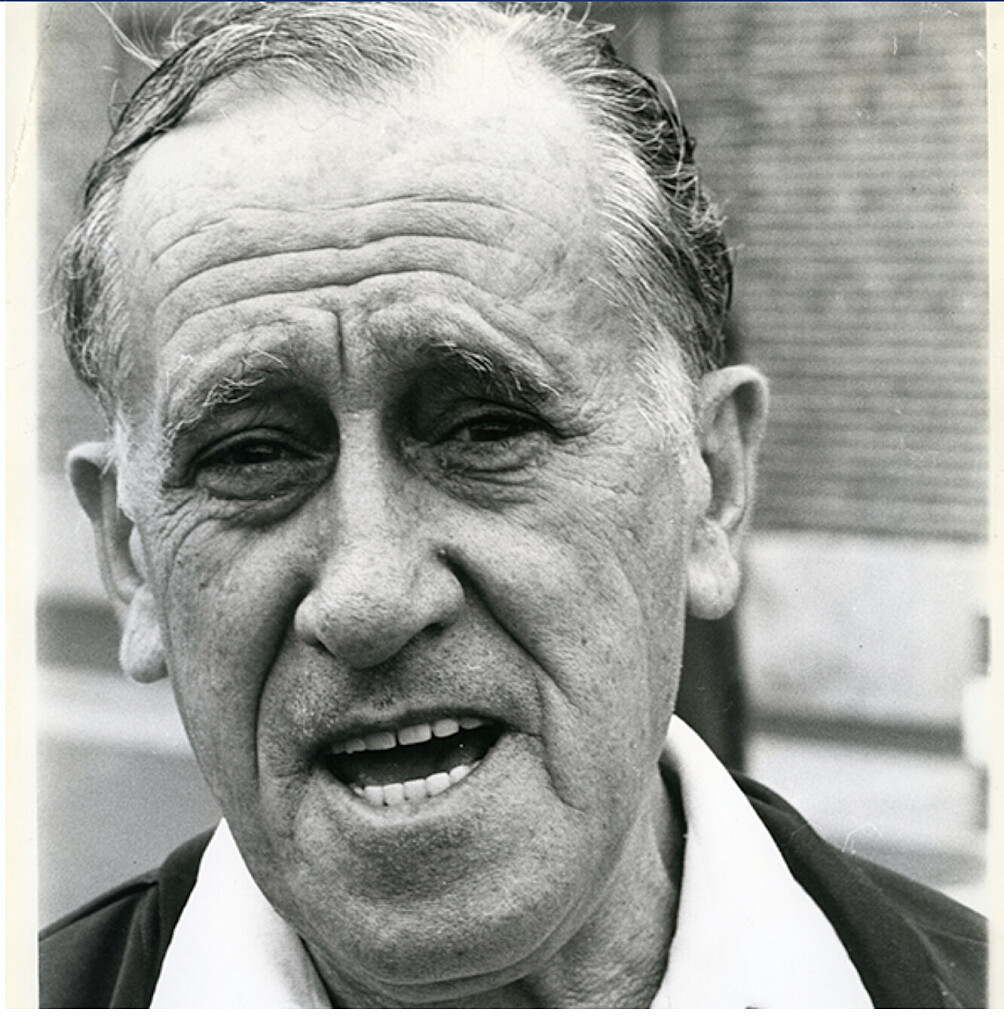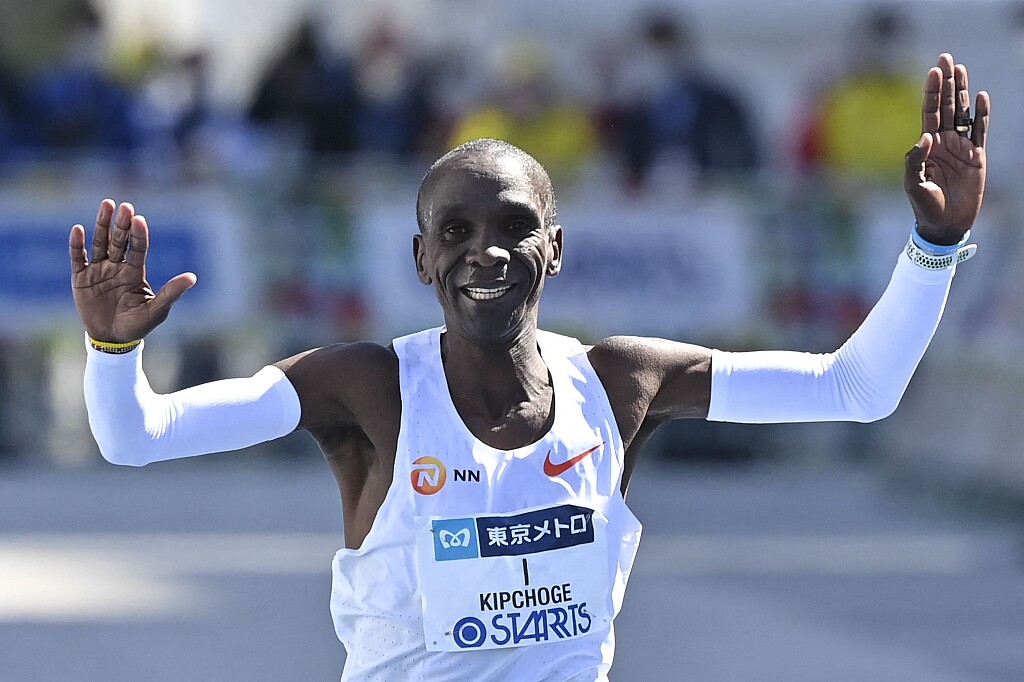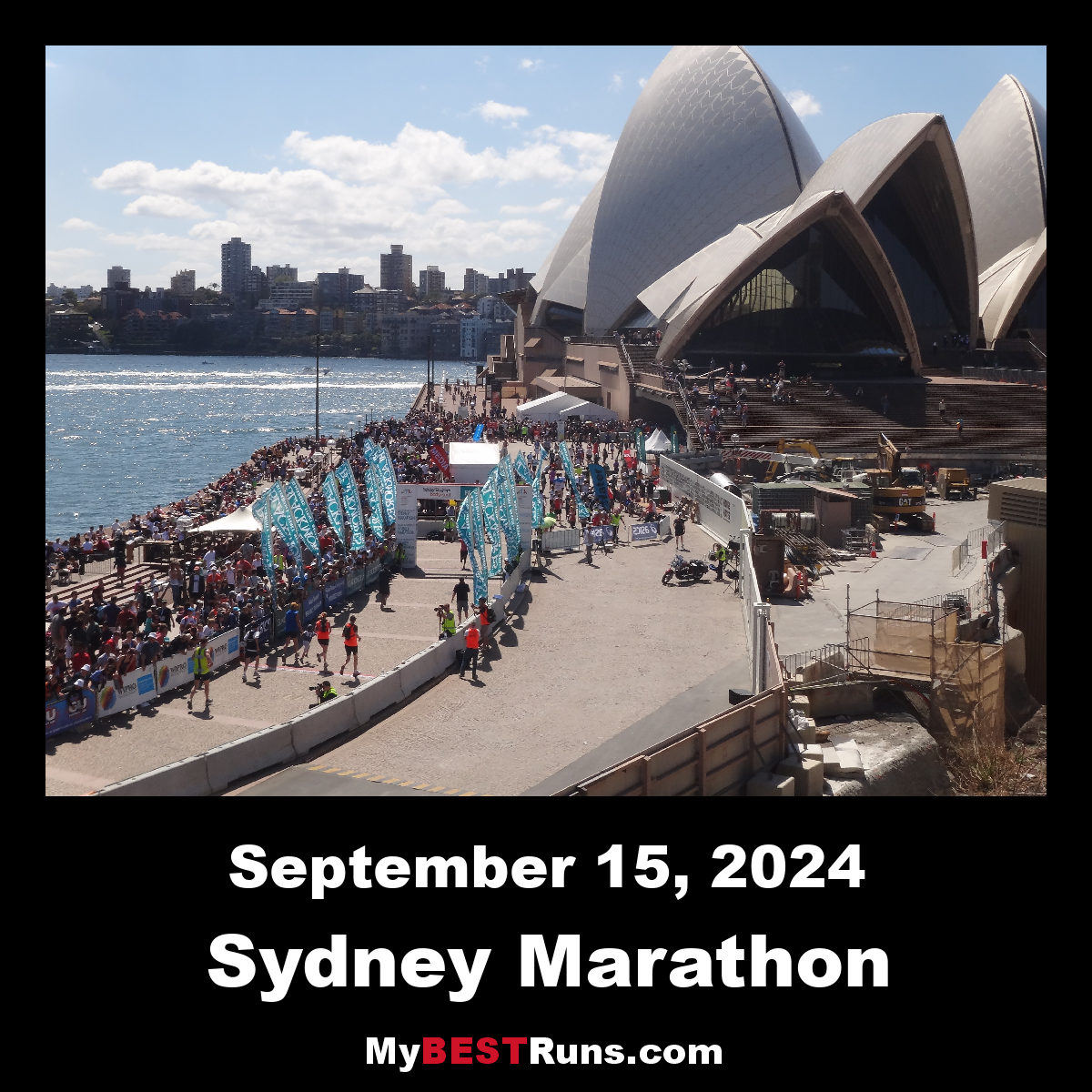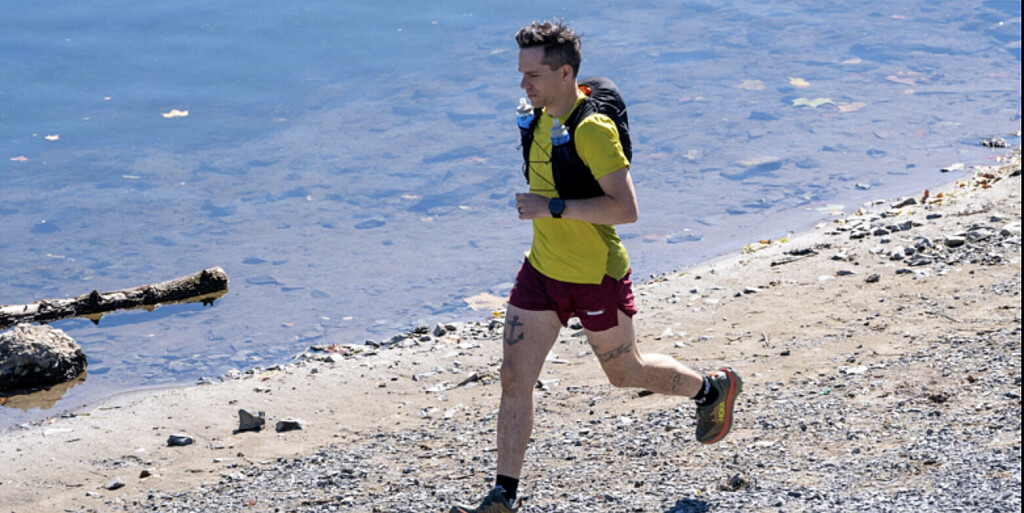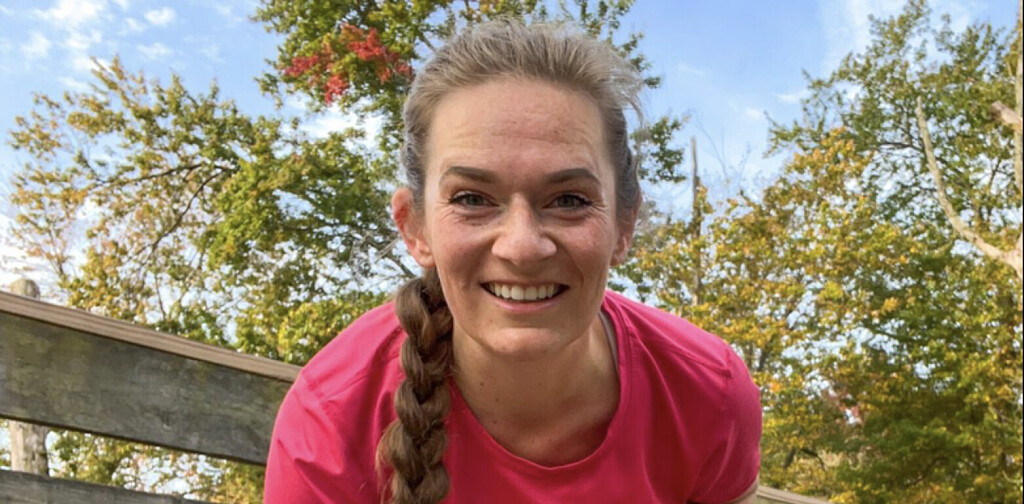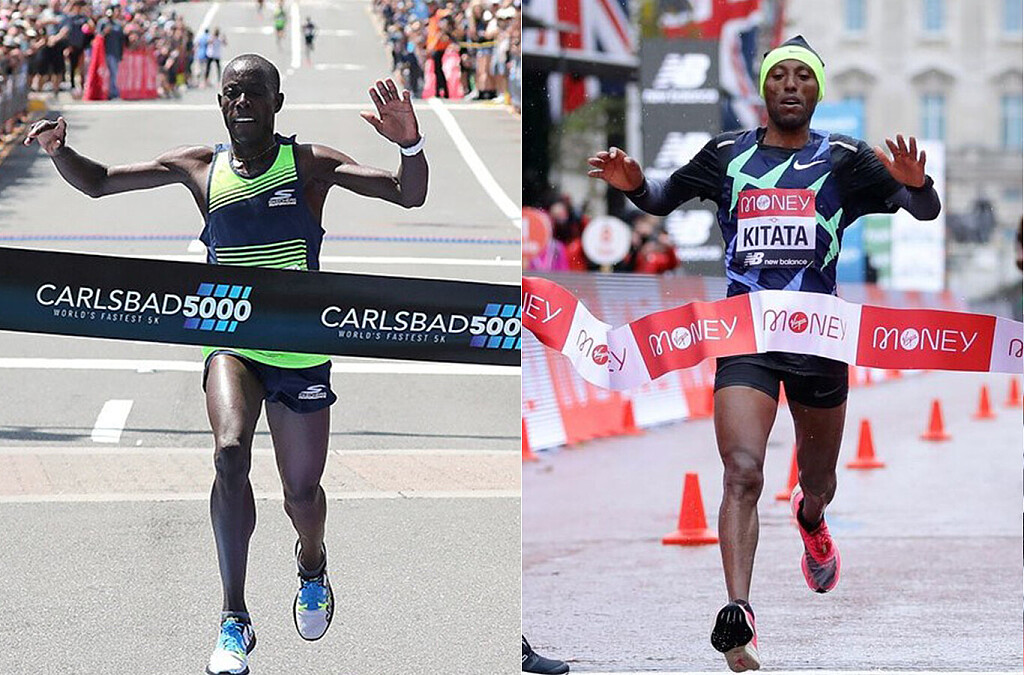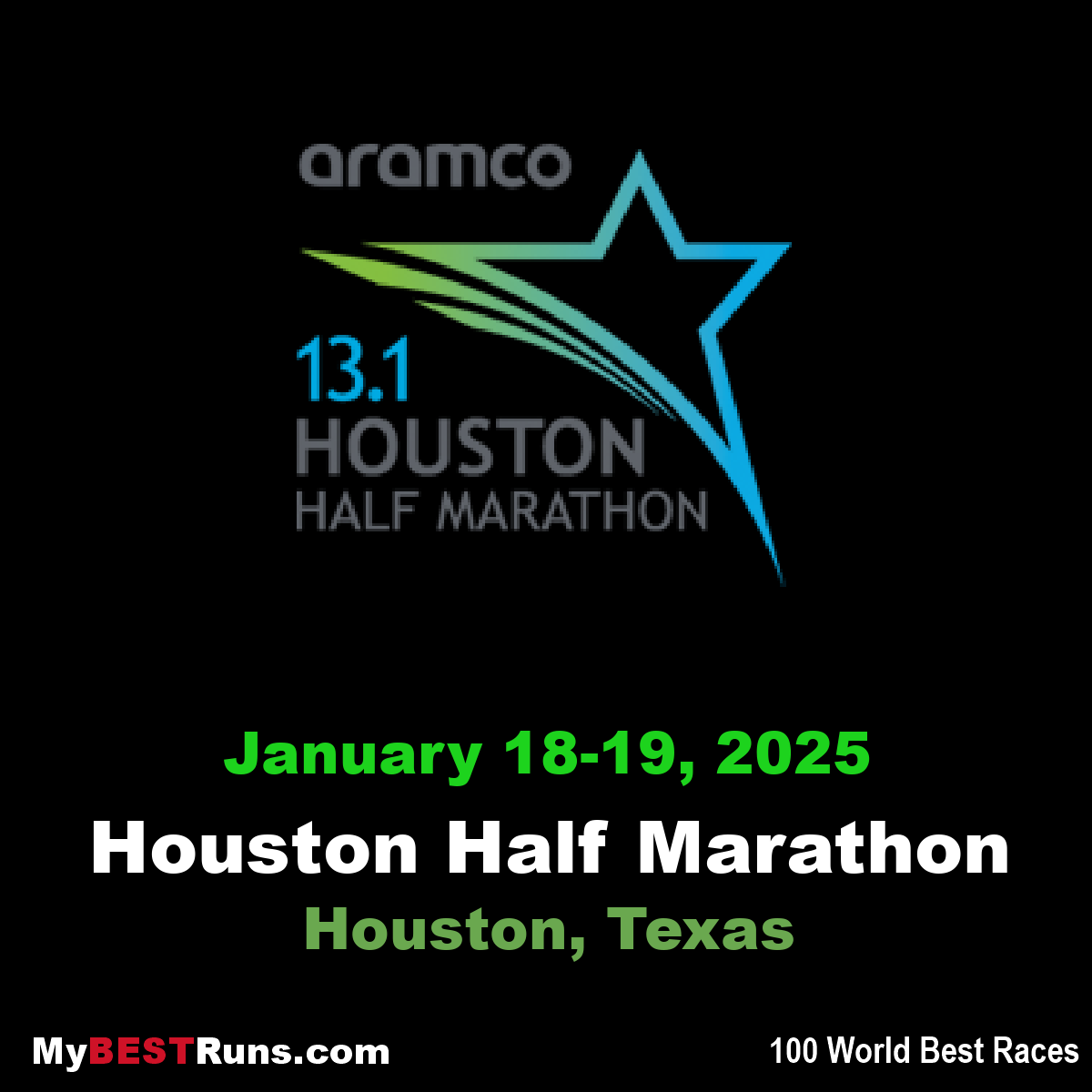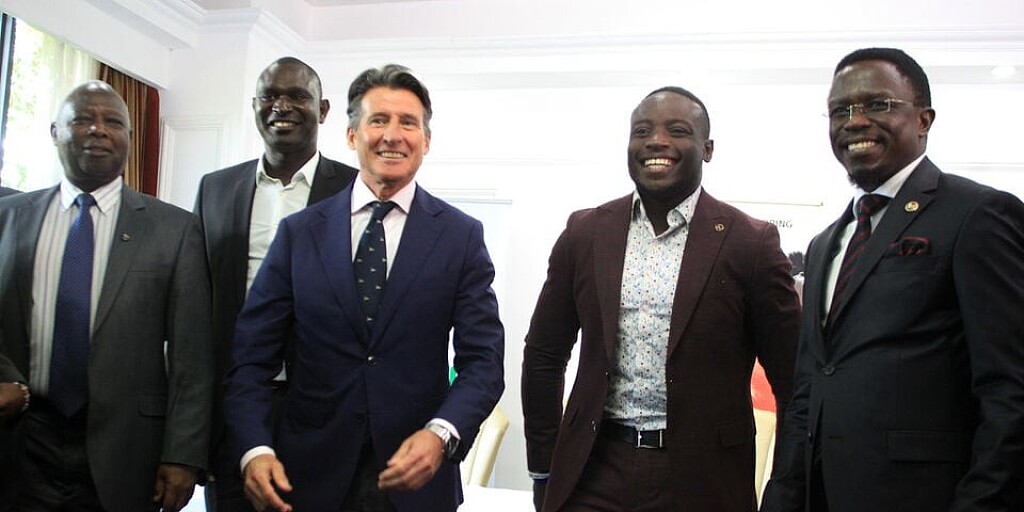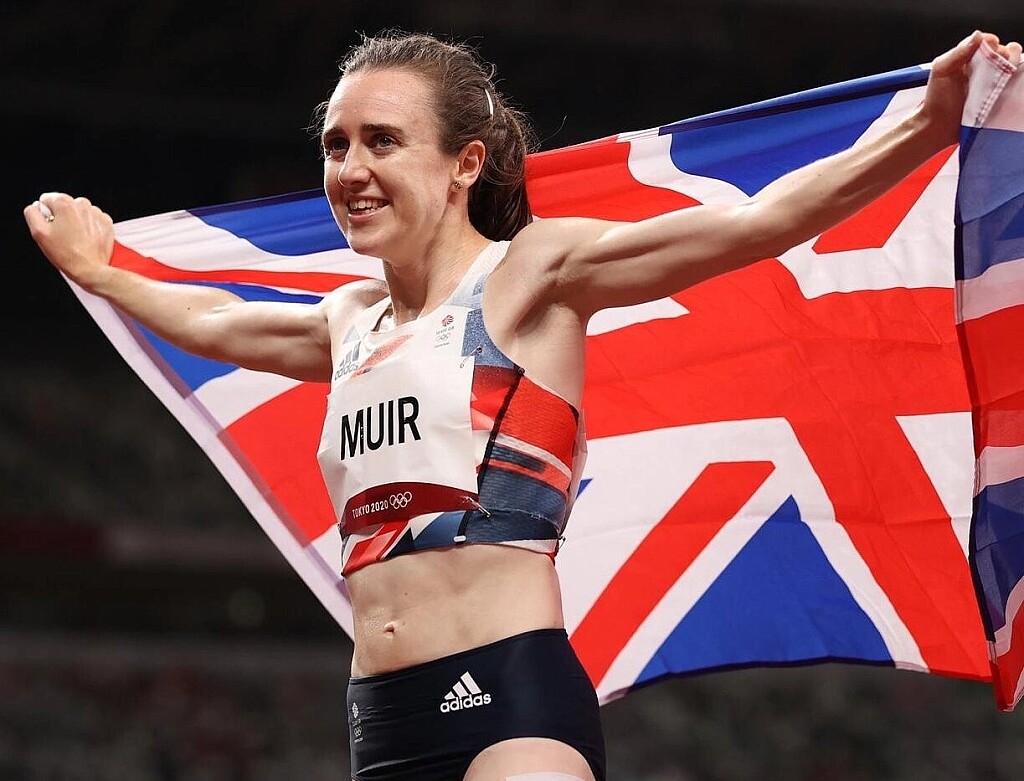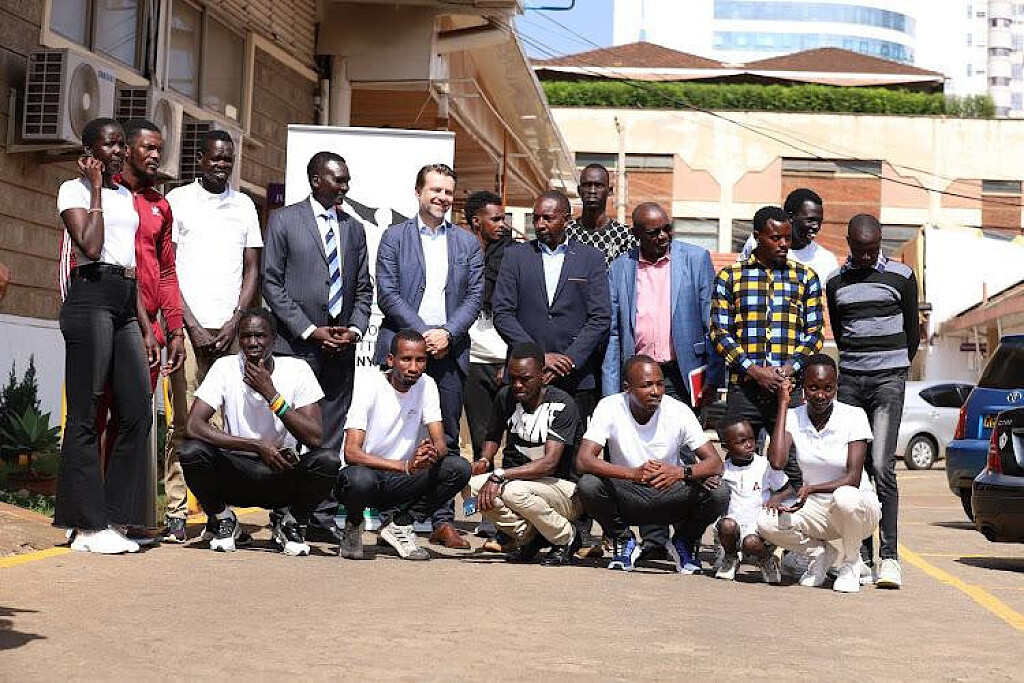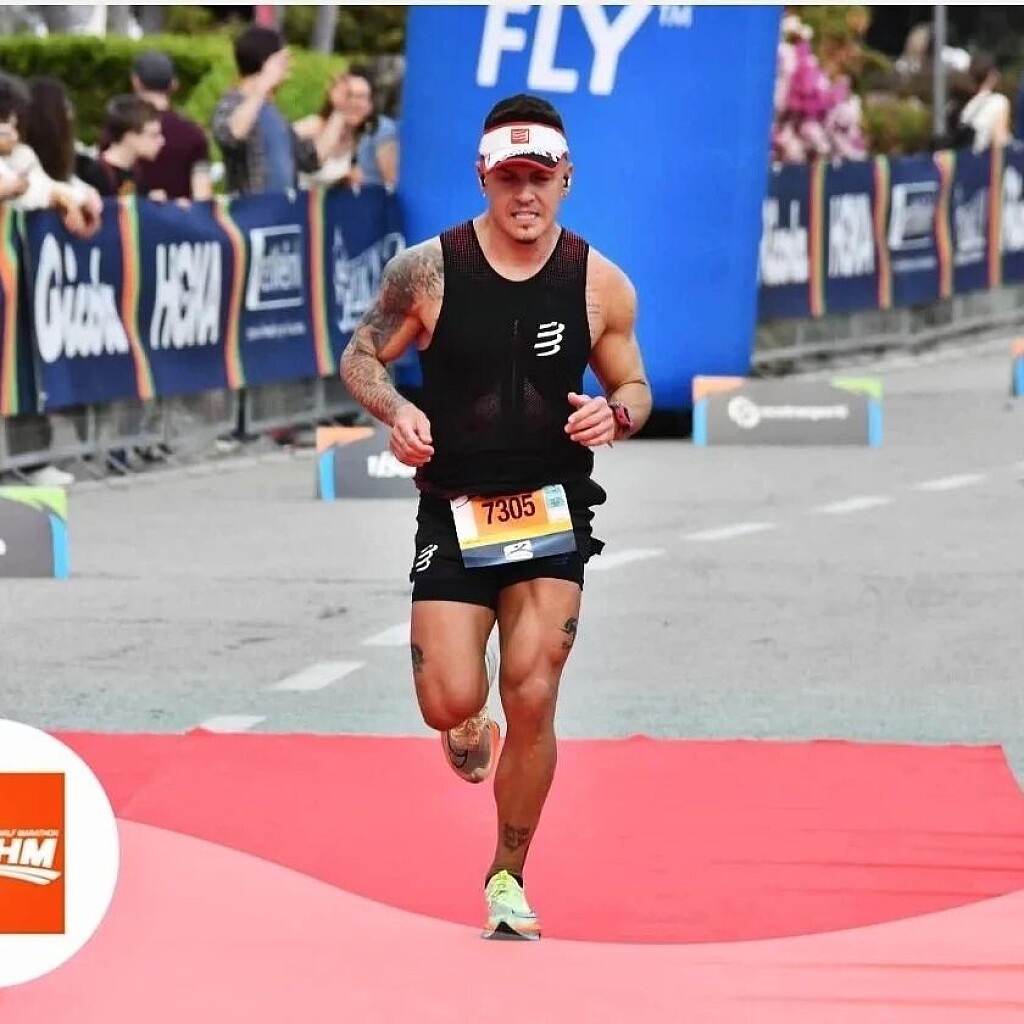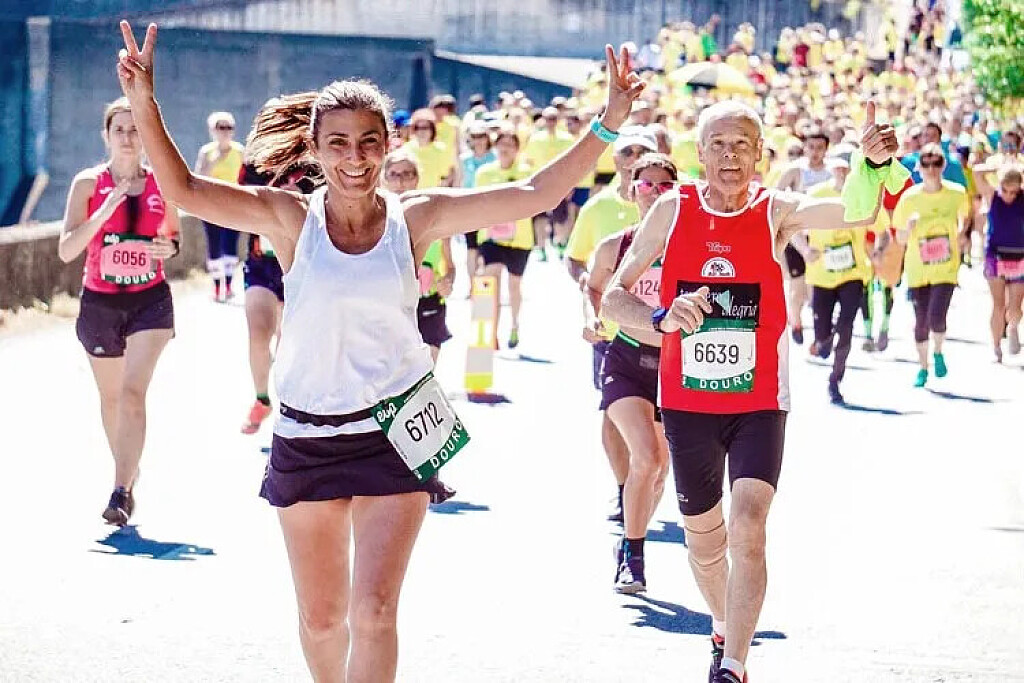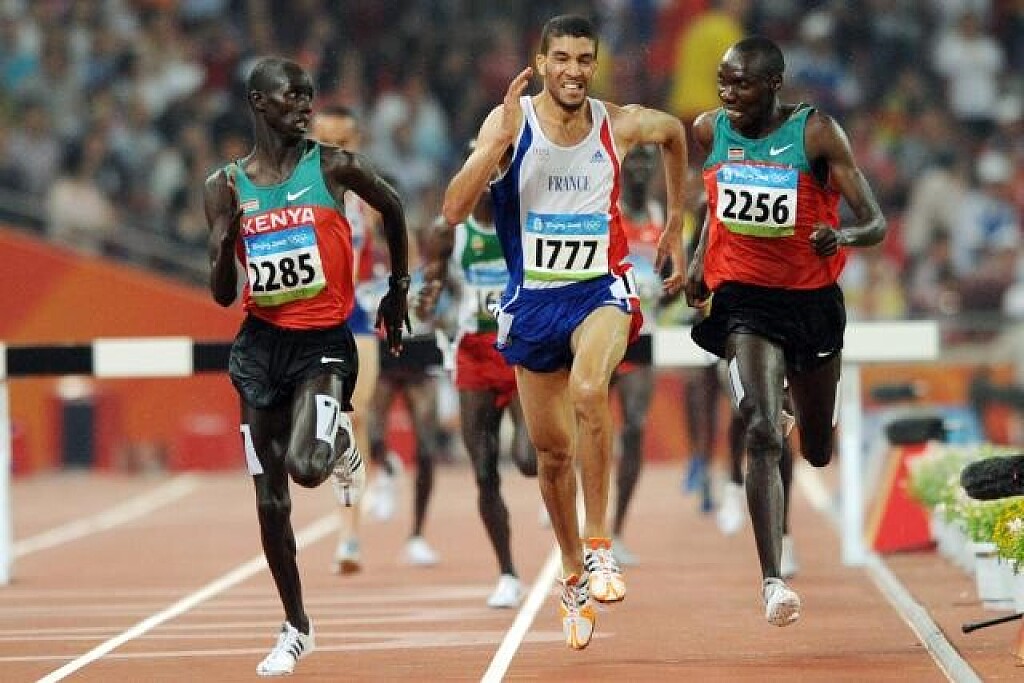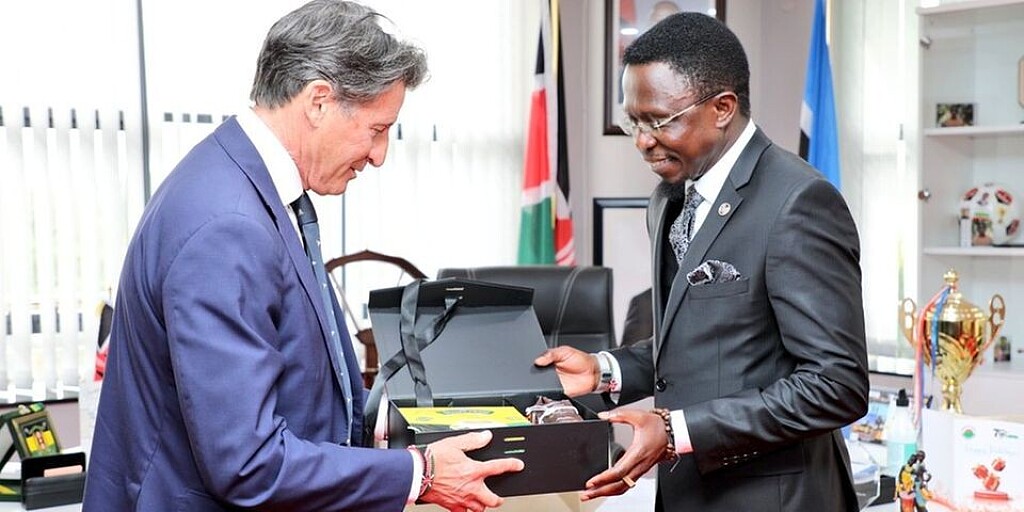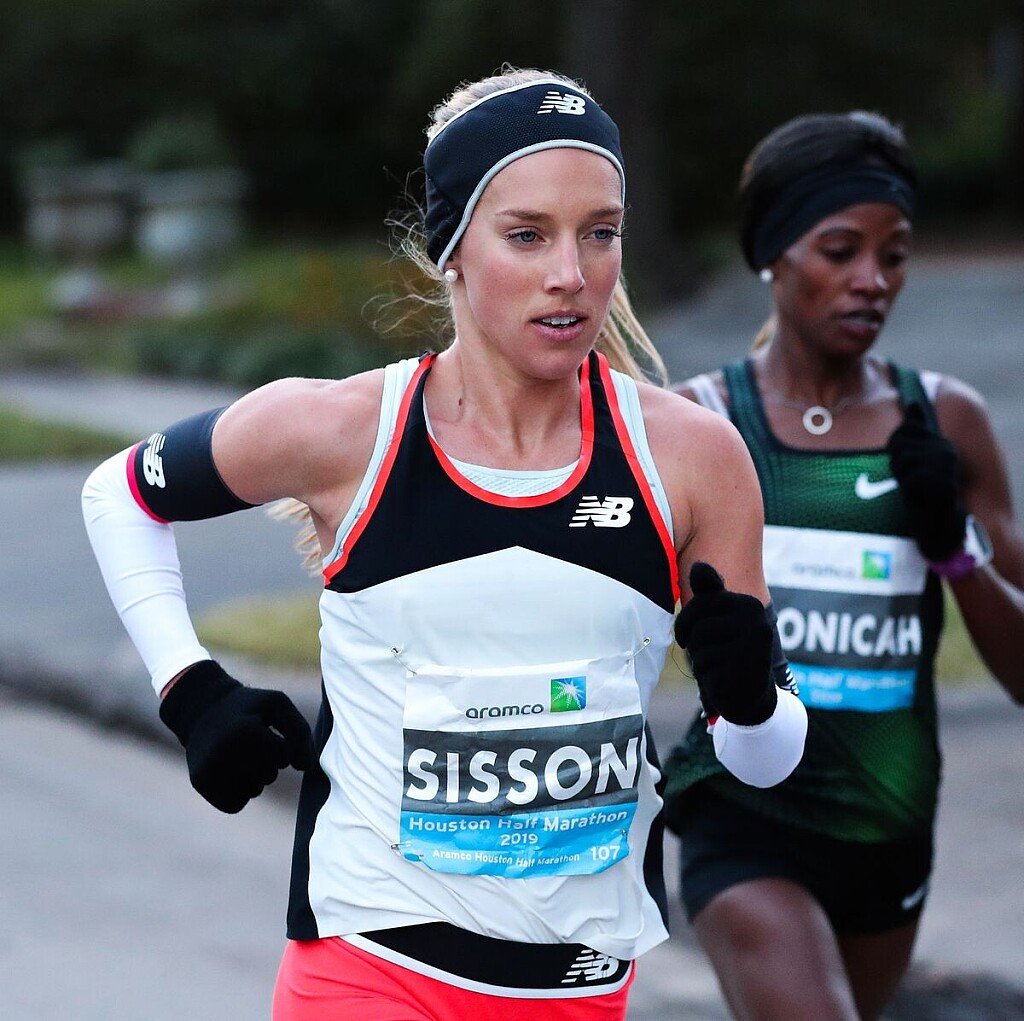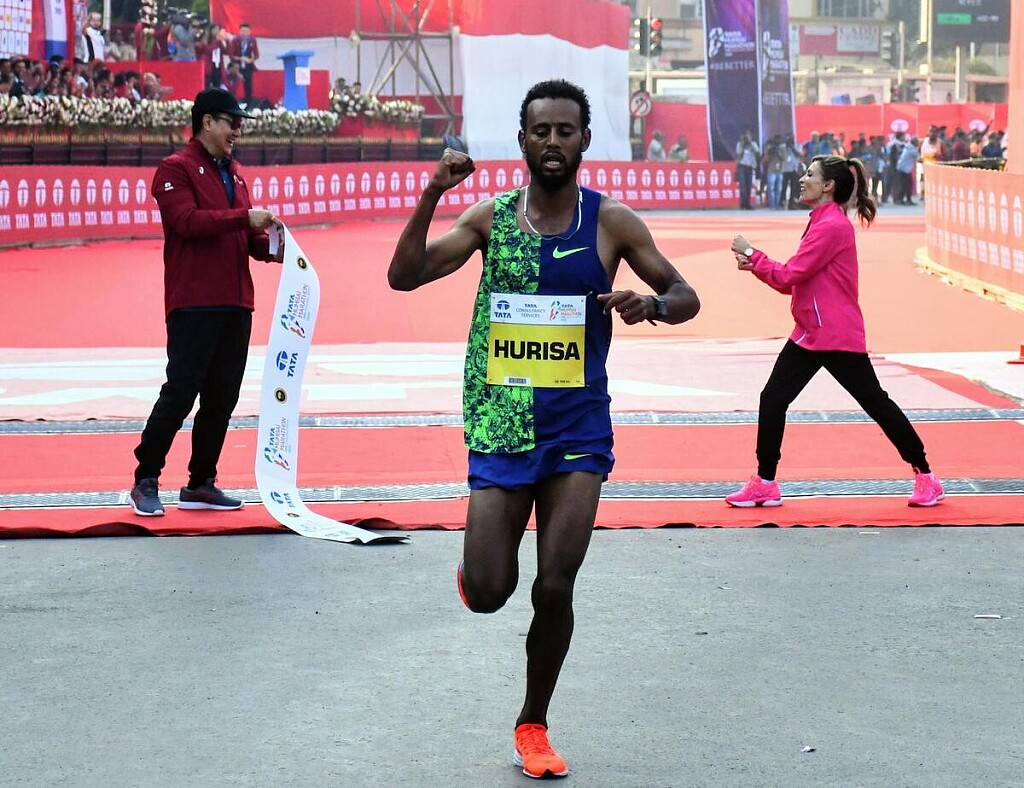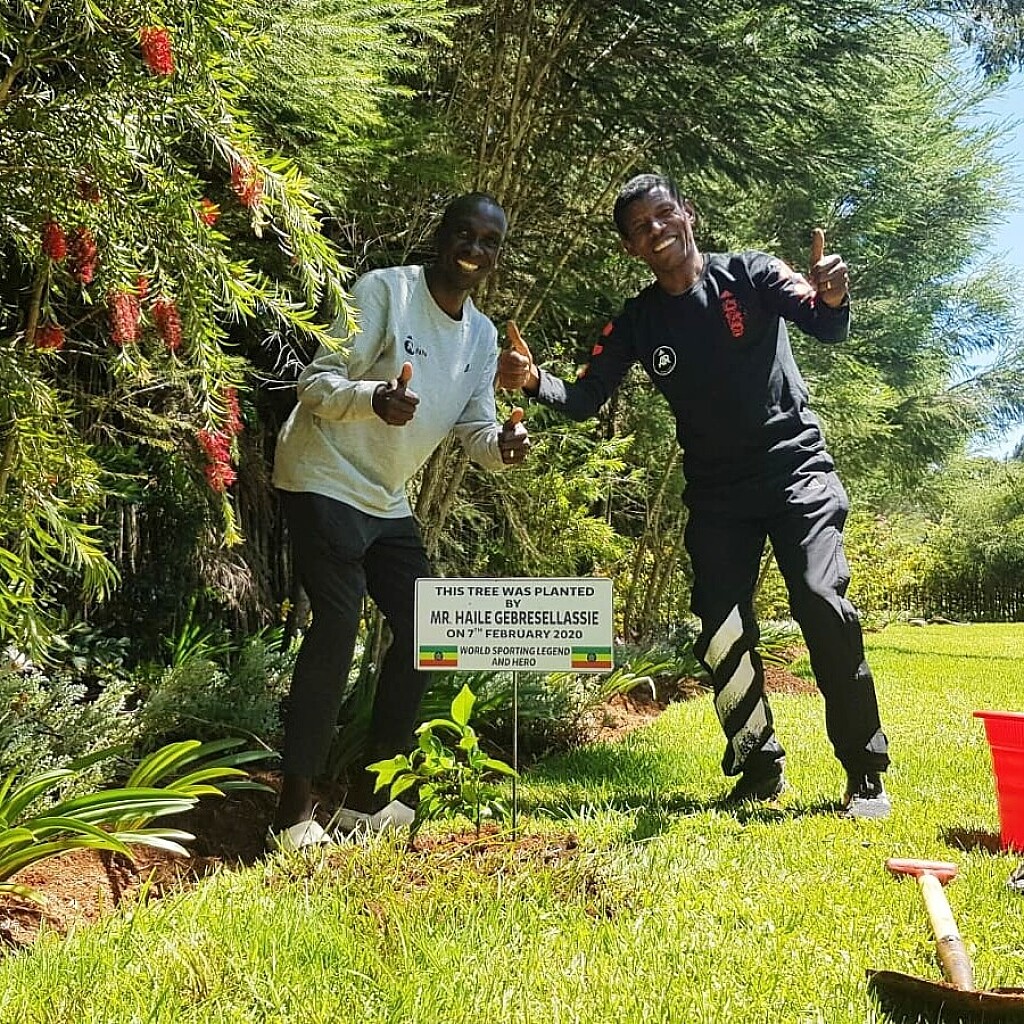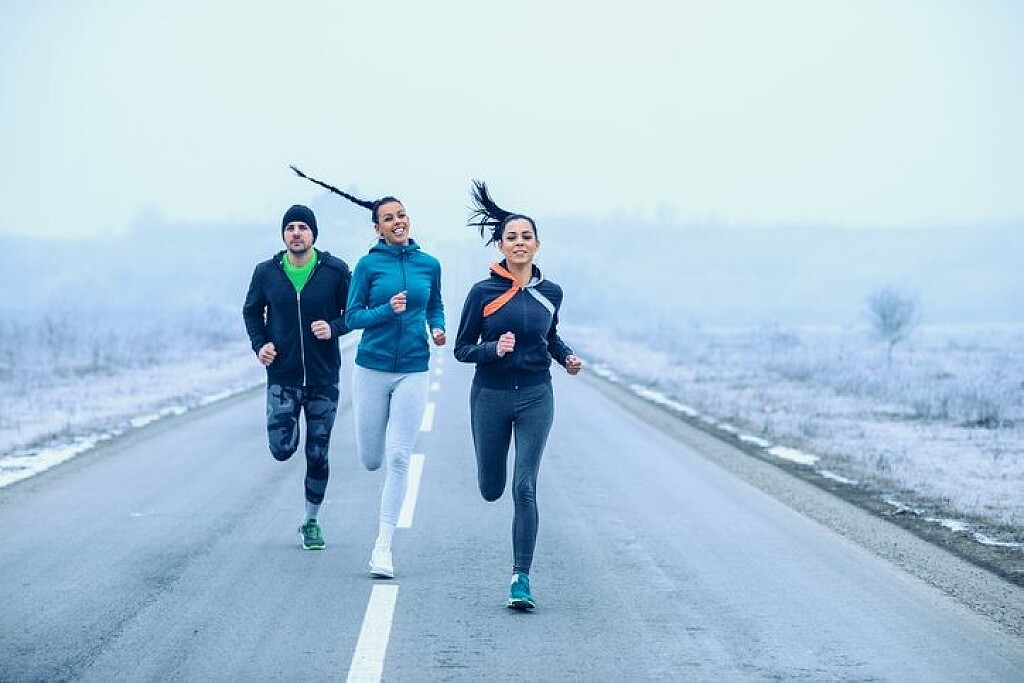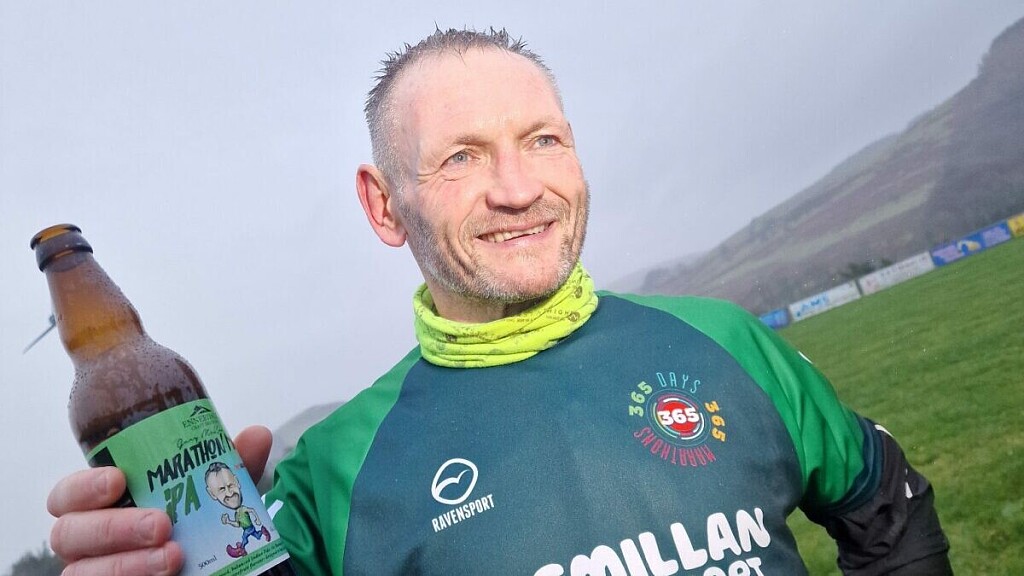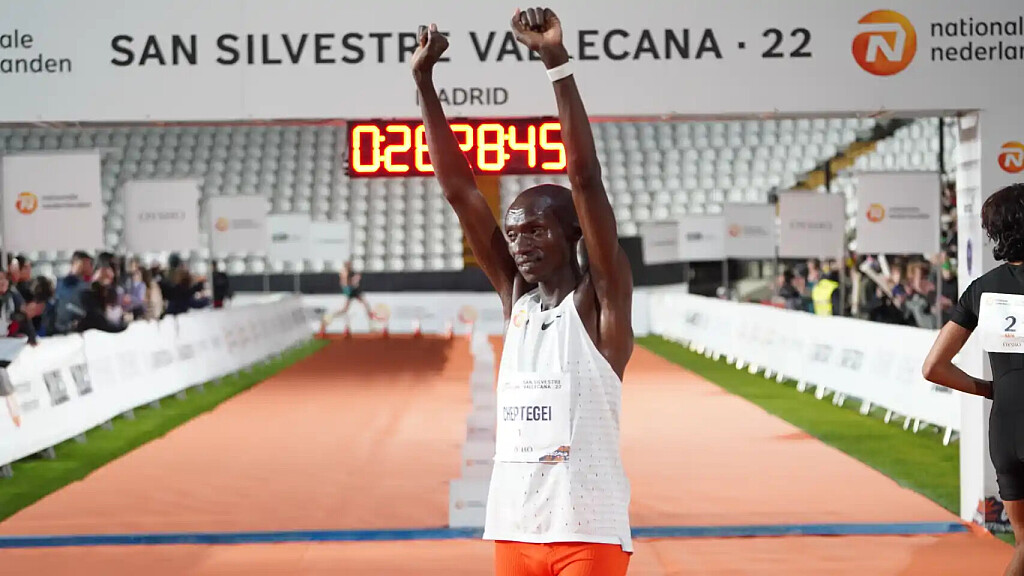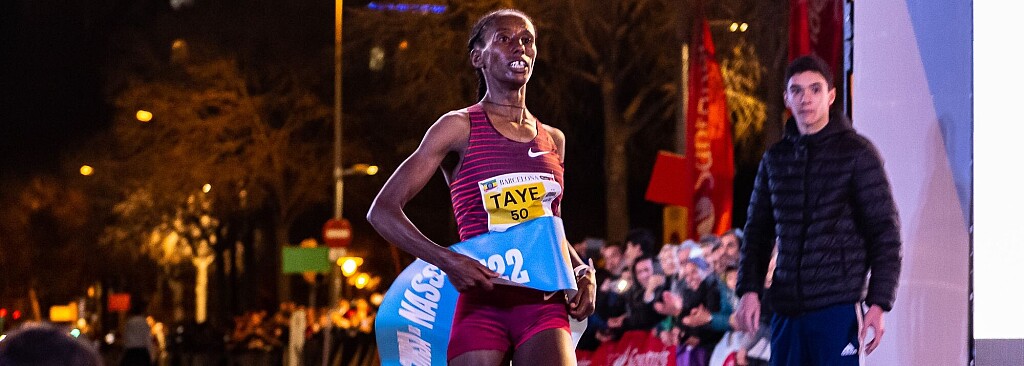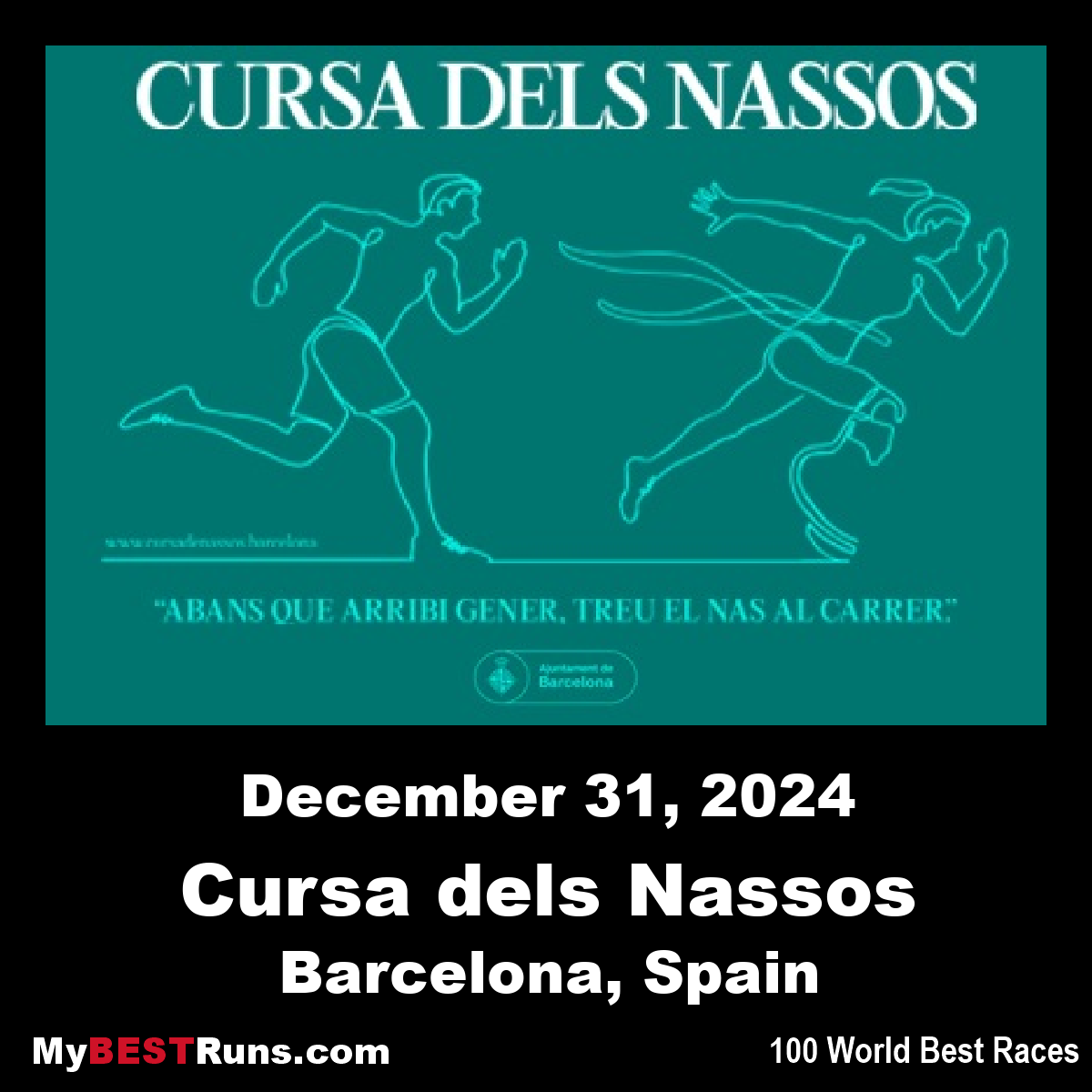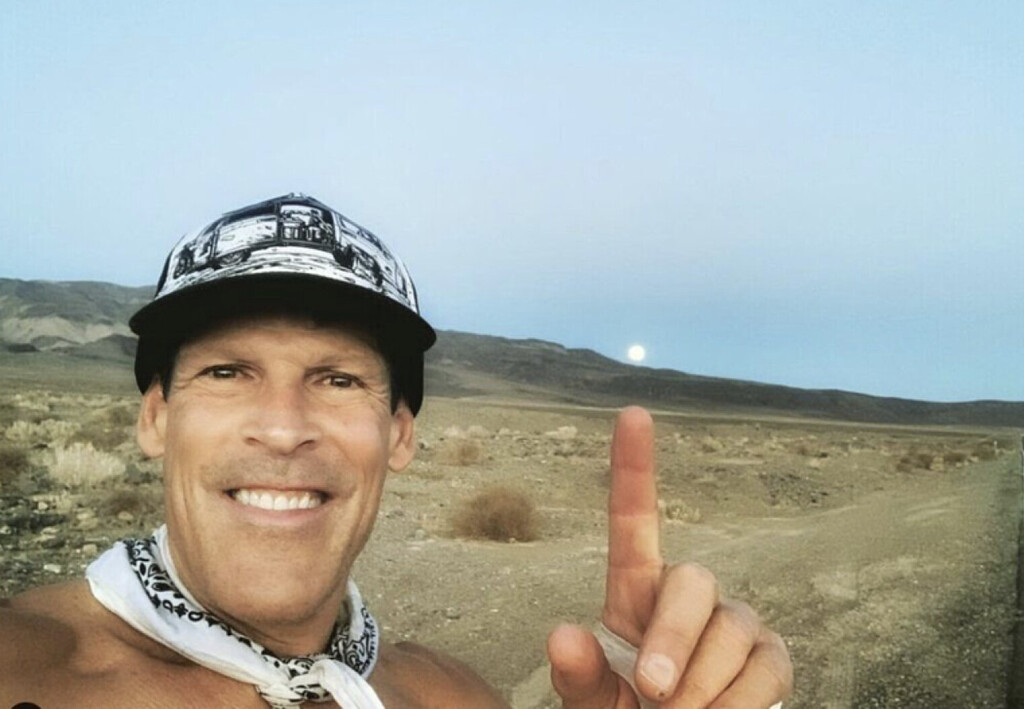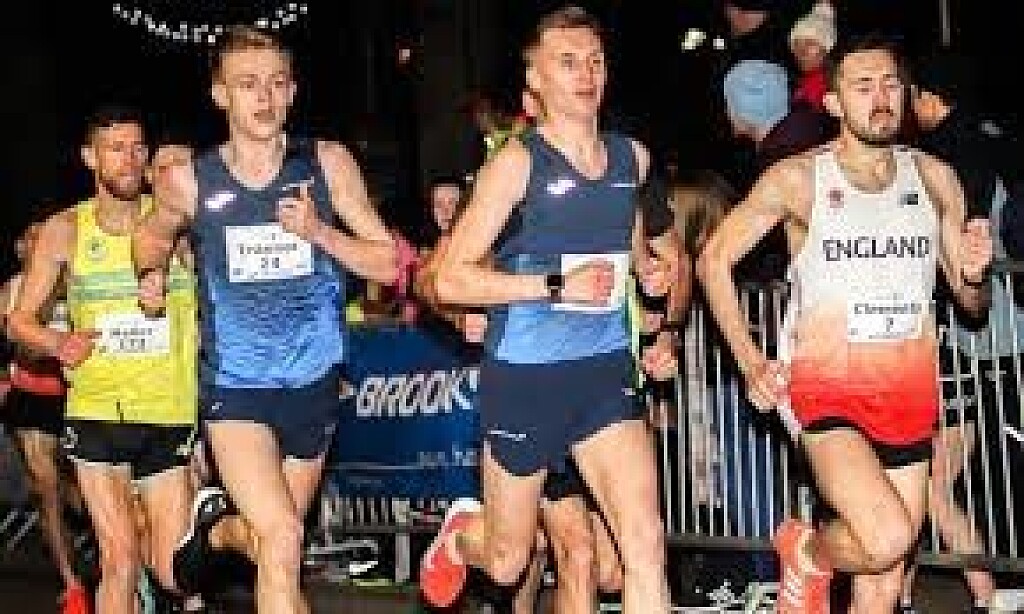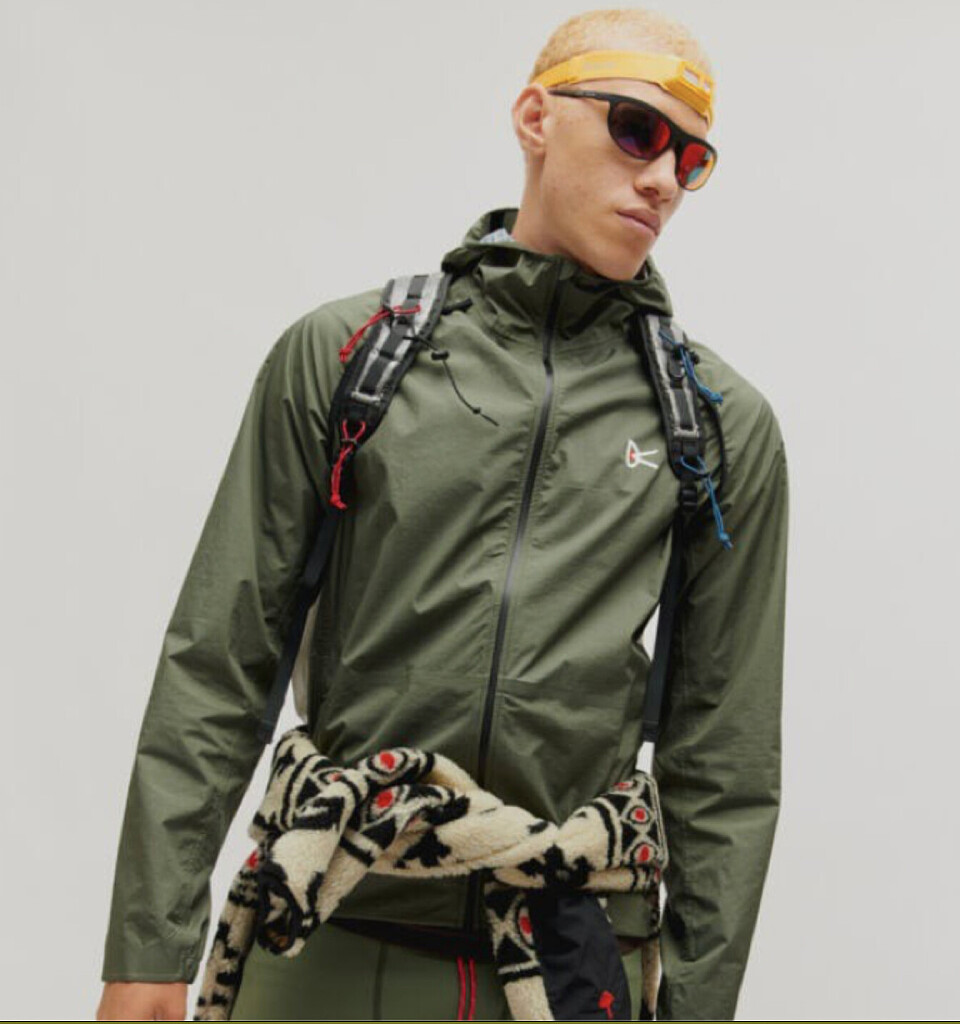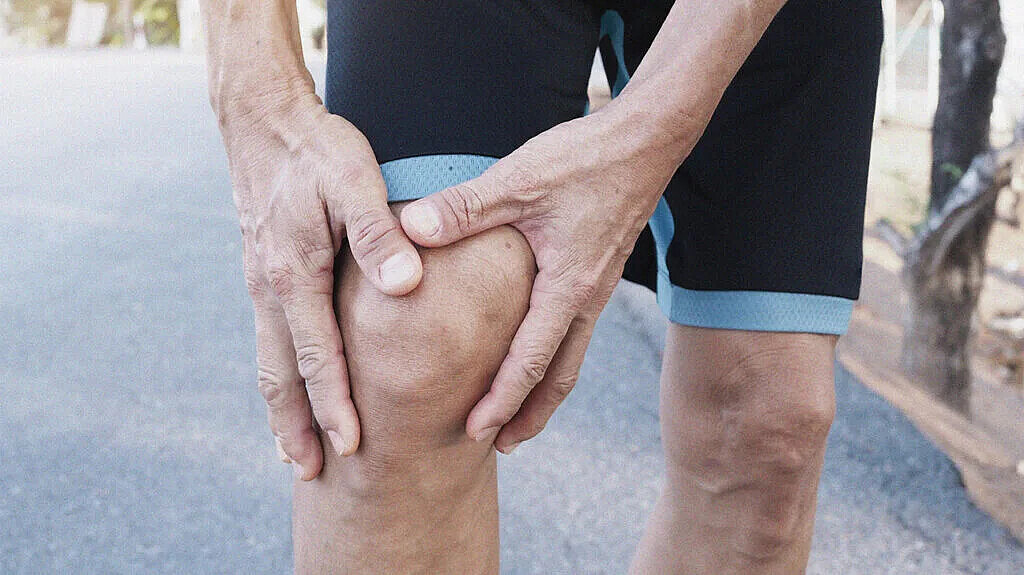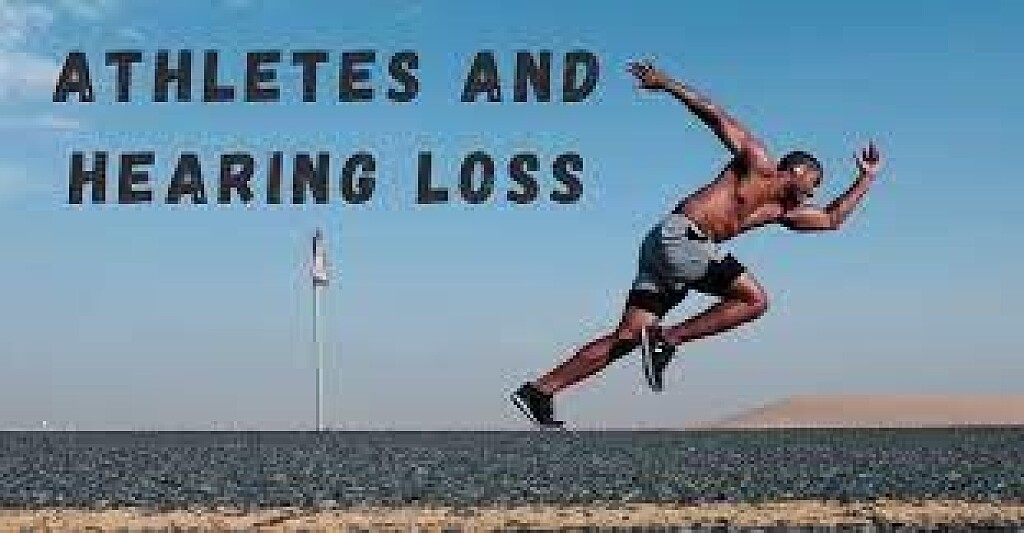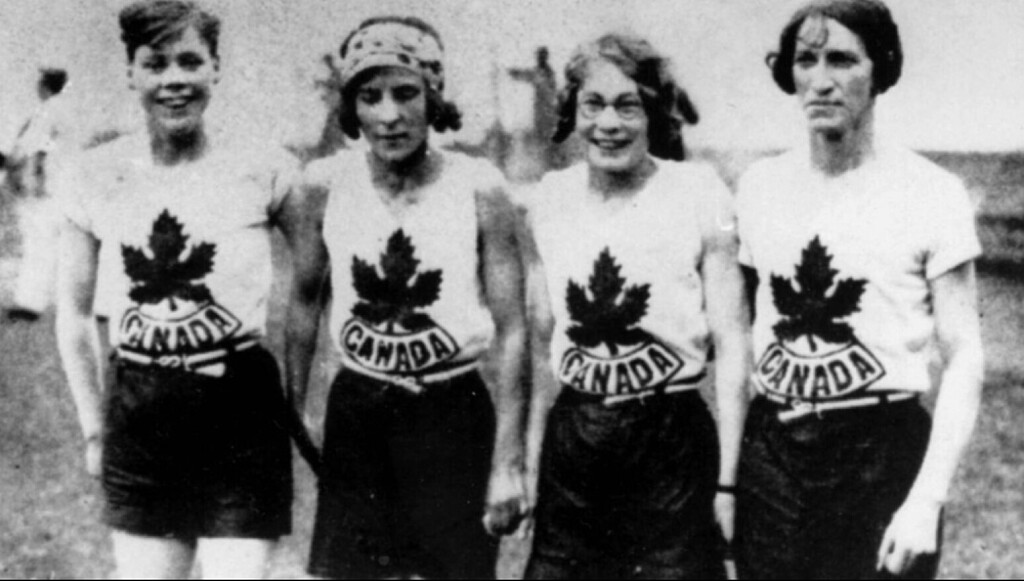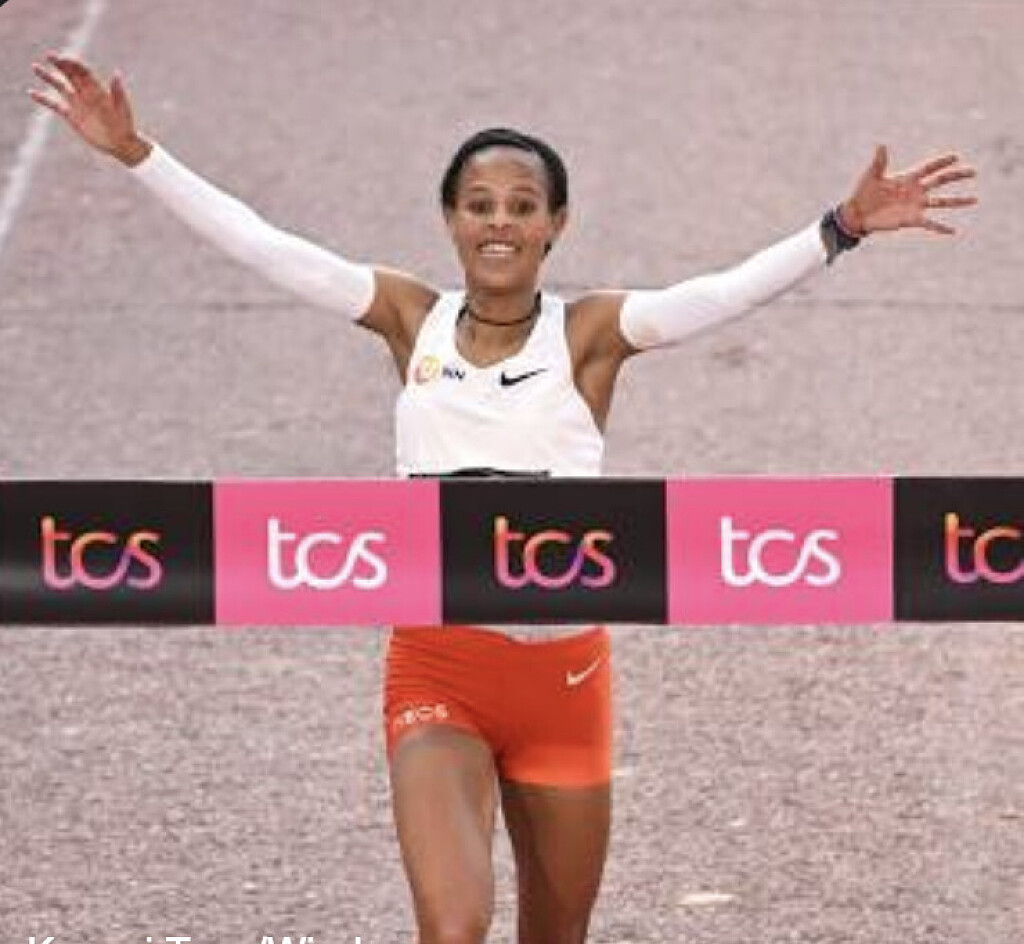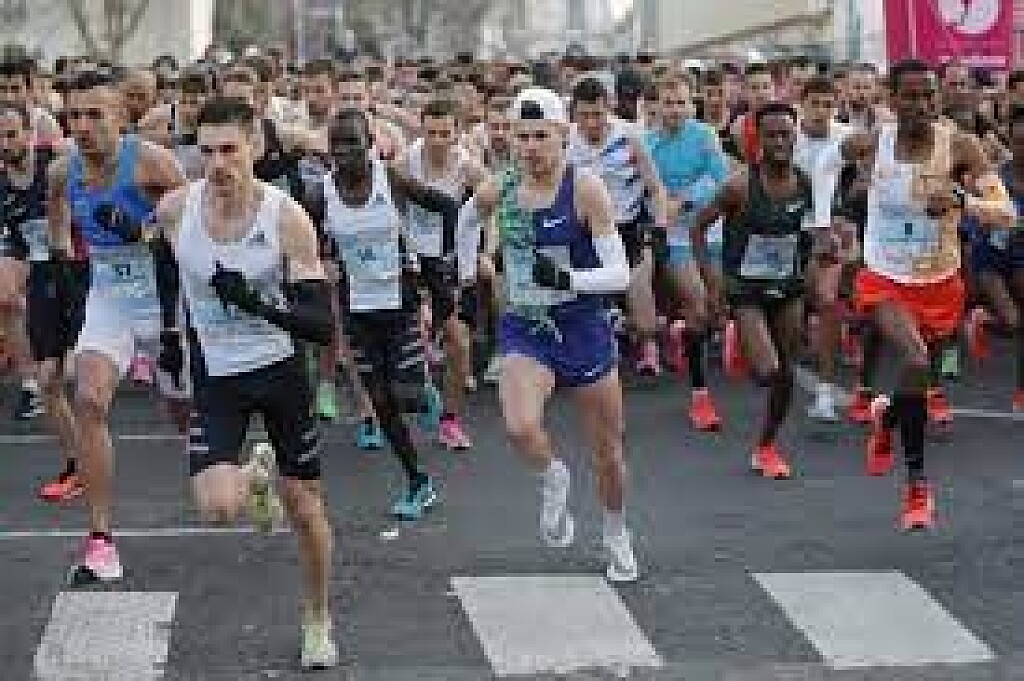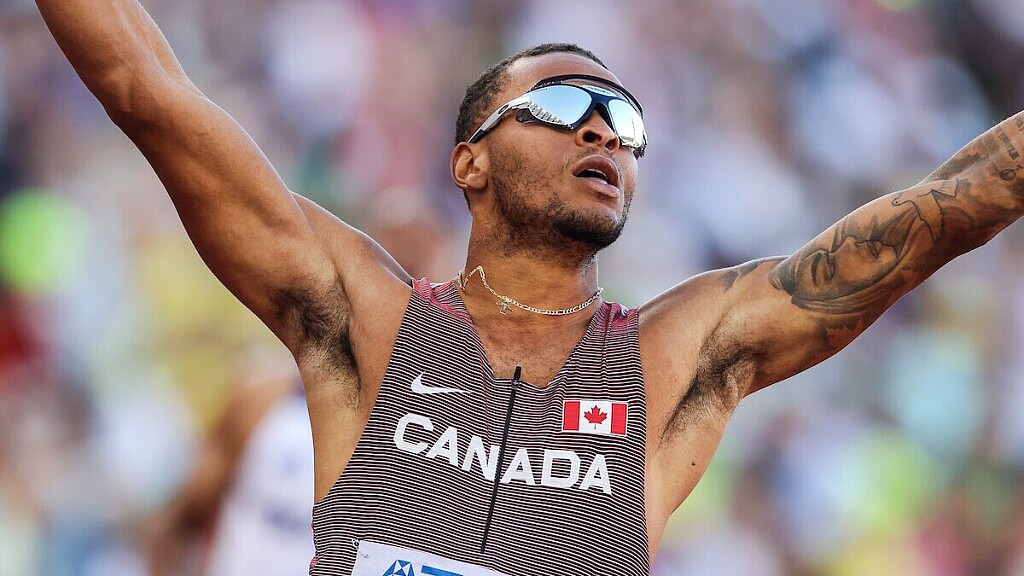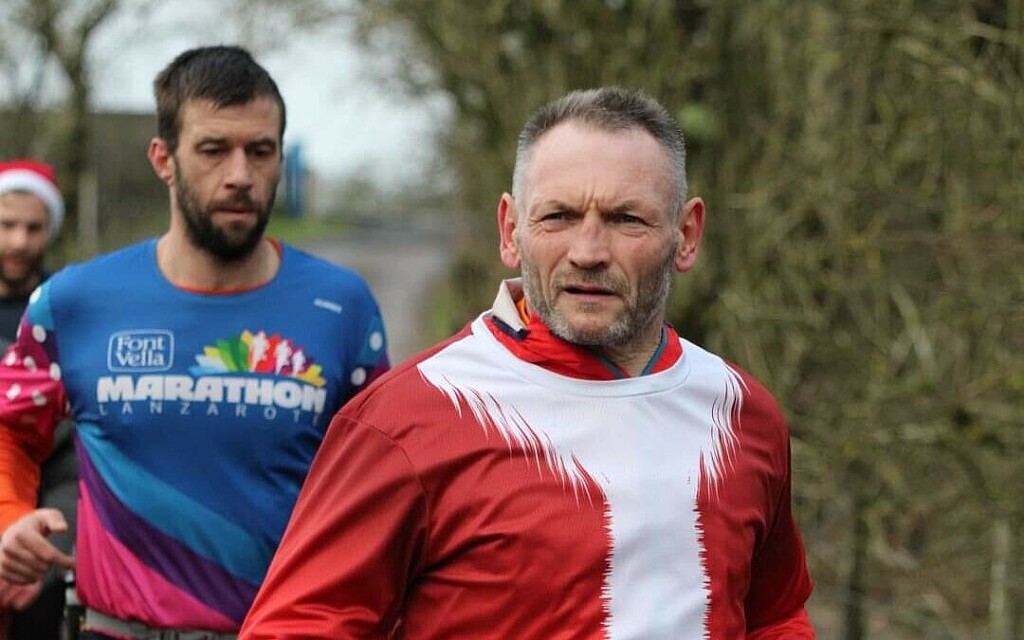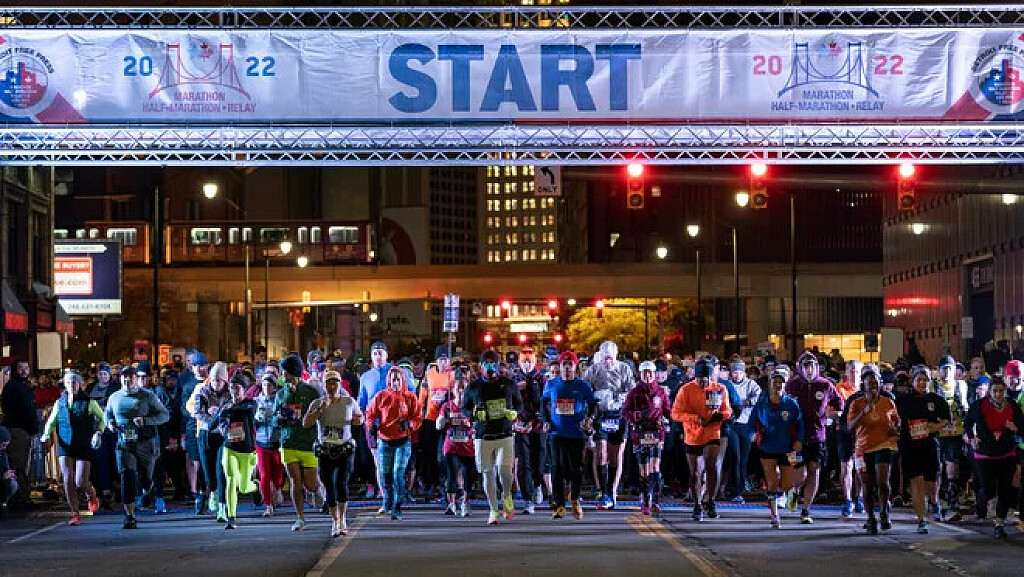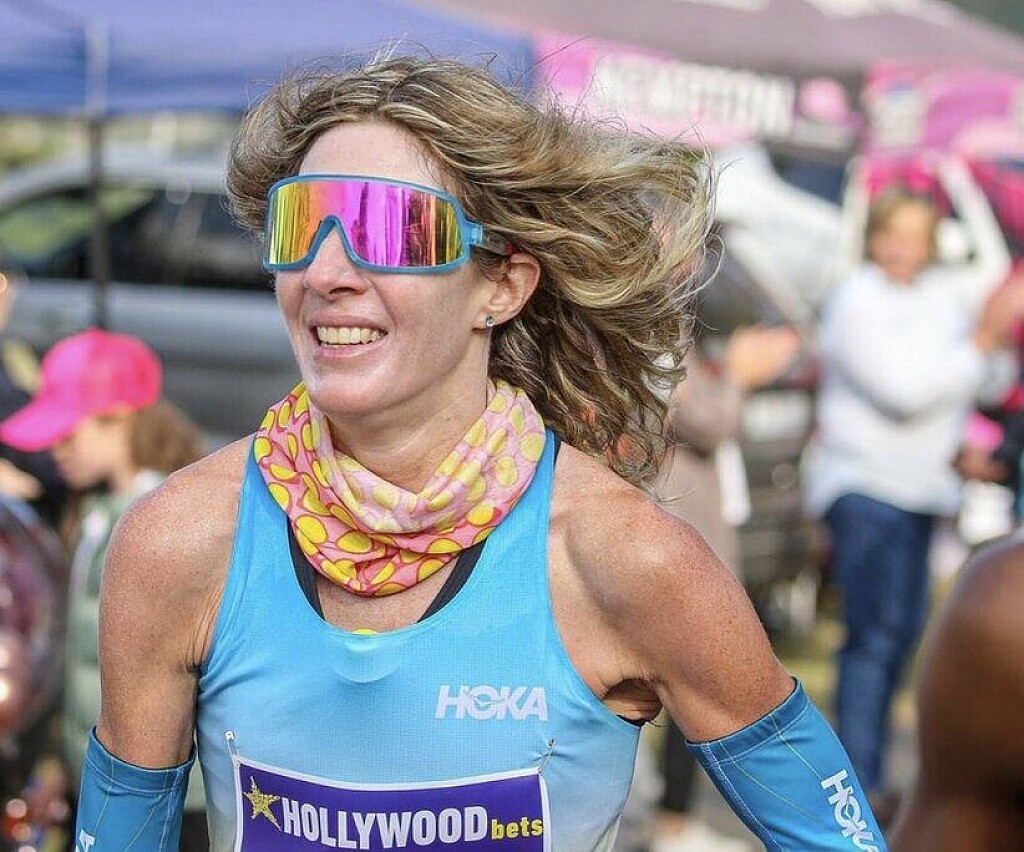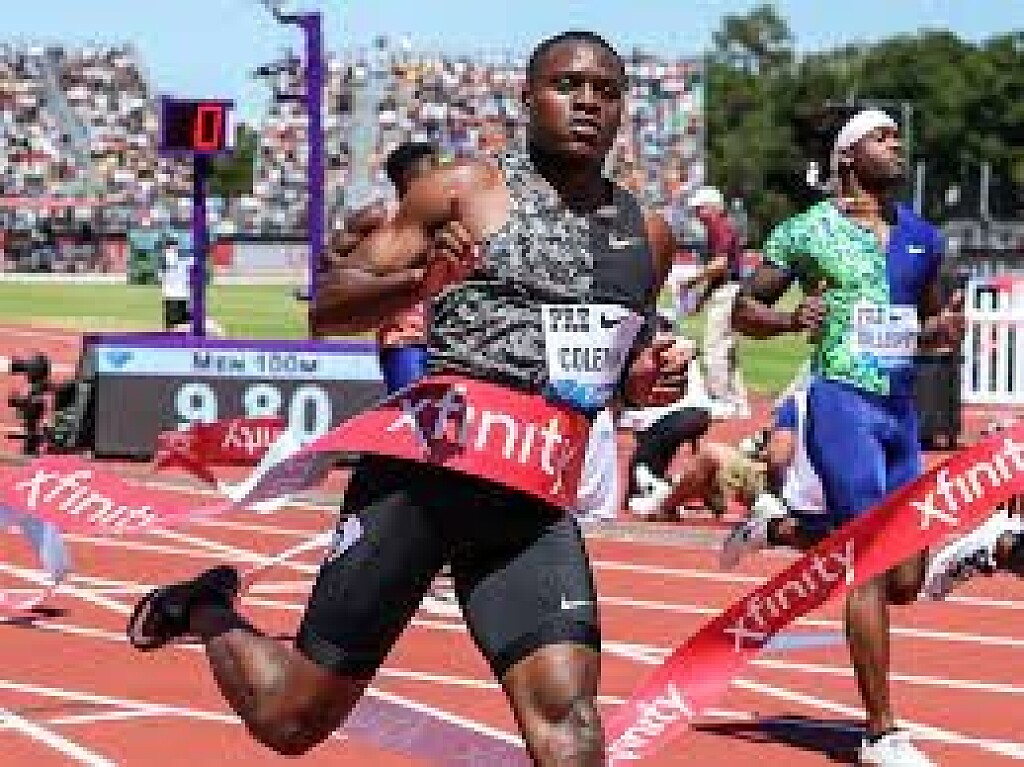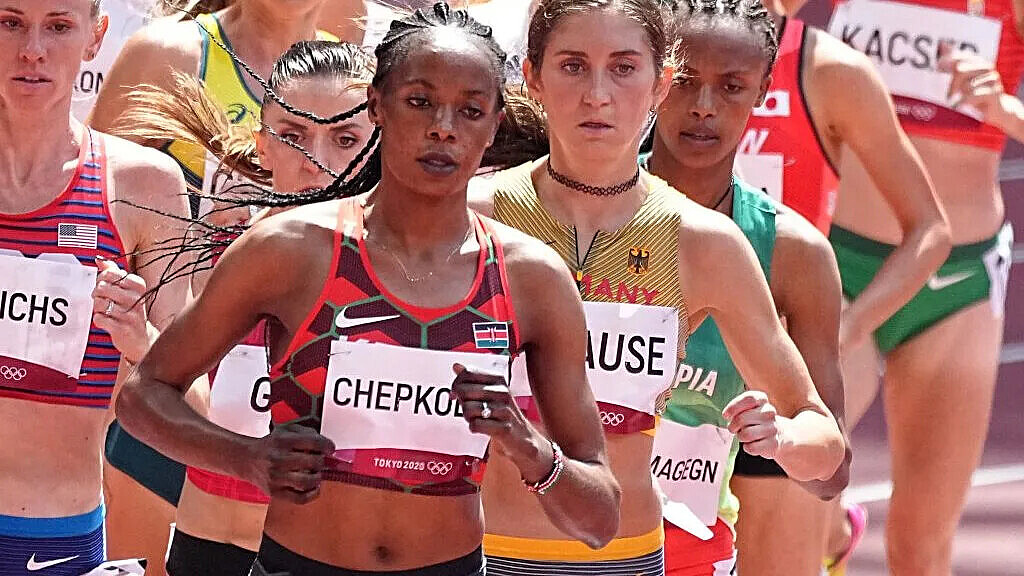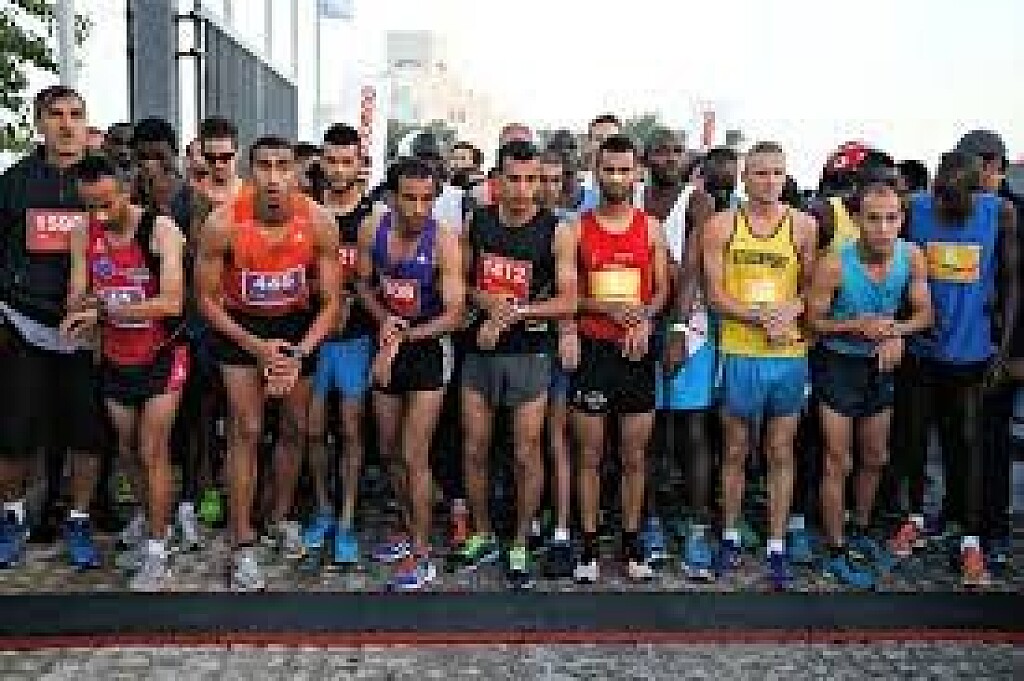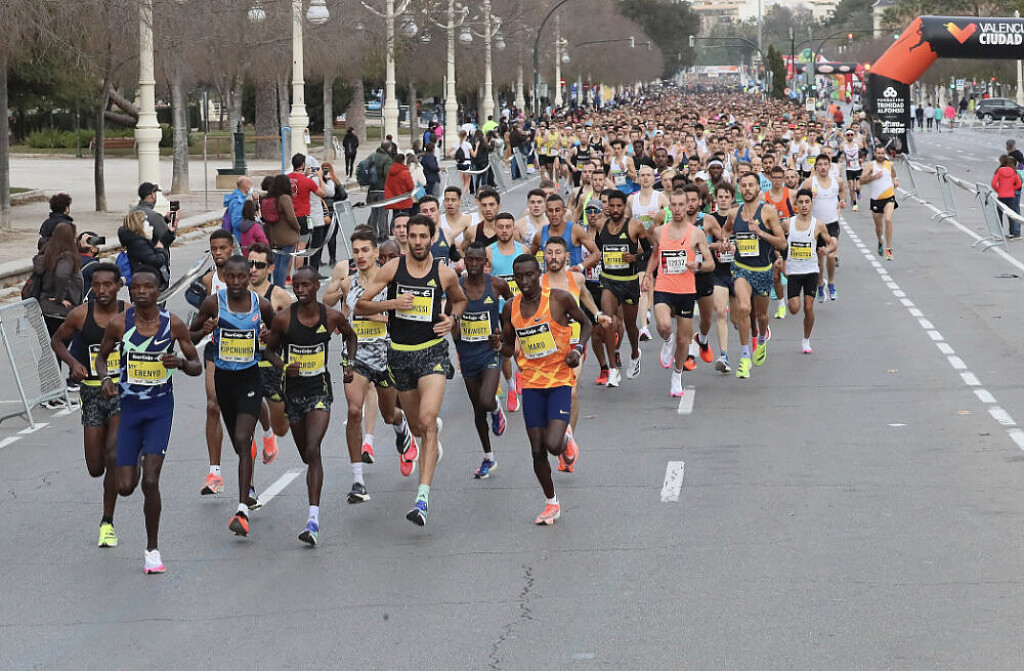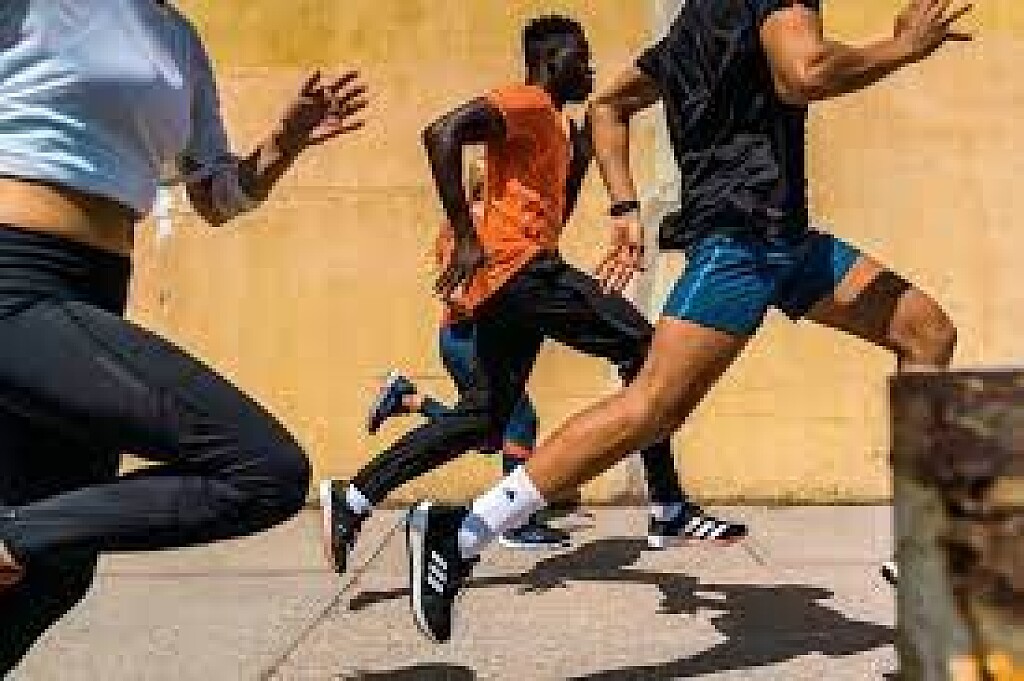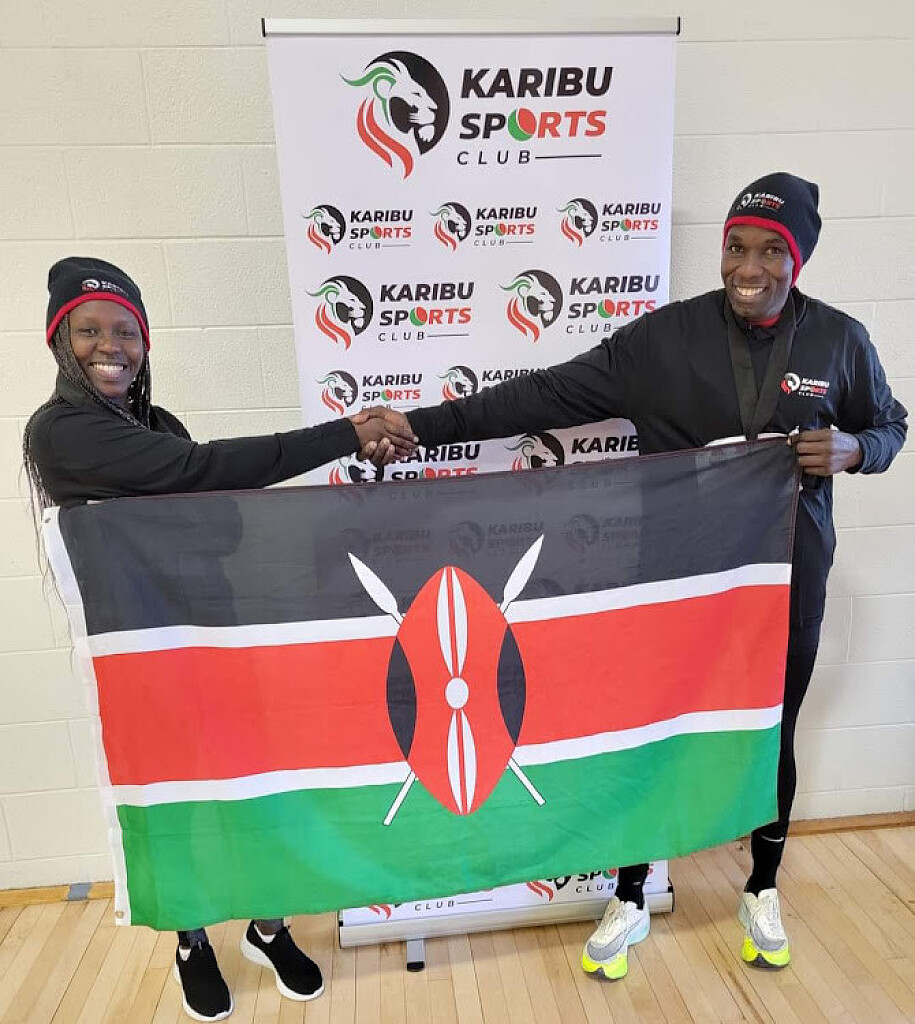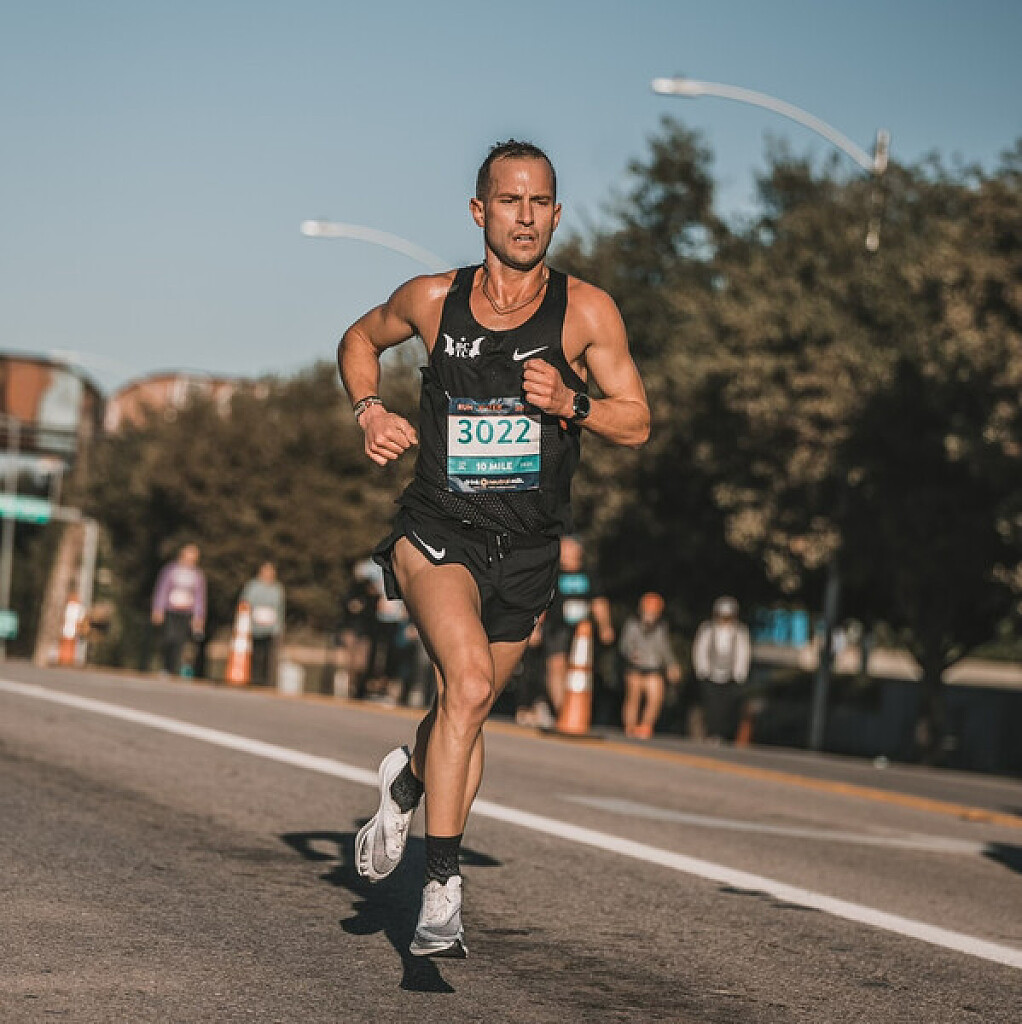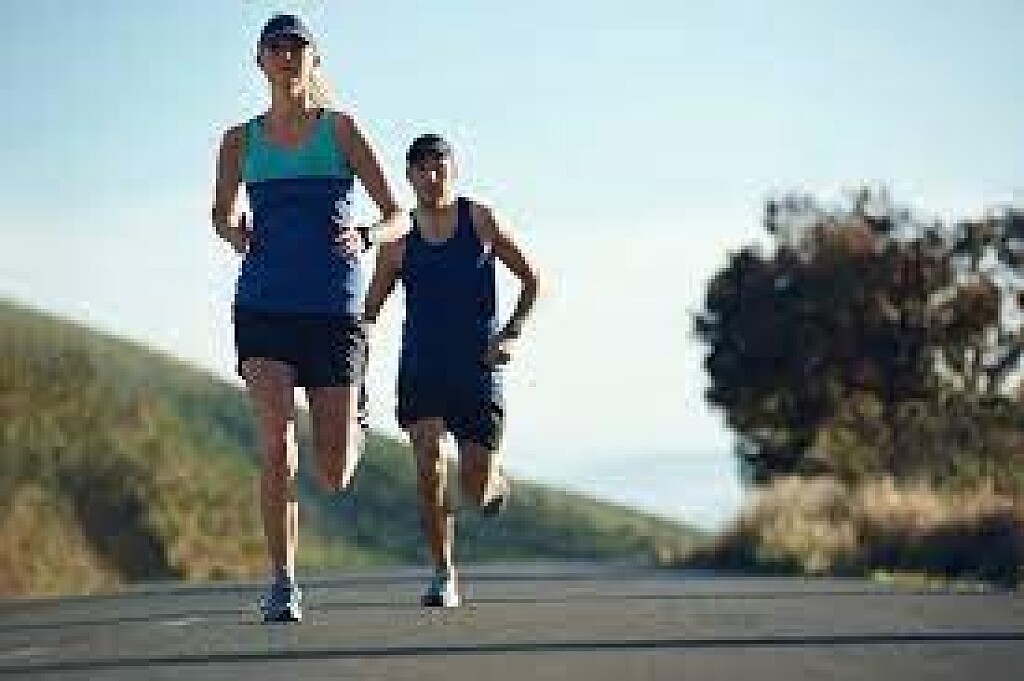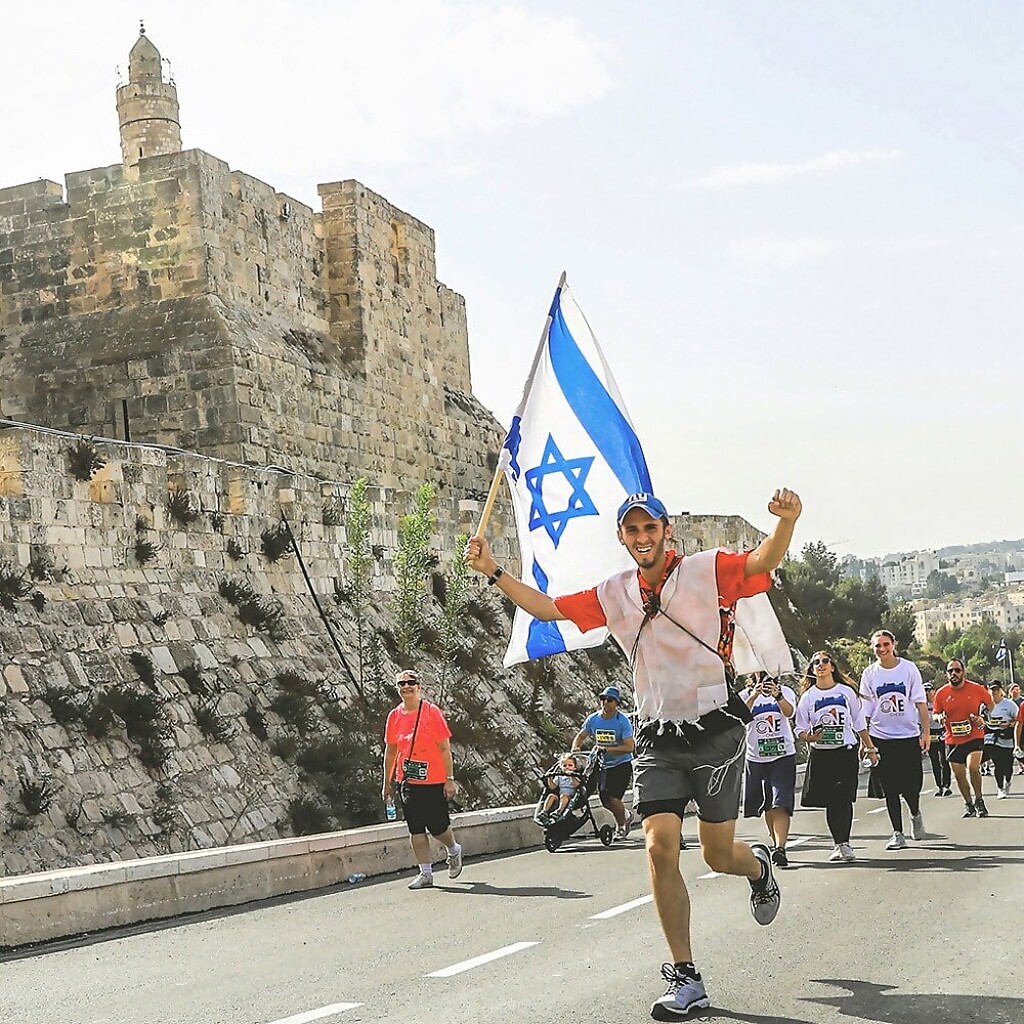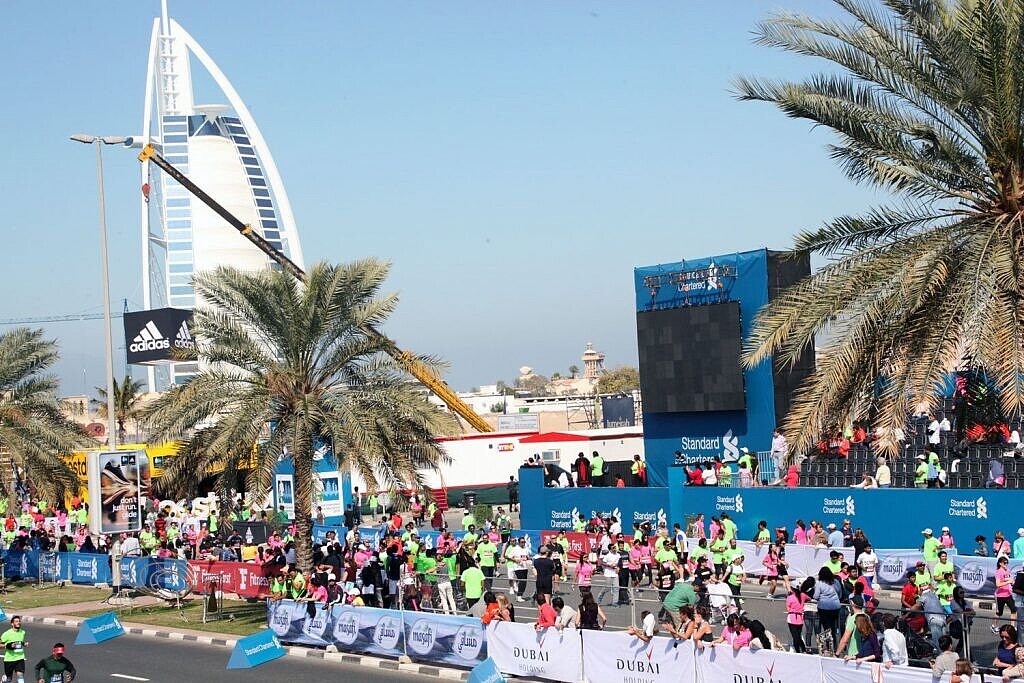Running News Daily
Running News Daily is edited by Bob Anderson in Mountain View, California USA and team in Thika Kenya, La Piedad Mexico, Bend Oregon, Chandler Arizona and Monforte da Beira Portugal. Send your news items to bob@mybestruns.com Advertising opportunities available. Over one million readers and growing. Train the Kenyan Way at KATA Running Retreat Kenya. (Kenyan Athletics Training Academy) in Thika Kenya. Opening in june 2024 KATA Running retreat Portugal. Learn more about Bob Anderson, MBR publisher and KATA director/owner, take a look at A Long Run the movie covering Bob's 50 race challenge.
Index to Daily Posts · Sign Up For Updates · Run The World Feed
The Many Gifts of Joe Kleinerman
Runner. Soldier. Coach. NYRR founder. Administrator. Advocate. Volunteer.Joe Kleinerman was all these things, and more. He gave so much to running and to NYRR. We run to celebrate and honor him at the annual Joe Kleinerman 10K
An Early Start in Running
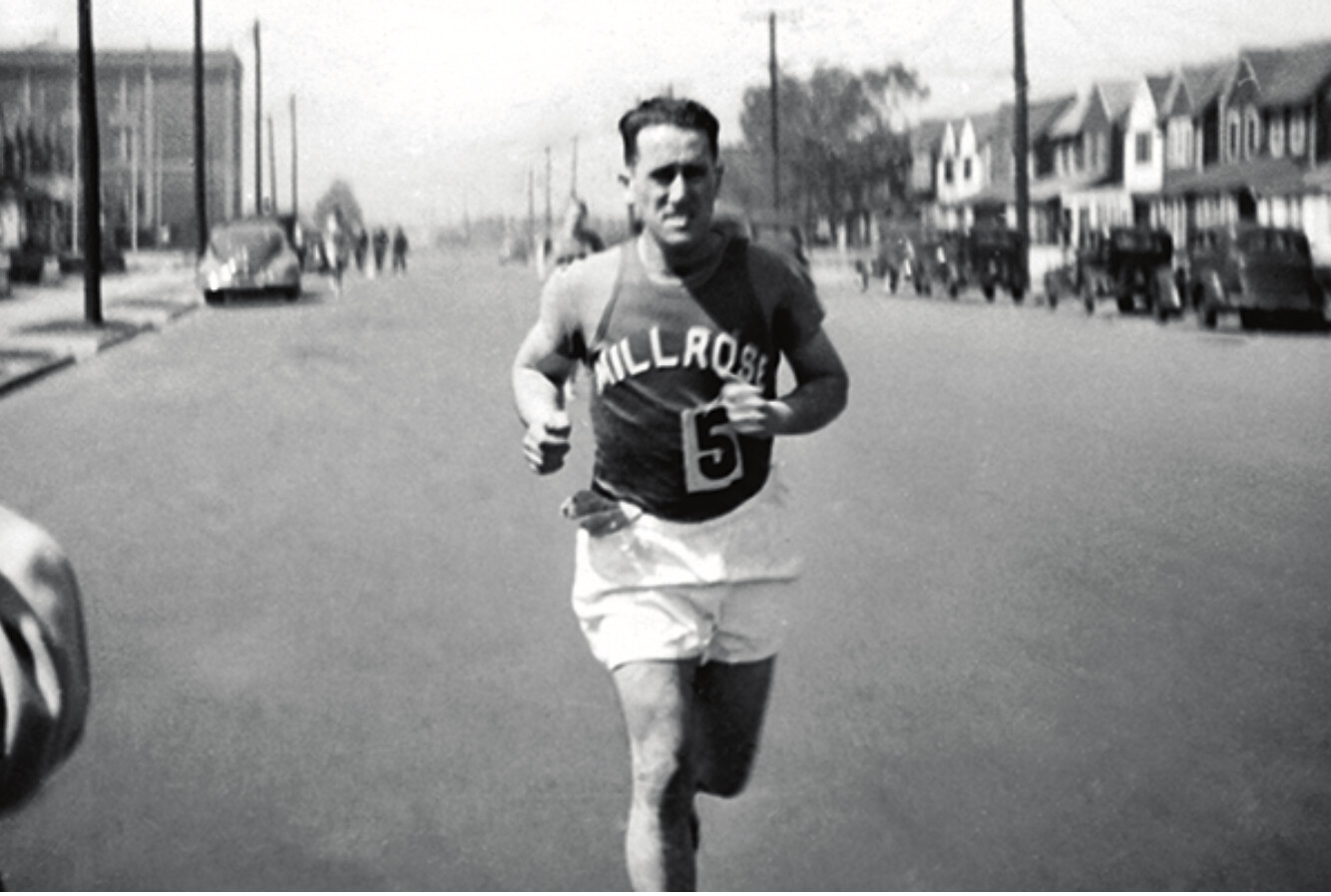
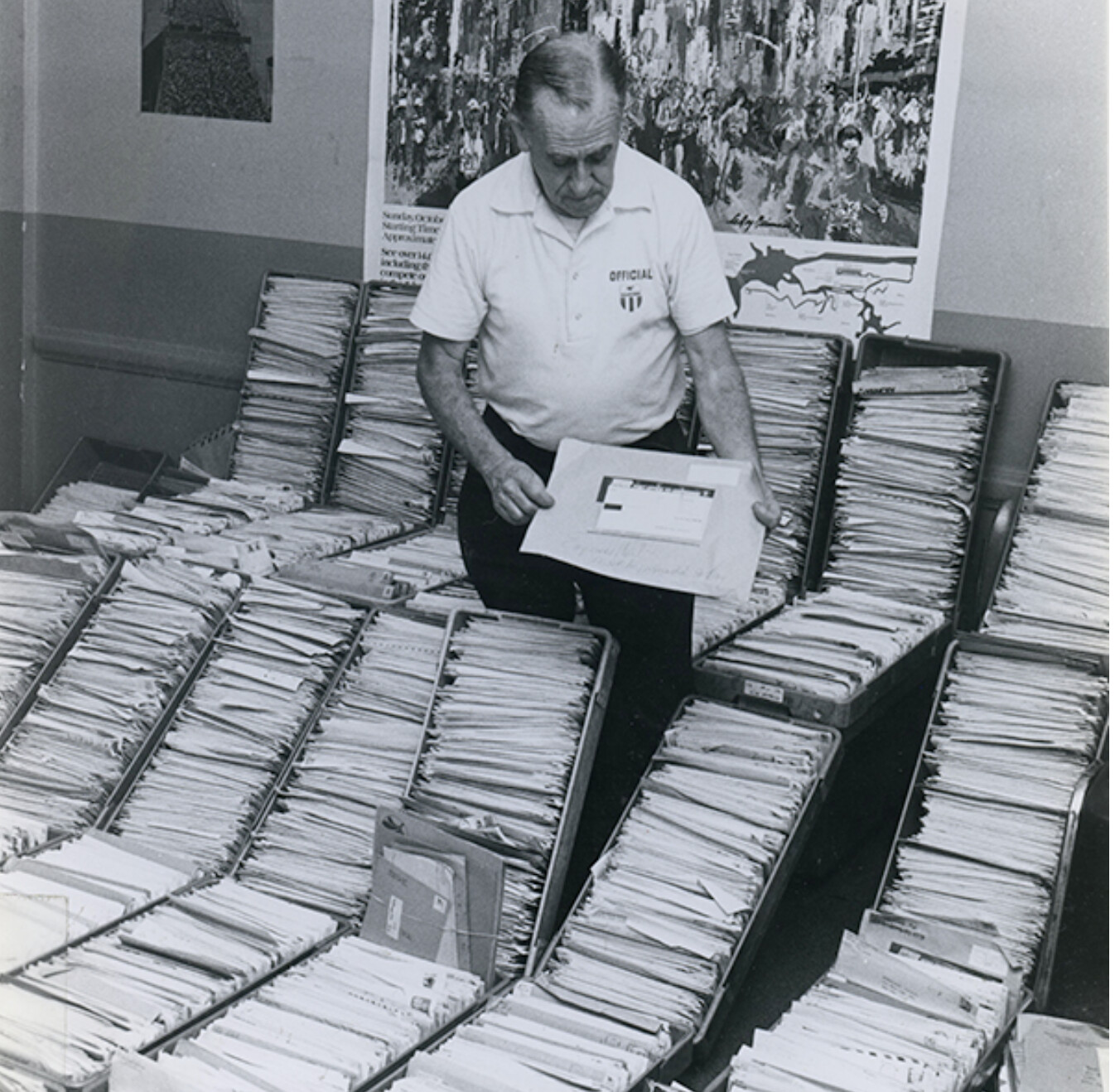
Joe was born in 1912 in Spring Valley, NY, the youngest of four children in a family recently immigrated from Ukraine. He grew up in New York City and started running as a teenager after he and one of his brothers attended the Millrose Games at Madison Square Garden. Joe captained the cross country team at DeWitt Clinton High School, where he also ran track (half-mile and mile). During the summers he trained at Macombs Dam Park in the Bronx.He competed for City College, then won an athletic scholarship to Kansas State University. It was the mid-1930s, the depths of the Great Depression, and when Joe received a job offer with the U.S. Postal Service back in NYC, he could ill afford to turn it down. He returned home to take the job and would remain a Postal Service employee for 32 years. And he continued to run. Joe joined the Millrose Athletic Association and became one of their standout competitors, placing in the top 10 at the Boston Marathon 1941 and 1942 and running a best time of 2 hours and 38 minutes. In an interview years later he noted: “That’s 2:38 with sneakers, on dirt roads, and without any water stops!”
He served as a staff sergeant in the U.S. Army Air Corps during World War II, including 19 months with the 599th Airborne in the South Pacific. He once placed fifth in a 1-mile race in Hawaii on a course laid out by another NYC serviceman also named Joe – last name DiMaggio.
"Joe ran hundreds of races before injuries caused him to stop competing at age 53. He stopped running at age 70 but was able to resume light jogging after knee-replacement surgery in his 80s.
From Competitor to Coach
Joe became the assistant coach of Millrose in 1958 and head coach in 1967. He enthusiastically recruited runners to Millrose, making the team a powerhouse, and was known to many as “Coach” for the rest of his life.At Joe’s memorial service, longtime Millrose runner and 1974 New York City Marathon winner Norb Sander recalled, “Joe was a great coach. He did not intrude. He didn’t criticize you. He was behind the scenes always to make sure that things went smoothly.”
Administrator and NYRR FounderJoe’s interest in working “behind the scenes” led him increasingly toward the administrative side of road racing. In the 1950s all competitive running in the U.S. was governed by the Amateur Athletics Union (AAU), which prohibited women from running distances over a mile, repeatedly failed to take a stand against racial segregation, and discouraged age-group competition. These regressive restrictions and biases frustrated Joe and other runners. In 1958 they formed the Road Runners Club of America (RRCA) to administer road racing.
Later that year Joe, Ted Corbitt, Harry Murphy, and about 40 other runners founded NYRR, then known as the Road Runners Club – New York Association. Joe served as NYRR’s vice president and secretary. He's pictured above with Corbitt and New York City Marathon co-founder Vince Chiappetta. He never sought the limelight, preferring to work behind the scenes. Joe directed and scored countless races and meets – a laborious and task in an era when all recordkeeping was done by hand.
Advocate and VolunteerJoe also worked tirelessly to make running more inclusive and equitable. In 1967, along with Nina Kuscsik and New York City Marathon co-founder Vince Chiappetta, he successfully led a movement to allow women to run AAU-sanctioned races longer than a mile. Later he helped put together a U.S. women’s team for the fabled London-to-Brighton 52-mile road race in England – and saw a dream fulfilled when the women won the race.
Together with Ted Corbitt and others he introduced “veterans” races for runners age 35 and older as well as ultramarathon (50K and 50-mile) national championships. As far as it’s known, Joe never received any compensation for his thousands of hours of service to running. In his old age he remained close to the NYC racing scene and to NYRR’s offices on East 89th Street, where the lobby was named after him following his 90th birthday. He loved to tell stories and to marvel at the growth of running and NYRR over the decades."I considered Joe the heart and soul of Road Runners Club – New York Association," said Gary Corbitt, the son of Ted Corbitt. "Many of the innovation the sport enjoys today were started in New York in the 1960s. My father felt that Joe put in more volunteer hours for the betterment of our sport than anyone else worldwide."
Joe died on Veterans Day in 2003 at age 91. At his memorial service, friends shared their memories of a man who lived large, his gruff manner belying a boundlessly generous spirit. “He barked,” recalled Joe’s Millrose teammate John Garlepp. “If you don’t get the bark, there’s something wrong, either he’s not feeling well or he doesn’t like you.”
Joe's niece, Ruth Kleinrock, said at the service, "Having an uncle who was so instrumental in the sport of running, especially women's running, is something of which my sisters and I will always be proud."Joe Kleinerman dedicated his life to running and creating opportunities for all. We’re grateful to him for it.
(01/08/2023) Views: 1,072 ⚡AMPJoe Kleinerman Classic 10K
Make good on your New Year’s running resolution by taking part in the Joe Kleinerman 10K! Kleinerman, a founding member of NYRR, the longtime coach of the Millrose Athletic Association, and a beloved NYRR employee until his death in 2003 at age 91, was a true competitor. Take on the challenge of this chilly 10K through beautiful Central Park. The...
more...Sydney chasing Kipchoge in race to join world’s ‘major’ marathons
Sydney Marathon officials are in talks to bring the greatest marathon runner in history, Eliud Kipchoge, to the 2024 race and help Sydney secure a prestigious new status as a world “major” marathon.
The Sydney Marathon, which began in 1999, is bidding to formally become one of the world’s leading 42.195km races, alongside legendary events such as the London Marathon and the New York Marathon.
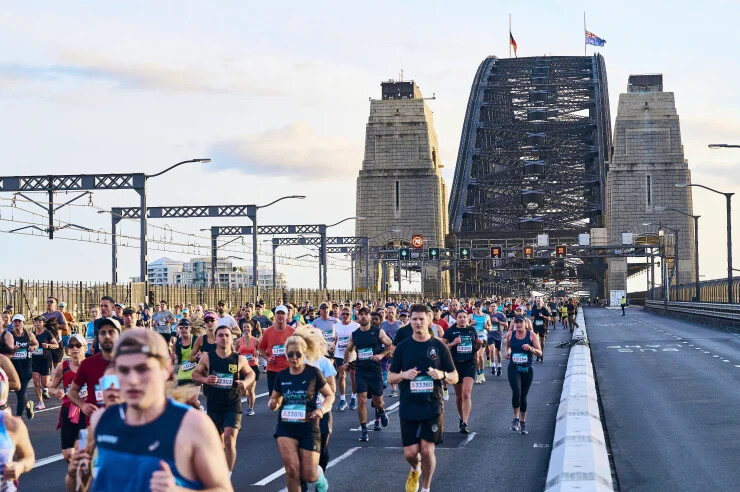
Similar to tennis and golf, the top six marathons in the world – Boston, Berlin, Tokyo, Chicago, London and New York – are known as the “World Marathon Majors”. Each event attracts elite fields, and huge amounts of amateur applicants, every year.
Many marathon enthusiasts set out to collect a six-star medal, earned by running in each of the majors.
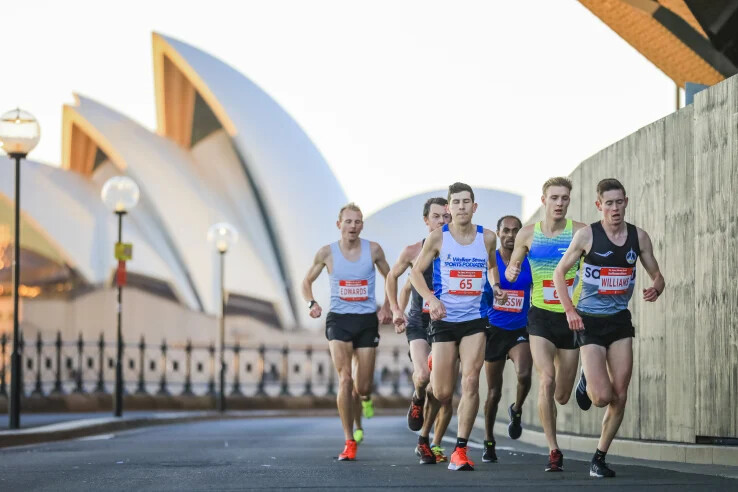
In coming years, however, the medal is likely to be upgraded with the organisation taking on three candidates for potential entry into the elite club: Sydney, Cape Town and Chengdu in China.
The Sydney Marathon announced its candidacy in July and the evaluation process runs for three years. It is already regarded as the strongest candidate.
“It’s a big deal for a number of reasons,” Sydney Marathon race director Wayne Larden said. “The main one is just the sheer volume of runners that take part in these events. Every single one of the Abbotts World Marathon Major events is oversubscribed by between 250,000 and 400,000 runners.
“Which means when we become a major, our numbers are going to leap, with people wanting to get that seventh star. We are expecting a huge boost in numbers, a massive increase in economic impact.”
Though recently upgraded on World Athletics’ ranking system to a “platinum” marathon – making it the eighth best in the world – the Sydney event is relatively modest compared to the majors, which have about 50,000 finishers. Sydney usually has about 5000 finishers, although many thousands more compete in the half-marathon and 10km events run simultaneously.
Destination NSW is backing Sydney’s candidacy for major status and the reasons are straightforward, says Larden. With tens of thousands of tourists coming to race each year, studies show cities gets a massive financial boost. The Chicago Marathon generated almost $600 million for the city’s economy this year.
Sydney must meet certain criteria for two years in a row over the next three years before a vote of other race directors can upgrade it to a major. The tourism and grandeur components are well-covered, with the race route including the Sydney Harbour Bridge and the Opera House as a finish line.
But Sydney will also have to increase its finishers to 15,000 and support the race in bigger numbers like the other major marathons, where there is a culture of people lining the course to cheer on runners, entertainment and a festival atmosphere.
“There are benchmark things, you either have it or you don’t. Is the air clean? Is it a marketable city? Do people want to visit? These are things we have; Sydney is a beautiful place and a global destination,” Larden said.
“More specific things, there are a few key things. We have to triple our number of finishers in the marathon, we have to engage the Sydney community and get them out on the course, like what runners experience in Boston or New York or London. We have to get people out and cheering people on their journey.”
The Sydney Marathon course – which this year saw the fastest time ever run in Australia by Kenya’s Moses Kibet (two hours, seven minutes, two seconds) – will also be altered slightly, replacing the narrow sections of course winding along the edge of wharves at Pyrmont, with more roadway. And it will become a standalone race, with a half-marathon and shorter runs done a day before.
Australian marathon legend Steve Moneghetti, who won the Berlin Marathon in 1990 and is an adviser to the Sydney Marathon, believes the event can be the equal of any in the world.
“I can tell you that in all the world’s top marathons, and I ran a fair few of them, that no one has anything close to the Sydney Harbour Bridge and Opera House on the course. They are iconic,” he said.
“You name me any city in the world and if you can name a better start/finish than that, then you’ve got me. That’s the selling point.
“It is really exciting. And I was a bit surprised, I thought, ‘The world marathon majors? Hey the six is the six and that’s that’. When I sort of considered it, I thought, ‘Yeah, why should it be just those six?’ Marathon running is booming around the world and it’s nice to think they are open to adding to it and Sydney is in the running for it.”
Kipchoge is undisputedly the greatest marathon runner ever, and proved as much by breaking the world record in Berlin in September, running 2:01.09.
The 2016 and 2020 Olympic gold medallist became the first man to run a marathon in under two hours in 2019, in an event that didn’t qualify for a record.
Kipchoge, 38, has vowed to collect a six-star medal before he retires, but Sydney hopes to lure the Kenyan to Australia even before it becomes an extra point on the medal, with an appearance in 2024. Kipchoge running in Sydney would give the race a major boost of global credibility, and be a big help in meeting the targets for finisher and crowd numbers, too.
“He would definitely bring Sydneysiders out. He is like Usain Bolt on a track - when Bolt ran, the stands were full,” Larden said.
“We are talking to Kipchoge’s management and have been since we got nominated. He wants to finish the six next year, so our goal is to try and get him to Sydney in 2024, as that big drawcard.”
Moneghetti said having Kipchoge run across the Harbour Bridge in 2024 would be a massive coup: “To say you ran in a race when Kipchoge ran, that’s a selling point. That’d be huge.”
(01/07/2023) Views: 807 ⚡AMPby Iain Payten
Sydney Marathon
The Sydney Marathon is a marathon held annually in Sydney, Australia. The event was first held in 2001 as a legacy of the 2000 Summer Olympics, which were held in Sydney. In addition to the marathon, a half marathon, 9 kilometres (5.6 mi) "Bridge Run", and a 3.5 kilometres (2.2 mi) "Family Fun Run" are also held under the banner...
more...Six things you’ll understand once you start running
It is well known that runners are a unique breed, and those who don’t run may not understand why you wake up at 6 a.m. on a Sunday in the summer for a 20-kilometer easy run, or why you are putting in 80 to 100 kilometers a week for a local 5K fun run four months from now–until they actually become runners themselves.
Here are six things you’ll understand once you become a runner.
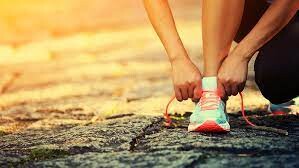
1.- Easy runs
Yes, there is such a thing. Many think all running has to be done hard, but no runner (besides maybe that one guy everyone seems to have on Strava) actually runs like this. If you are running hard all the time, it is certainly the fastest way to find yourself on the injured reserve.
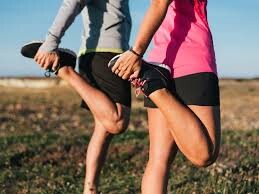
Your easy runs should be done at a comfortable pace, where you can engage in a conversation. It might be very slow at first, but over time you find your pace and your easy-run pace will get faster. Most, especially when starting, tend to run just a little too fast.
2.- The “runner’s high”
Whether it exists for you or not, you understand why people love to run. Many use it as a mental escape and an activity to clear their mind, or a way to be immersed in nature.
Getting out for a run can relieve stress after a long day at work; it forces you to take a step back and helps you clear your mind of negative thoughts.
3.- How fast time goes by
A one-hour run may sound like forever, but once you are out there, the time flies by. Marathoners have the same experience at the start of their race after months of training. Every runner gets this sudden realization of how short two to four hours of running is in comparison to their countless hours of training.
It’s even worse when you come back to race a 5K after you’ve moved up in distance. You’ll feel like you barely ran.
4.- Shin splints
Shin splints aren’t a myth; they are just as painful as runners claim. When you are on a run, you place a load of anywhere from two to six times your body weight on your muscles, bones, ligaments and joints with each stride. If you don’t give your body time to recover and adapt to your training load, shin splints may result.
There are many ways runners can combat shin pain with compression, or by reducing their training load, doing low-impact exercise, or plain and simple rest.
5.- Early morning runs
Early morning runs aren’t torture—they are the best time to go for a run, for various reasons (including that you are rested, there is less traffic, etc.). Plus, if you get your long run done early enough on the weekend, you can kick back and relax for the remainder of the day.
6.- How far a marathon is
Forty-two kilometers is far, but you really understand how far it is once you become a runner. Not to say marathon runners shouldn’t be respected, to begin with, but once you become a runner, you have a new profound admiration for every runner who has tackled the 42.2 km distance.
(01/07/2023) Views: 644 ⚡AMPby Marley Dickinson
Ultramarathons Require Mental Strength and Camaraderie—Here's How You Can Conquer One
Want to take your running to the next level? Here’s what to expect from an ultramarathon.It may seem aggressive, too intense, borderline insane, but ultrarunning—that means running any distance longer than a marathon—is on the rise. In fact, it’s been consistently growing a following over the past few decades: more than 611,000 runners participated in ultras in 2020 versus fewer than 150,000 just 10 years earlier, according to a survey from RunRepeat and the International Association of Ultrarunners.
Although the distance alone makes ultras sound hardcore—not to mention the terrain (they’re typically off-road) or the pre-dawn start times or those reported mid-race hallucinations—runners love them. And for good reason. ing up to the start of your first ultramarathon, know there will be plenty of people out there to support you.
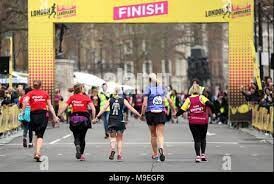
by Runner’s World
This Mom Runs to Decompress and Recharge So She Can Be a Better Parent
“Getting back into running is the best thing I could have done for myself!” I initially got back into running as a way to lose weight, but it became more about making time for myself to de-stress and be a better mom.
I have always been a runner but stopped for more than 10 years. I ran cross-country and track and field in high school, and also ran on and off for two years in college around 2008.

MORE FROM RUNNER'S WORLD ON APPLE NEWS
I had a healthy pregnancy in 2020 with my second son, but gained some weight, which is inevitable when growing a little one. So my initial motivation to pick up running again was to lose some of the pregnancy weight I had gained.
It was after Christmas of 2020, when I was 32 years old, and I finally said enough was enough. I felt uncomfortable in my own skin, my clothes, and I was out of breath going up the stairs.
I was four months postpartum. Yes, I had given myself grace after birth, but it was time to commit to myself again. So in January 2021, I did just that. Running has always been an exercise that inspired me to move my body to be my healthiest self. I decided to make time for myself even when I was tired or burned out. Motivation might fade, but having the discipline to commit would prove worthwhile.
I started by giving myself the goal of 20 minutes of exercise a day, whether that was walking, running, or a combination of both. I used my Apple Watch to help motivate me, as I worked to close my fitness rings. I successfully closed each one for a whole year. In the beginning, my training consisted more of jog/walks to be able to work myself up to running without stopping.
With consistency, I was able to work my way up to running seven miles. My initial mile pace was in the 11- to 12-minute range. But, I put in the work every day and was able to bring my pace down to the 8- to 9-minute range—something I’m very proud of! Consistency and hard work will always pay off.
Right now, raising two young boys, my running schedule varies, but I hope to start training for a half marathon in the fall of 2023.
During my weight loss, it helped me to count my calories, and I also ate lower carb options with high protein. As I’ve maintained my weight loss for over a year, I still follow a high-protein diet, but don’t count my calories as often.
Running became a passion of mine again because it helped me as an outlet with motherhood. Losing weight was a perk but I found myself again as a person, not just a mom. Motherhood can be extremely draining. It’s the most wonderful thing in the world, but you are constantly putting others’ needs before yourself. Children rely on you, but when I started running again, I became a better mother and wife. I needed that outlet and alone time to help decompress. Getting back into running is the best thing I could have done for myself!
These three tips have made my running journey a success:
1. Believe in yourself
Only you can get yourself through the hard days and the unmotivated days. Believe that you can accomplish it and you will.
2. Set small, attainable goals
Small things add up with consistency over time. It’s easy to get wrapped up in what’s working for someone else, but you have to focus on you. We are all different.
3. Just get out there
You don’t have to go out and run for long periods of time or distances to be a runner. Just getting out there—whether it be a mile or two—makes you a runner. Overtime, it makes a difference, and still makes you a runner.
Sarah’s Must-Have Gear
→ Hoka Clifton: Over the years I’ve tried many different brands, but Hoka’s are my number-one.
→ Goodr Sunglasses: These sunglasses do not slip while sweating.
→ Shefit Sports Bra: Starting out with a larger chest, I needed as much support as I could for running. Shefit has always been my go-to sports bra. With adjustable straps, you are able to customize it to fit your needs.
→ BOB Rambler Jogging Stroller: BOB strollers are the best in the game for jogging strollers. I have both a double and single. They have helped me tremendously, because as a stay-at-home mom, I don’t always have an option for someone to watch my kids. This is a great option for them to come along with me on my runs.
(01/06/2023) Views: 651 ⚡AMPby Runner’s World
Man Races London Subway Train to the Next Stop
Could you beat a subway from stop to stop?
A man in London sought to answer the age-old question: Which is faster, a runner or public transportation?

In a video from December 26 that’s since gone viral, a runner got off at the Mansion House subway station, booked it up the stairs and made his way to the next stop at Cannon Street, where he boarded the same train. He, of course, pays his subway fare, too.The route, according to Google Maps, is 0.1 mile, and the walking directions estimate about three minutes (without going up and down the subway stairs). The video is 1 minute 37 seconds, clocking the time the man sprints out of the subway car and up the stairs. It shows a split screen—the subway riding to its next stop and a first-person, dizzying, perspective of the man running to Cannon Street.
In the background, comically, you can see a woman and a child sitting next to the door, who cheer when the man makes it back onto the train.
In typical Internet fashion, there are naysayers questioning the feat and others who wonder why there are two stations so close to each other.
(01/06/2023) Views: 675 ⚡AMPby Runner’s World
4 Runners Have Vanished From This Island in 2 Years. No One Knows Why.
Four people have disappeared from the Portuguese island in the last two years—without a trace.
On December 11, 2022, British trail runner Darren Kay of Sedbergh, U.K. went missing on a Portuguese island off the coast of northern Africa. The BBC reported that the 52-year-old went on a two-hour run with his partner and decided to tack on additional mileage alone. He hasn’t been seen since. Local authorities ceased the search on December 21.
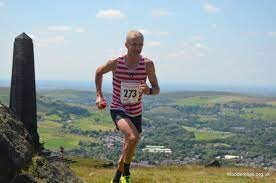
Kay was the fourth runner in two years to go missing on the island. Jascha Hardenberg, a 28-year-old from Germany, went missing on December 29, 2020. Polish 35-year-old Michal Kozek vanished on July 7, 2021. French tourist Benoit Way, 35, disappeared on September 1, 2021. These three runners were gone “without a trace, no clothing found or spotted, all with backpacks” wrote Madeira Island News.Tobi Hughes of the Madeira Island News posed a question: “How is this possible, even if they have all fallen and died?”
Madeira is home to high peaks, massive cliffs, and rocky terrain. During the search for Kay, heavy wind and high tides prevented a full-on search of the island, according to the BBC.
“Accidents involving tourists exploring Madeira’s hillside walks are not uncommon, but situations in which they disappear altogether, leaving absolutely no clues as to what may have happened, are not (or perhaps, have not been, until now),” reported the Portugal Resident.
However, only two major connections between the cases are apparent so far. All four were out on their own, while Hardenberg, Kay, and Kozek went missing near the town of Calheta.
(01/06/2023) Views: 1,264 ⚡AMPby Runner’s World
Edward Cheserek to battle Shura Kitata in Houston Half Marathon
Kenya’s Edward Cheserek will be the star to watch at the 51st edition of the Aramco Houston Half-Marathon that will be held on January 15, 2023 in Houston, Texas, United States.
The 28 year-old comes to this race with the fourth fastest time on paper of 1:00.03 that he got last year in Valencia Half marathon, comes to this race with the fourth fastest time on paper.
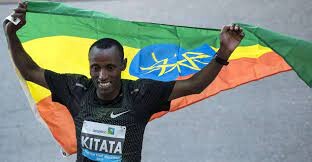
After Valencia last fall, I’ve trained harder and I think sub-60 is possible. Houston is known for being a fast course and I want to have a chance with a personal best,” said Cheserek.
Cheserek who is the the 17-time NCAA champion, will battle the 2020 London Marathon champion, Shura Kitata who comes to this race with a life time best of 59:47 that he got at this same event in the same year.
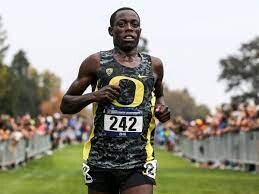
The two will have to get past the 2015 All-African Games Silver medalist, Leul Gebresilase who comes to this race with the fastest time on paper of 59:18 that he got at the 2017 Valencia Half Marathon, where he took the silver medal and the 2018 Mediterranean Games half marathon champion, Mohamed El Aaraby who also comes with a personal best of 59:54 that he got last year at the Meta Time Trials By Asics.
The race organizers have assembled this deep field to chase the race course record of 59:22 that was set ten years ago by the 2016 Rio Olympics marathon silver medalist, Feyisa Lilesa from Ethiopia.
(01/06/2023) Views: 672 ⚡AMPby John Vaselyne
Aramco Houston Half Marathon
The Chevron Houston Marathon offers participants a unique running experience in America's fourth largest city. The fast, flat, scenic single-loop course has been ranked as the "fastest winter marathon" and "second fastest marathon overall" by Ultimate Guide To Marathons. After 30 years of marathon-only competition, Houston added the half-marathon in 2002, with El Paso Energy as the sponsor. Today the...
more...Infrastructure key in hosting major global events, Sebanstian Coe Says
World Athletics President Sebastian Coe has said that Kenya will need to work on its infrastructural facilities among other areas if they are to host the World Athletics Championships.
Coe said that the county’s capacity and integration of all different facets that will give athletes the very best, must be attained as Athletics Kenya president Jack Tuwei disclosed that Kenya is now keen on hosting the 2029 World Athletics Championships.

Kenya lost its bid to host the 2025 World Athletics Championships to Tokyo, Japan with the country's poor infrastructure especially the lack of a modern stadium costing the country dearly.
Coe hinted that World Aesthetics is ready to help Kenya build capacity in terms of the technical aspect to bolster their chances of hosting the world event.
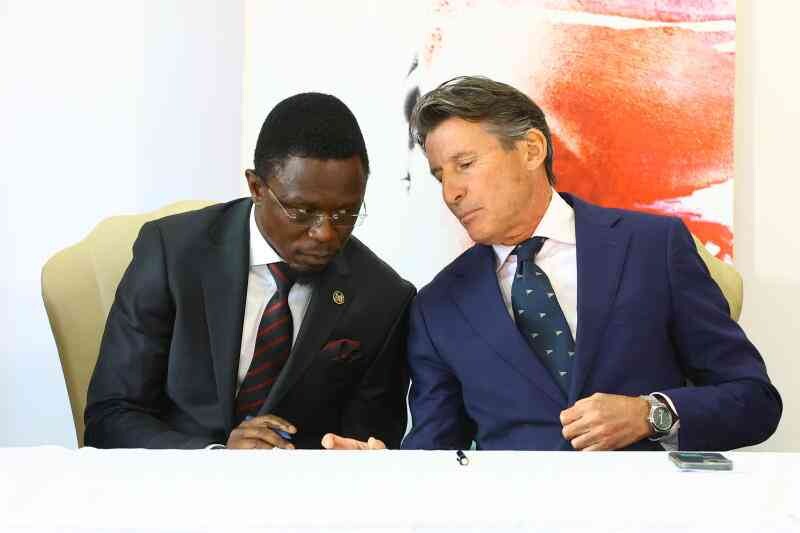
“It’s quite understandable this is a country with a passion for athletics and wanting to stage big events. While the country’s track record is good, other areas still fall short,” said Coe, adding that the country also has to show progress and make coherent steps in resolving doping challenges.
Coe noted that Kenya might have hosted quite successful 2017 World Athletics Under-18 Championships and 2021 World Athletics Under-20 Championships but having a strong technical base will be key to hosting major events.
Coe said by-passing the 2027 bid will help Kenya prepare well for 2029 bid.
Tuwei welcomed the move by World Athletics to help them in technical capacity saying Kenya won’t relent on putting up another bid.
Coe, at the same time, said the only way out for Kenya to get out of Category “A” of the countries with most doping cases is the reduction of the cases.
In 2018, World Athletics placed Kenya among four countries in ‘Category A’, the others being Ethiopia, Belarus and Ukraine.
Athletes from these federations selected to compete in major events will have to undergo at least three out-of-competition doping tests in the 10 months before a World Athletics Championships or Olympic Games.
One of the tests must be of blood and the tests should be done two weeks apart.
(01/06/2023) Views: 675 ⚡AMPby Ayumba Ayodi
Laura Muir headlines Millrose Games Wanamaker Mile
Laura Muir will race the Rudin Women’s Wanamaker Mile at the Millrose Games when she makes her debut at the World Athletics Indoor Tour Gold meeting in New York on February 11.
Muir won her long-awaited Olympic silver medal in Tokyo, then backed it up with a bronze medal at the World Athletics Championships Oregon22. The 29-year-old is a six-time European gold medallist, two-time Diamond League champion and the 2022 Commonwealth Games champion in the 1500m. In total, she holds six British records indoors and outdoors.
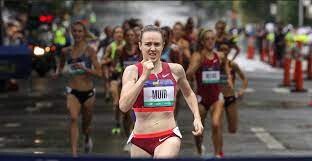
Muir blasted a 4:14.8 road mile last September at her most recent race in New York City, setting the course record for the 5th Avenue Mile. The Wanamaker Mile event record of 4:16.85 was set by Elinor Purrier St. Pierre in 2020, that mark also being the US record and second-fastest indoor mile in history.
“This will be my first time racing at the Millrose Games, so I am really excited as it has been a competition that I have wanted to do for a long time,” said Muir, who will also compete at the World Indoor Tour Gold meetings in Boston and Birmingham. “I have very fond memories of racing in the city, and I cannot wait to return and tackle the same distance indoors.”
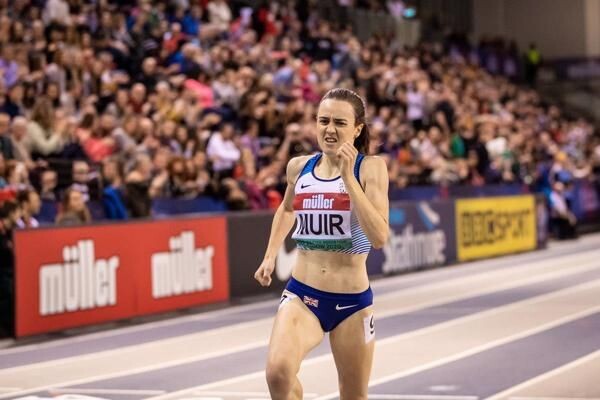
As always, the Wanamaker Mile will feature a deep field of talented runners hungry for an upset victory. Athletes to watch include US 1500m champion Sinclaire Johnson, British indoor mile record-holder Jemma Reekie, Josette Norris, Sage Hurta-Klecker, Nikki Hiltz, Medina Eisa, Allie Wilson, Lucia Stafford, Sintayehu Vissa, Marta Pen Freitas and Helen Schlachtenhaufen.
These are the latest stars announced for the Millrose Games, joining the showdowns in the pole vault between Katie Moon, Sandi Morris and Katerina Stefanidi, and in the shot put, featuring Ryan Crouser and Joe Kovacs. The women's 300m will feature Abby Steiner, Jenna Prandini and Brittany Brown, and the women’s 3000m will star Konstanze Klosterhalfen and Alicia Monson. In the men’s 60m, two-time world 200m champion Noah Lyles will race for more sprint success.
(01/06/2023) Views: 717 ⚡AMPby World Athletics
NYRR Millrose Games
The NYRR Millrose Games,which began in 1908 as a small event sponsored by a local track club, has grown to become the most prestigious indoor track and field event in the United States. The NYRR Millrose Games meet is held in Manhattan’s Washington Heights at the New Balance Track & Field Center at the Armony, which boasts a state-of-the-art six-lane,...
more...Refugee Olympic Team for Paris 2024 to have base in Kenya
The Refugee Olympic Team (EOR) will have a base in Kenya to prepare for the next year's Olympic Games in Paris, with eight athletes set to train in the North Rift of the country.
The National Olympic Committee of Kenya (NOC-K) has worked with the United Nations High Commission of Refugees and Athletics Kenya to find athletics training bases starting this month, with these visits led by its President Paul Tergat.
Kenya hosted five EOR athletes prior to Rio 2016 - all from South Sudan - with another four coming to the country from the same nation ahead of Tokyo 2020.
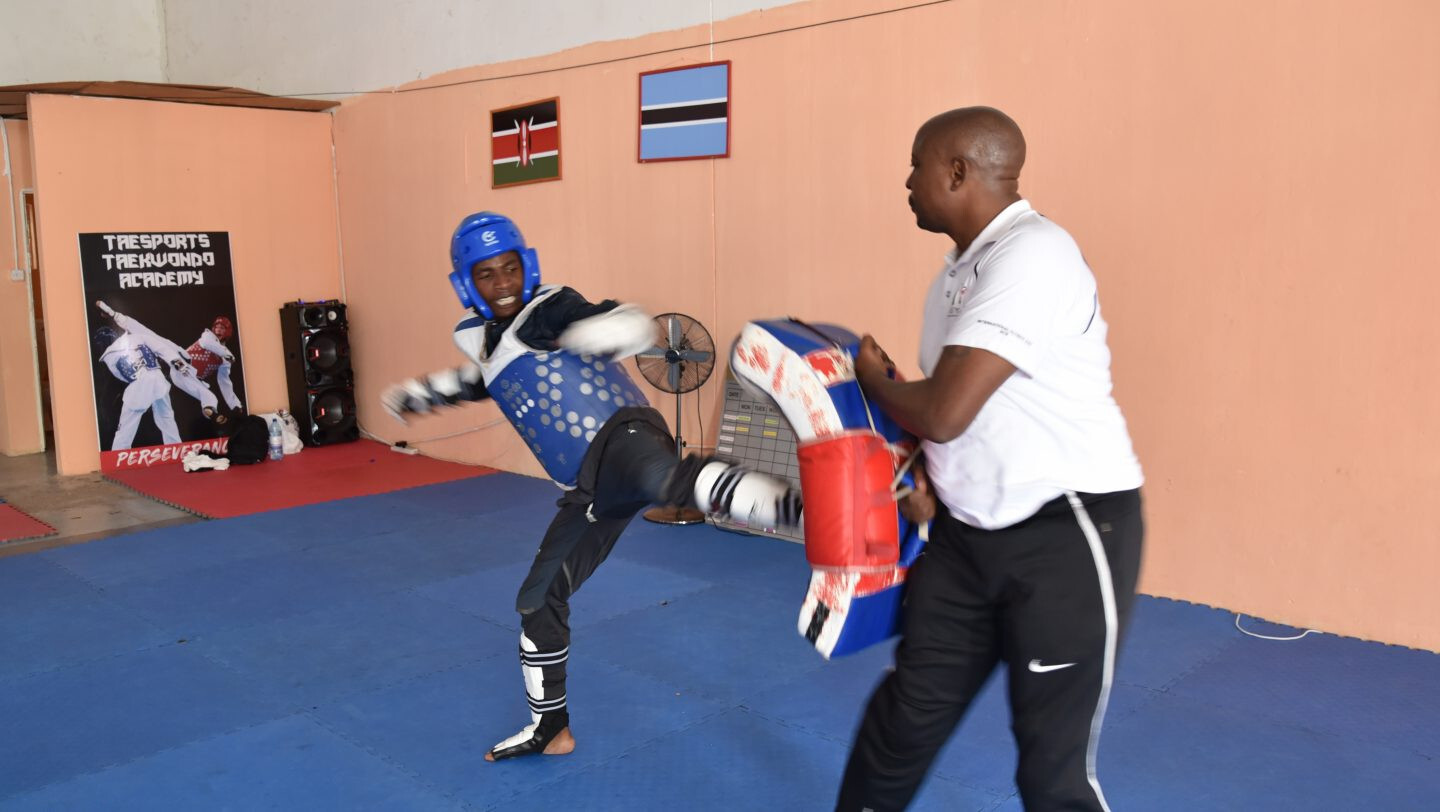
During a visit, the NOC head praised the work of Olympian and former women's marathon world-record holder Tegla Loroupe for their work in including refugees into sports programmes, like this one.
"The first batch of the athletes competed during the Rio 2016 Olympic Games and Loroupe was the Chef de Mission of the [EOR] Team," said Tergat, the double Olympic 10,000 metres silver medallist, according to Kenyan publication The Star.
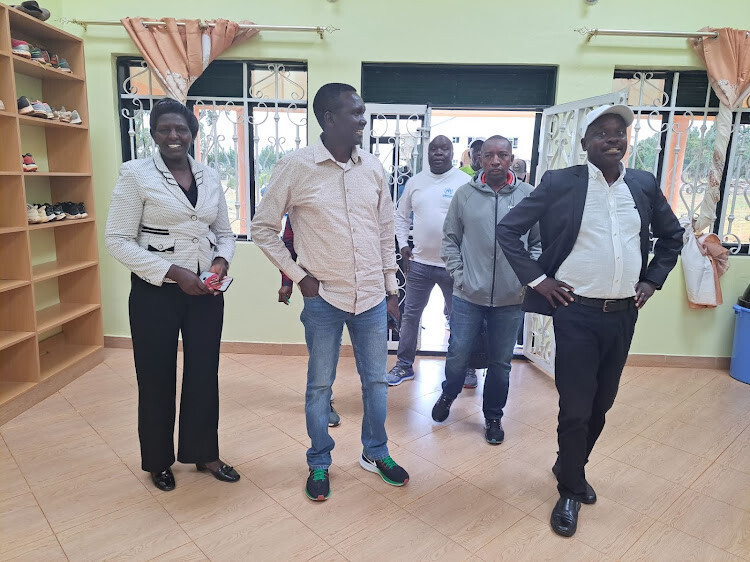
"We are very proud of the work and achievements that Loroupe, through her Foundation, has done in giving opportunities to these athletes."
This time, eight athletes are set to be at the training base.
Anjelina Nadai Lohalith is hoping to compete in her third Olympic Games as part of the EOR team with the South Sudanese athlete ready to race the women's 1500m again.
Dominic Lokolong, also from the country that spent seven years officially in a civil war, is to race the men's 1500m at his first Games.
Kun Waar and Rose Ihisa, competing in the men's and women's 400m respectively and originally from South Sudan, are on the team; as are their compatriots John Lokibe and Josephine Tein in the men's and women's 800m.
Emmanuel Ntagunga of the Democratic Republic of the Congo is to enter the men's 5,000m, while Gasto Nsazumukiza, also from this country, is the only member of the EOR team in Kenya who will not compete in athletics.
Nsazumukiza is set to compete in taekwondo.
NOC-K secretary general Francis Mutuku promised they would continue working with the refugees throughout the build-up to Paris 2024.
"The Refugee Team will now be working under NOC-K and we want to ensure that we get a good place for their training and produce proper results," said Mutuku.
"These athletes will fly the International Olympic Committee flag.
"We are not just looking at training camps but a good place for them to train.
"We are working hand in hand with Athletics Kenya and UNHCR to ensure that they perform well."
Parties visited the Complete Sports in Kaptagat, Lornah Kiplagat High Altitude Performance Centre in Iten, Kipchoge Keino facility and Ndura Sports Complex in Kitale as part of its training camp inspections.
The Paris 2024 Olympics are scheduled to take place from July 26 to August 11 2024, followed by the Paralympics from August 28 to September 8.
(01/06/2023) Views: 644 ⚡AMP
by Michael Houston
Paris 2024 Olympic Games
For this historic event, the City of Light is thinking big! Visitors will be able to watch events at top sporting venues in Paris and the Paris region, as well as at emblematic monuments in the capital visited by several millions of tourists each year. The promise of exceptional moments to experience in an exceptional setting! A great way to...
more...NBA star Donovan Mitchell credits track workouts for his 70-point game
On Jan. 2 at the Rocket Mortgage Fieldhouse in Cleveland, Ohio, Cleveland Cavaliers guard Donovan Mitchell became the second active NBA player to score 70 or more points in a single game. When asked by ESPN insider Brian Windhorst about the noticeable change in his performance this season, Mitchell responded that his secret was sprint workouts at the track.
“For eight weeks over the summer, I ran endless sprints with my trainer,” Mitchell told Windhorst. “We start by doing six sprints of 50 meters. Then five of 100 meters. Three at 200 meters. And lastly, two lung-busting 400s.”
Although Mitchell doesn’t tell ESPN the rest between his reps, it’s clear the workout was designed to help Mitchell increase his lactic tolerance for late in an NBA game or during a grueling seven-game playoff series.
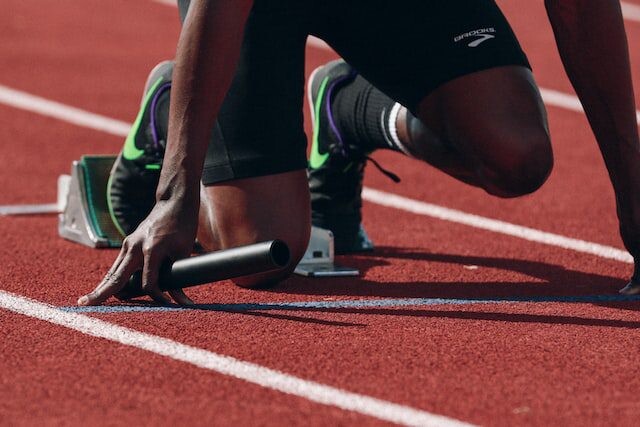
As Mitchell netted 63 points at the end of regulation against the Chicago Bulls, the 26-year-old scored eight points in overtime to lead the Cavs past the Bulls. “He simply looked stronger and faster than anyone on the floor,” reported Windhorst.
According to the article, Mitchell said he lowered his 400m time to 57 seconds before leaving for the fall preseason camp with the Cavs. Although 57 seconds wouldn’t win him any elite or sub-elite 400m race, it’s a speedy time for a basketball player at the end of a workout.
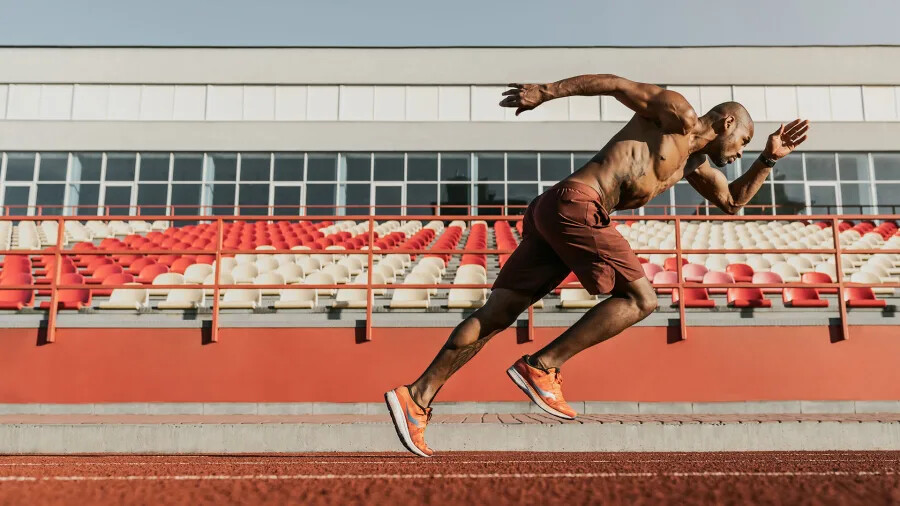
The benefits of sprint training include increasing your caloric burn, which can help to reduce your resting heart rate, and your rate of fat oxidation, plus improve your resting Basal Metabolic Rate (BMR–how many calories you burn at rest).
When running or playing any high-intensity sport, the lactic buildup can generate fatigue and pain in your muscles, preventing you from performing at your best. By including faster sprint and speed workouts in your training, you will use fast-twitch muscle fibres more efficiently while increasing your muscle mass, developing bone density, and importantly—improving speed.
Try this workout at your local track or treadmill with these modifications:
(This sprint workout should be done at 90 to 100 per cent of all-out)
Track workout
Six reps of 50 metres with walk-back recovery
Five reps of 100 metres with two mins recovery
Three reps of 200 metres with three mins recovery
Two reps of 400 metres with five mins recovery
Treadmill workout
Six reps of 15 seconds with a one-minute walk recovery
Five reps of 30 seconds with two mins walk recovery
Three reps of 45 seconds with three mins walk recovery
Two reps of 90 seconds with five mins walk recovery.
(01/05/2023) Views: 653 ⚡AMPby Marley Dickinson
Italian distance runner given 36-year ban from racing, this runner won't be able to race again until 2058
Italian distance runner Alessandro Braconi of Pallanza, Italy, will not be eligible to compete until 2058 after receiving a ban of 36 years for the use/attempted use, possession, and trafficking/attempted trafficking of a prohibited substance. This follows his provisional suspension after a positive drug test in March 2022.
Braconi, 36, originally received a 12-year ban from the Athletics Integrity Unit in October, but since doping is a criminal offense in Italy, he had to explain his actions to authorities, and then the Italian Athletics Federation (FIDAL) added on another 24 years.
In May, he was found racing the Lago Maggiore Half Marathon in Stresa, Italy, despite his 12-year disqualification. Although the substance Braconi used/trafficked was not revealed by FIDAL or the AIU, he will be unable to compete until he’s 72.
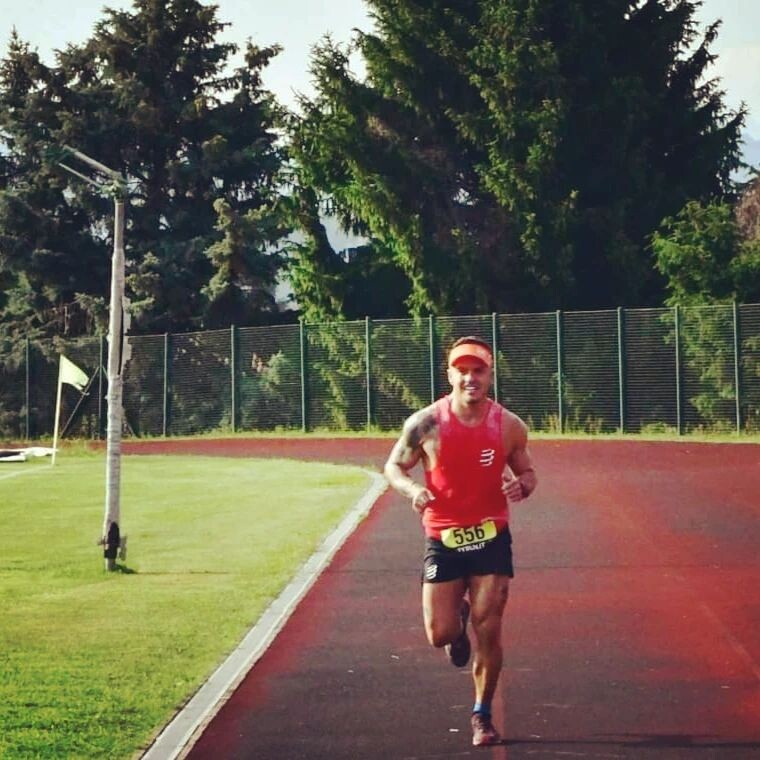
Braconi, a 1:19 half marathoner, holds one of the longest bans on the AIU database that isn’t a lifetime ban. He was one of two Italian athletes on the latest AIU list, the other being distance runner and former semi-pro cyclist Christian Barchi, who originally incurred a six-year ban, but after he was found competing for a second time while he was sanctioned, incurred an additional penalty, taking his ban to 2031.
A few European nations have made doping a criminal offense to help control cheating in athletics. Many in the running community have called for all nations to adopt this approach.
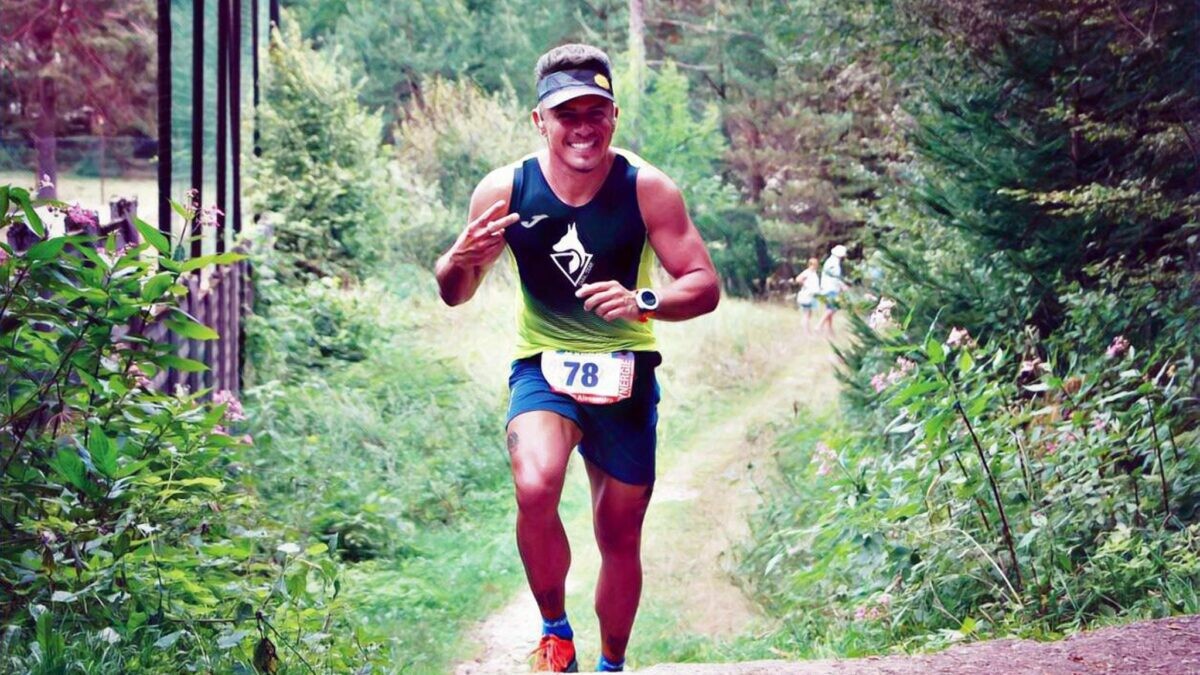
by Running Magazine
Ten reasons to be excited for the 2023 Athletics season
There are many things to look forward to in the sport of athletics in the upcoming year.
There’ll be three global championships in 2023, with ever-expanding one-day meeting circuits spread throughout the year. Rivalries will be renewed, and record-breakers will continue to push boundaries in their respective disciplines.
Here are just ten of the many reasons to be excited by what’s to come over the next 12 months.
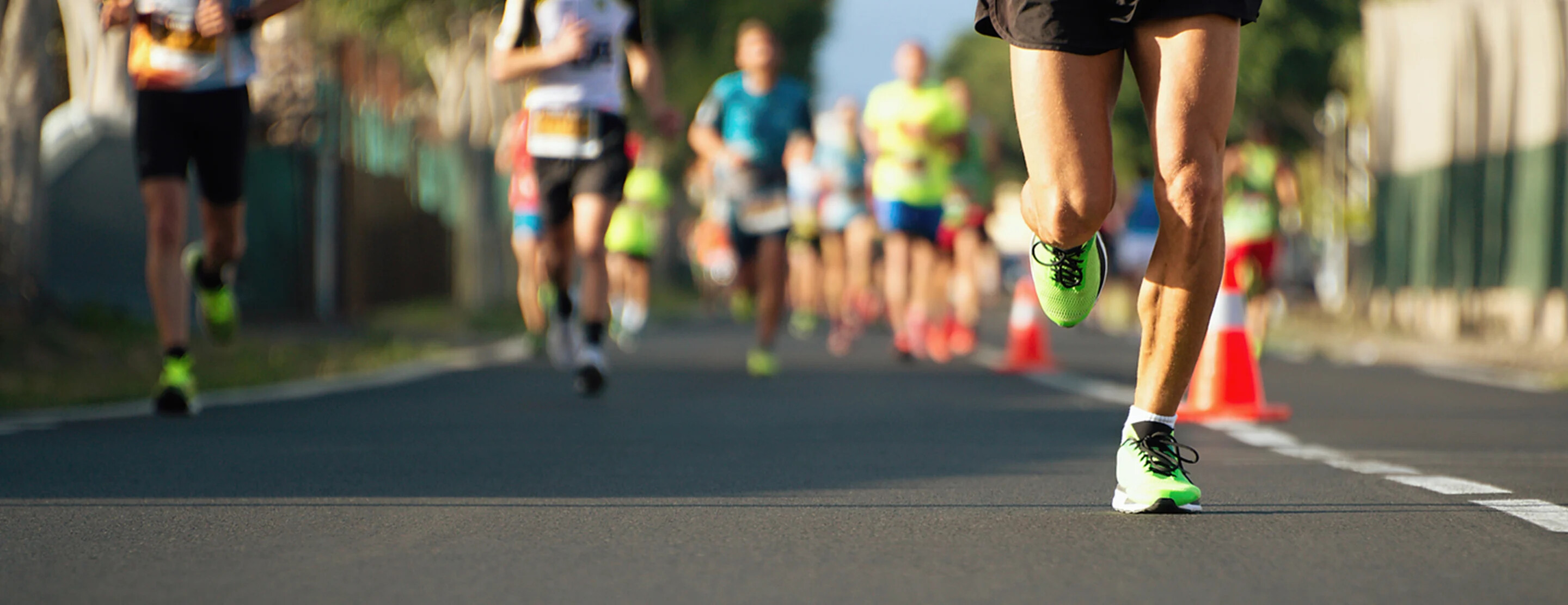
1. World Athletics Championships Budapest 23
More than 2000 athletes from about 200 countries will head to the Hungarian capital to compete in the world’s biggest track and field event of 2023. Taking place just 13 months after the last edition, it will be the shortest ever gap between two World Championships, so fans won’t have long to wait before seeing the best athletes on the planet re-engage in battle for global honours.
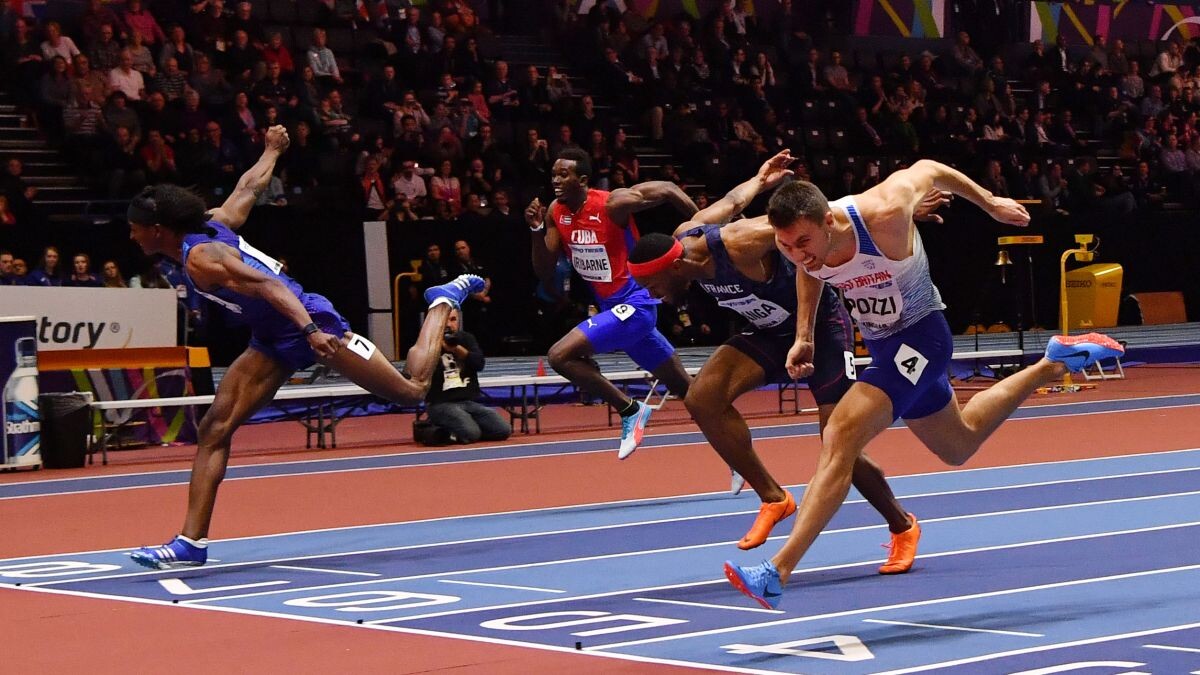
2. Pushing boundaries
World Athletes of the Year Mondo Duplantis and Sydney McLaughlin-Levrone have elevated their respective events to new heights in recent years.
Both aged just 23, their progression and record-breaking exploits will most likely continue in 2023. The same applies to other dominant forces within the sport, such as world and Olympic triple jump champion Yulimar Rojas and marathon legend Eliud Kipchoge.
3. New eras
The sport, as with everything in life, continues to evolve. Kenya, for example, dominated the steeplechase for years, but now the leading forces in that discipline are from Morocco, Ethiopia and Kazakhstan.
The women’s throws, meanwhile, are now the domain of North America. And Japan is a leading force in men’s race walking.
New faces and countries will likely emerge in 2023, changing the landscape of the sport.
4. Sprint showdowns
Gone are the days where the world’s leading sprinters avoid each other on the circuit. Multiple world champion Shelly-Ann Fraser-Pryce, for example, will often line up against fellow Jamaican stars Elaine Thompson-Herah and Shericka Jackson. And 200m specialists Noah Lyles and Erriyon Knighton have clashed frequently in recent years. No doubt there will be many more high-octane sprint duels in store in 2023.
5. World Athletics Road Running Championships Riga 23
The newest global event within the sport, the World Athletics Road Running Championships Riga 23 will unite elite and recreational runners in the Latvian capital on September 30 and October 1. The range of distances — mile, 5km and half marathon — means there’s something for all of the world’s best endurance athletes to sink their teeth into. The same applies to the thousands of runners who’ll take to the streets of Riga for the mass races as they race in the footsteps of legends.
6. Crouser vs Kovacs
They provided one of the greatest duels the sport has ever witnessed at the 2019 World Championships, and there’s no sign of the rivalry ending between Ryan Crouser and Joe Kovacs. The shot put giants have won numerous global titles between them. Crouser has been a dominant force in recent years, but Kovacs also hit an all-time career peak in 2022 with a lifetime best of 23.23m, taking him to No.2 on the world all-time list behind Crouser. No one would be surprised if either man broke the world record in 2023.
7. At the double
When the timetable for the 2023 World Championships was release a few months ago, it became clear that many popular doubles — such as the 100m and 200m, 800m and 1500m, 1500m and 5000m, 5000m and 10,000m, 20km and 35km race walk, women’s long jump & triple jump, and women’s 200m and 400m – would be doable in Budapest. The likes of Yulimar Rojas, Shaunae Miller-Uibo, Fred Kerley and Sydney McLaughlin have all hinted at attempting major championship doubles in recent years, so it will be fascinating to see who enters more than one discipline in the Hungarian capital.
8. Continental Tour Gold expands
The global one-day meeting circuit will have 14 Gold level meetings in 2023, taking in new stops in Botswana, Grenada and Melbourne.
It means there are now Gold meetings in five different continental areas. The wider series has also expanded with 165 Continental Tour meetings currently on the calendar for 2023, 13 more than in 2022.
9. Distance duels
Endurance athletes are extra fortunate in 2023 because they will be able to compete at all three global championships, covering a range of surfaces. Letesenbet Gidey and Hellen Obiri provided one of the most thrilling clashes at the World Championships in Oregon, and there’s a good chance they’ll race one another again, either in Bathurst, Budapest or Riga.
World 5000m champion Jakob Ingebrigtsen, meanwhile, could potentially line up against two-time world 10,000m champion Joshua Cheptegei in Budapest — or even on the circuit throughout the season.
There are four women active in the marathon — Brigid Kosgei, Ruth Chepngetich, Amane Beriso and Tigist Assefa — with sub-2:16 PBs, all of whom could push one another to a world record. And in the race walks, the likes of Toshikazu Yamanishi and Massimo Stano could clash at either 20km or 35km — or both.
10. World Athletics Cross Country Championships Bathurst 23
One of the first big highlights of the year will take place Down Under when Bathurst hosts the World Cross Country Championships.
Recent editions have been highly competitive and engaging, and that will no doubt be the case once more as hundreds of the world’s best distance athletes take to Mount Panorama. And, as is the case with Riga and Budapest, there are opportunities for recreational runners to be a part of the event too.
(01/05/2023) Views: 695 ⚡AMPby World Athletics
Five-time European champion Mahiedine Mekhissi announces his retirement at the age of 37
One of the greatest European steeplechasers in history Mahiedine Mekhissi from France has announced his retirement from athletics at the age of 37.
In an illustrious decade-long spell, Mekhissi won medals at three successive Olympic Games between 2008 and 2016 and titles at five consecutive editions of the European Athletics Championships between 2010 and 2018.
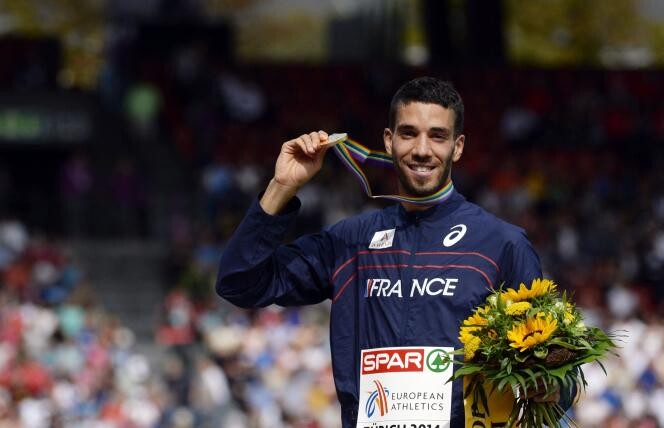
But in recent years, Mekhissi has struggled with leg and foot injuries and hasn’t completed a 3000m steeplechase since winning gold for the fourth time at the 2018 European Athletics Championships in Berlin.
“I have stopped because the will is no longer there. I no longer have the desire to train. I felt that this was the right moment to stop. Put simply, if I ran, it would be to become world champion, Olympic champion, to win medals and break records.
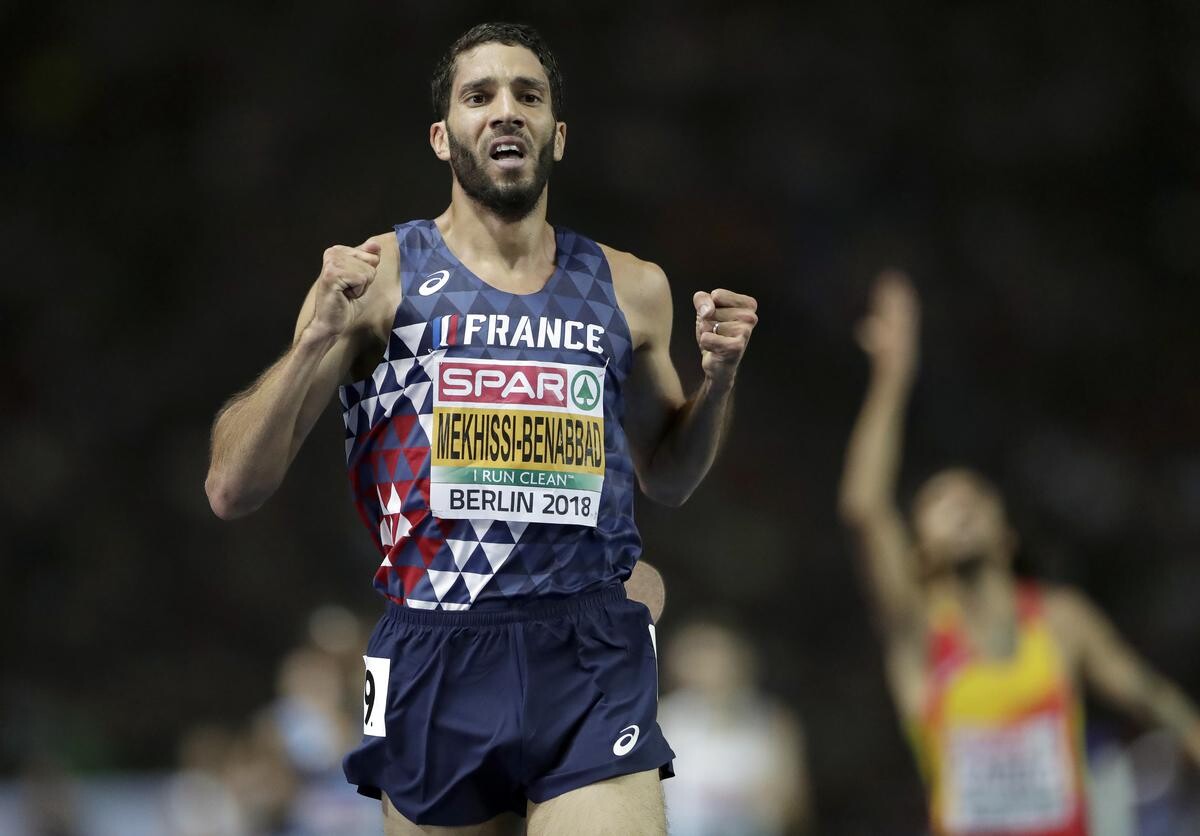
“To achieve those objectives, if you don’t have the will, there is no point in continuing. The desire is no longer there and I wanted to move on, to do something else with my life,” said Mekhissi as quoted by L’Equipe.
But despite being primarily renowned for his exploits in major championships, Mekhissi has also held the European record in the 3000m steeplechase for just over nine years, clocking 8:00.09 on home soil in the Paris Diamond League in 2013.
The mercurial Frenchman’s career was not without its controversies either. Mekhissi was famously disqualified at the 2014 European Athletics Championships after winning the 3000m steeplechase for taking off his vest and waving it in celebration as he came down the home straight for the last time.
But Mekhissi kept his win streak at the European Athletics Championships intact by returning to win a tactical and scrappy 1500m final on the last day of the championships with a devastating sprint. Even though he eased off in the last 20 metres, his last lap was still timed at 52.17.
"This is a discipline which I have never contested in a championships before and I won it with style," said Mekhissi, who is still the last non-Ingebrigtsen to win the 1500m title at the European Athletics Championships.
Aside from his Olympic and European triumphs, Mekhissi also won bronze medals in the 3000m steeplechase at the 2011 and 2013 World Athletics Championships.
He also demonstrated his versatility by winning the 1500m title at the 2013 European Athletics Indoor Championships in Gothenburg while his last medal came on the mud in Tilburg in 2018, helping France to team silver in the mixed relay at the SPAR European Cross Country Championships.
Mekhissi's ten fastest 3000m steeplechase races
8:00.09 Paris (2013)
8:02.09 Paris (2011)
8:02.52 Brussels (2010)
8:03.23 Brussels (2014)
8:06.60 Eugene (2013)
8:06.98 Hengelo (2009)
8:07.45 Sotteville (2014)
8:07.86 World Championships, Moscow (2013)
8:07.87 European Championships, Barcelona (2010)
8:08.15 Brussels (2016).
(01/05/2023) Views: 703 ⚡AMPWorld Athletics boss Sebastian Coe meets Sports CS Ababu
Kenya is ready to abide by World Athletics guidelines in view of preserving the country’s strong tradition of competing and winning clean, Sports CS Ababu Namwamba has said.
Nawamba Wednesday told the visiting World Athletics President Sebastian Coe that the government will champion for cultural change in sport by inculcating the value of integrity amongst the athletes.
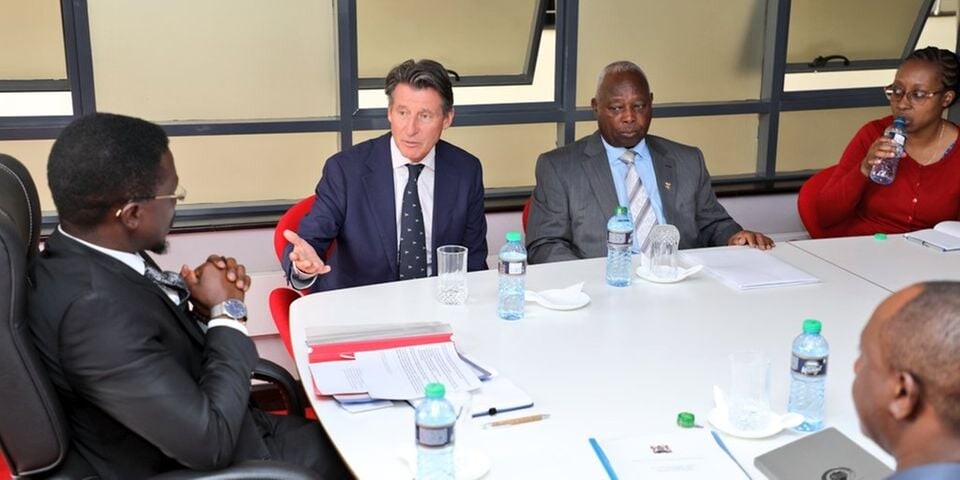
Namwamba said that they will partner with the Athletes Integrity Unit (AIU) and Athletics Kenya to ensure that issues pertaining to athletics sports management and Kenya's battle against doping is achieved.
"I am a strong believer in Abraham Lincoln's philosophy that it is more honorable to lose than to cheat. Our athletes must also live by this," Namwamba told Coe, who paid him a courtesy call at Maktaba Kuu office, Nairobi Wednesday afternoon.
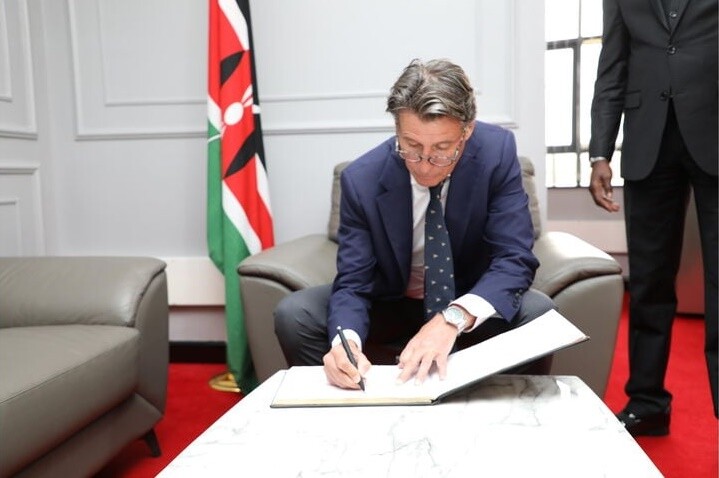
Coe, who arrived in the country on Tuesday, is on a one week private visit and holiday in the country.
The World Athletics boss will Thursday hold discussions with Athletics Kenya officials, coaches and athletes at the Weston Hotel, Nairobi.
Coe, 66, will also have a session with the media starting at 11m at the same hotel.
Coe’s visit comes five weeks after chairing a World Athletics Council meeting in Italy , which gave the country a great reprieve on matters of doping.
Even though Kenya stayed in Category “A” of countries where doping is prevalent, the country escaped a ban despite the skyrocketing cases of doping cases in the country.
Coe lauded Kenya’s efforts to fight the doping scourge adding that the move by the Kenyan government to increase the funding in the fight against doping to Sh619 million annually for a period of five years, was evident enough.
Coe said that the funding will help increase the number of tests, investigations besides bolstering the already comprehensive education programs by Athletics Kenya and Anti-Doping Agency of Kenya (ADAK).
In the last four years, 90 Kenyan athletes have been banned or suspended for varying doping offences with 30 cases coming last year.
(01/04/2023) Views: 752 ⚡AMPby Ayumba Ayodi
Sebastian Coe
Emily Sisson, Conner Mantz, Jenny Simpson, Tirunesh Dibaba Headline 2023 Aramco Houston Half Marathon
The Houston Marathon Committee announced today the elite athletes who will chase the $10,000 first-place prize in this historically fast race. Elite fields for the Chevron Houston Marathon which is held simultaneously on Sunday, January 15, will be announced tomorrow.
American records in the half marathon and marathon were set in Houston last year, but by the end of 2022, Emily Sisson had broken them both. Houston will be Sisson’s first race since running 2:18:29 at the Bank of America Chicago Marathon in October, shattering Keira D’Amato’s record by 43 seconds. Earlier in the year, her 1:07:11 performance in Indianapolis shaved four seconds off Sara Hall’s half marathon record.
“I have really enjoyed racing here in the past and am excited to start my 2023 season in Houston,” said Sisson who finished fifth in the 2019 Aramco Houston Half Marathon. “I felt good coming out of Chicago and am really looking forward to another opportunity to race.”
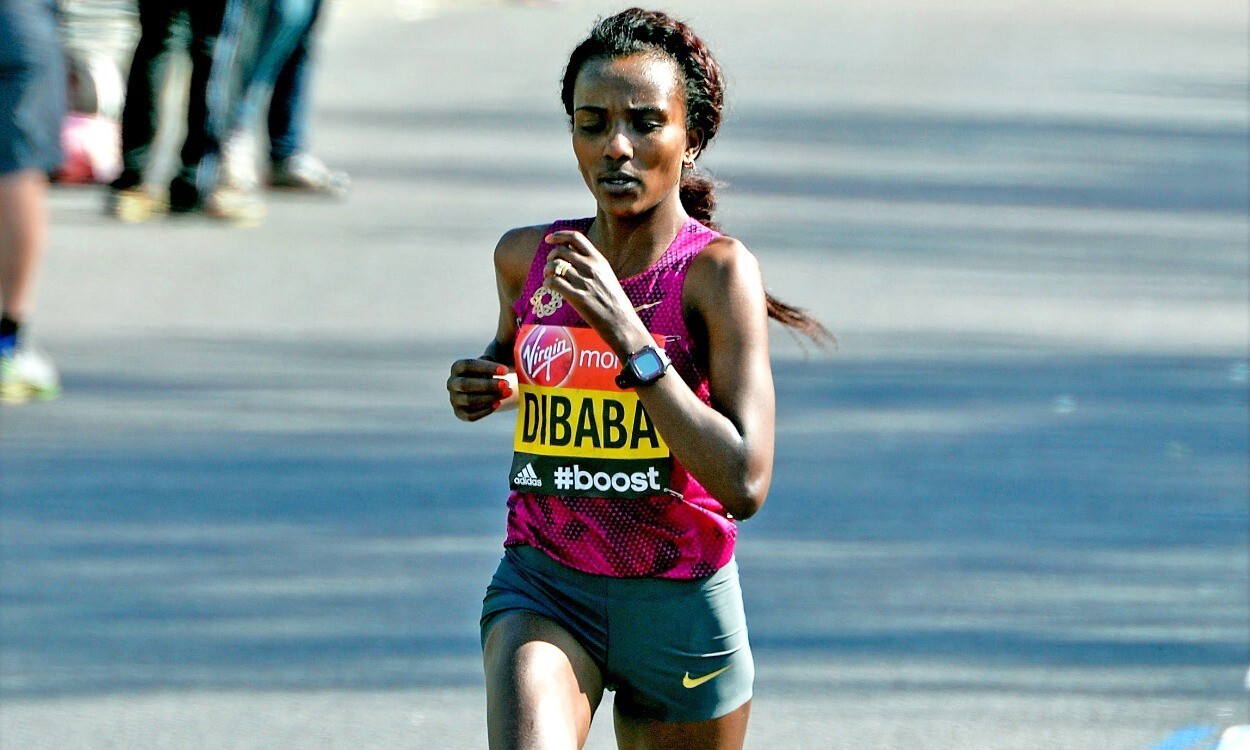
Sisson will have to contend with one of the greatest distance runners of all time as Tirunesh Dibaba of Ethiopia makes a return to competition after a more than four-year hiatus. The three-time Olympic gold medalist and five-time world champion has not raced since 2018 but says after giving birth to a second child in 2019 and then battling COVID-19, she is ready to add another chapter to her storied career.
“Houston is a famous race and my training has been going well,” said Dibaba, the 2017 Chicago Marathon Champion. “It seemed like the best way to test myself and see what could be next.”
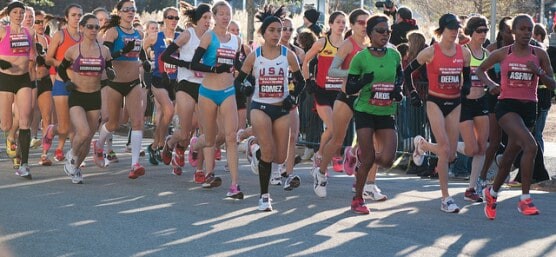
Other top contenders in the women’s half marathon elite field include 2021 Berlin Marathon runner-up Hiwot Gebrekidan of Ethiopia and 2022 World Championship Marathon fourth-place finisher Nazret Weldu of Eritrea. Dom Scott will attempt to break the South African half marathon record of 1:06:44, after a 3rd place finish in Houston last year. The top Americans include 28-time U.S. Champion Molly Huddle who set the then-American record here in 2018, as well as World Champion and Olympic Bronze Medalist Jenny Simpson who will make her half marathon debut.
“All of the racers I am learning from speak so highly of their experience with the Aramco Houston Half Marathon,” said Simpson. “It’s the perfect place for me to make my half marathon debut because the timing, course and organization are so well tested.”
In the men’s race, Edward Cheserek of Kenya, known to fans as “King Ches,” will look to trade in his crown for a king-sized belt buckle. Cheserek is coming off a 1:00:13 half marathon personal best in Valencia last month. “After Valencia this fall, I’ve trained harder and think sub-60 is possible,” said Cheserek, a 17-time NCAA Champion at the University of Oregon. “Houston is known for being a fast course and I want to have a chance at a personal best.”
Cheserek will face off against 2019 champion Shura Kitata of Ethiopia who lines up for his fourth Aramco Houston Half Marathon. With career marathon victories in London, Frankfurt and Rome, Kitata says he “feels home and comfortable in Houston.”
Other contenders to watch are Ethiopia’s Leul Gebresilase Aleme, runner up at last year’s London Marathon, and 2020 Olympian Mohamed El Aaraby of Morocco. The top American in the field is Conner Mantz of Utah. Mantz, the 2020 and 2021 NCAA Cross Country Champion at BYU, made his much-anticipated marathon debut in Chicago last October running 2:08:16, the fastest debut ever by an American-born runner.
Houston-native Frank Lara will return for a second consecutive year. Lara, a former Gatorade Texas High School Runner of the Year, was the top American finisher in the marathon last year. This year he competes in the half marathon.
The HMC is the only organizer to host two World Athletic Gold Label events simultaneously, which are Sunday’s Chevron Houston Marathon and Aramco Houston Half Marathon. These two races will have over 27,000 registrants, with an additional 6,000 registrants in the We Are Houston 5K presented by Aramco and Chevron, held on Saturday, January 14.
“Whether you are an elite athlete or a new runner, our committee is dedicated to hosting your individual pursuits with the utmost care and respect for the extraordinary efforts made to toe the start line with us,” said Wade Morehead, Executive Director of the Houston Marathon Committee.
The Aramco Houston Half Marathon and Chevron Houston Marathon will be broadcast on ABC13 from 7 a.m.-10 a.m., on Sunday, January 15 with a race day recap at 10:35 p.m. Joining ABC13’s Greg Bailey and Gina Gaston as expert commentator will be Des Linden, the 2018 Boston Marathon winner and 50K world-record holder. Linden made the first of her two U.S. Olympic Marathon teams in Houston in 2012. The trio will be joined by long-time analyst and Rice University cross country coach Jon Warren.
(01/04/2023) Views: 684 ⚡AMPby Letsrun
Aramco Houston Half Marathon
The Chevron Houston Marathon offers participants a unique running experience in America's fourth largest city. The fast, flat, scenic single-loop course has been ranked as the "fastest winter marathon" and "second fastest marathon overall" by Ultimate Guide To Marathons. After 30 years of marathon-only competition, Houston added the half-marathon in 2002, with El Paso Energy as the sponsor. Today the...
more...Pogo hops: one drill to boost leg strength and prevent injuries
While your comfortably cushioned shoes keep you rolling along for hours, they may be preventing you from tapping into your body’s natural elasticity. Christopher McDougall and Eric Orton, coauthors of Born to Run 2: The Ultimate Training Guide, suggest working on foot and leg strength to enhance your ability to bound along the ground lightly, and tout leg stiffness as key.
Leg stiffness, the authors share, doesn’t mean (in this case) having tight muscles or reducing range of motion–rather, it means creating a stiff base so that muscles and tendons can recoil quickly. The more quickly you rebound into the air, the less likely you’ll get injured–after all, injuries happen when your feet meet the land rather than mid-stride.
The more quickly you can spring off each leg, the less your knee, calf, or Achilles tendon is forced to support your body. To get started, try adding pogo hops into your weekly training routine.
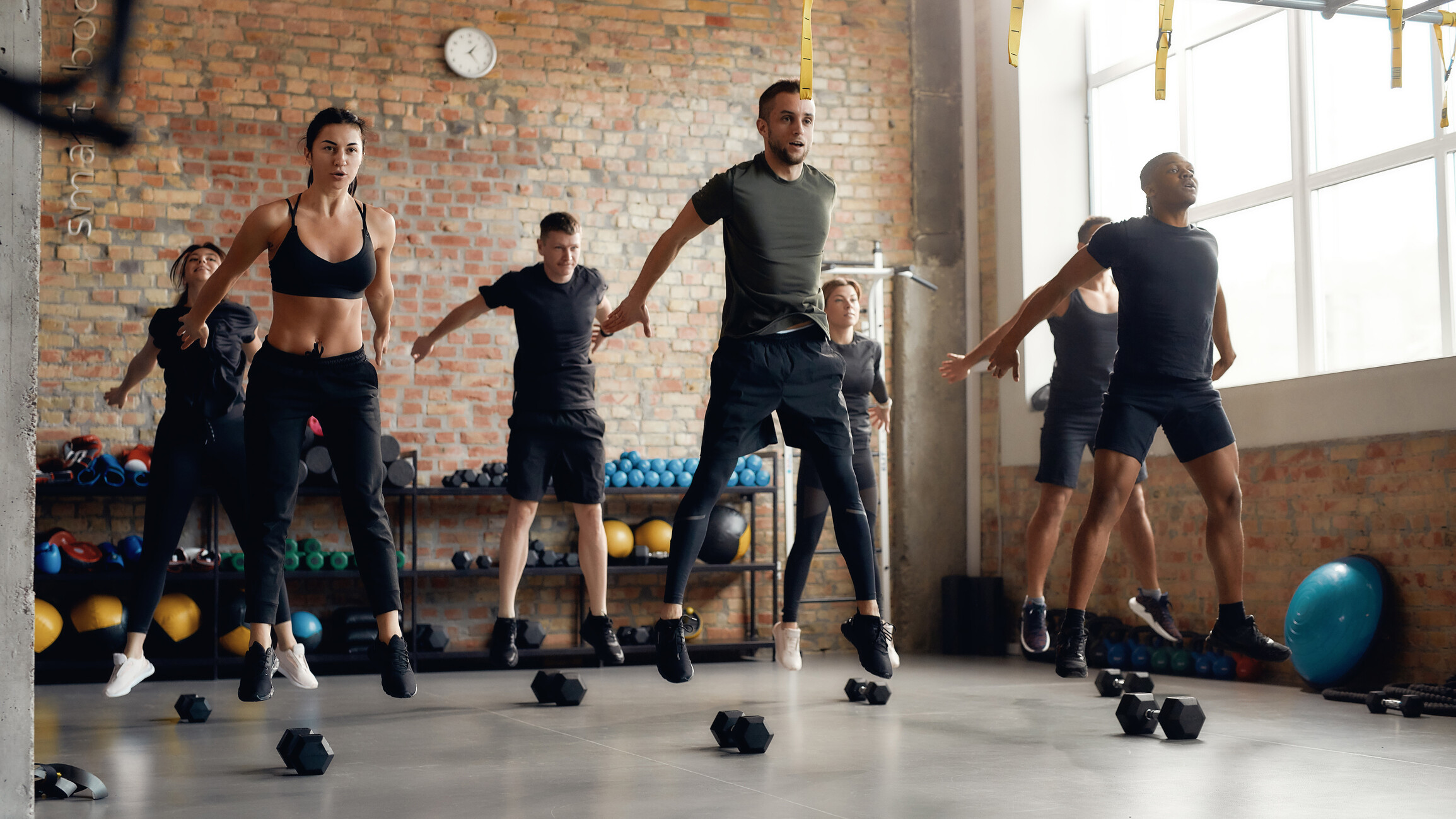
Pogo hops
Pogo hops “engage the arch and calves to activate natural elastic leg energy,” McDougall and Orton explain. By practicing these, you’ll learn to minimize ground contact while enhancing elastic energy.
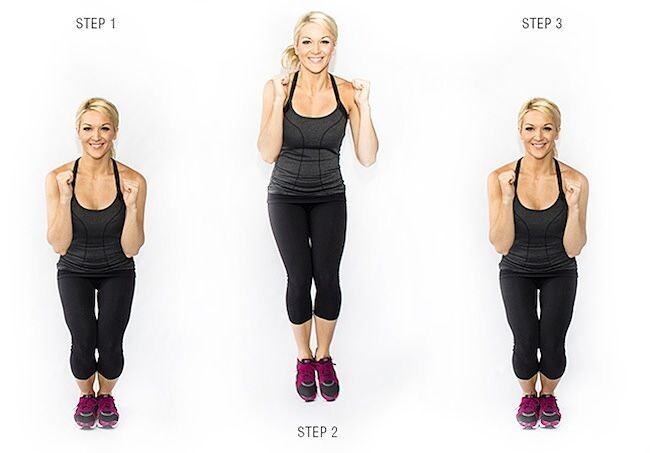
Pogo hops
Pogo hops “engage the arch and calves to activate natural elastic leg energy,” McDougall and Orton explain. By practicing these, you’ll learn to minimize ground contact while enhancing elastic energy.
Focus on getting off the ground quickly, with short bounces the goal rather than achieving height. Do these in bare feet, if possible–running shoes are OK too.
Two feet
Hop quickly up and down, jumping from your ankles with as little knee flex as possible–just like you would in a mosh pit, the authors suggest. Once you have a good pogo hop rhythm going, add some variety by jumping from side to side, front to back, and wherever your hops lead you.
Hop for 30–45 seconds or until you can no longer pogo quickly. Slow pogo hops increase ground contact time, so you want to avoid them.
One foot
Pogo just like you did before, but with one foot only.
Limit these to 10–15 and stop before you fatigue, limiting ground contact time.
(01/04/2023) Views: 878 ⚡AMPby Keeley Milne
Ethiopian Derara Hurisa to defend crown at 2023 Tata Mumbai Marathon
Ethiopia’s Derara Hurisa returns to defend his crown at Asia’s most prestigious Tata Mumbai Marathon on January 15, 2023, in a competitive Elite men’s field, with a dozen runners holding personal bests under the 2:08:09 course record he set in 2020.
The 18th edition of the USD 405,000 prize fund World Athletics Gold Label Road Race takes place after a two-year pandemic-forced break and will also witness over 55,000 amateurs across six categories on its much-awaited return.
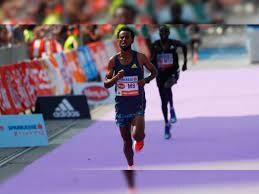
The elite men’s and women’s winners will take home USD 45,000 each. The runners will be
further incentivized by a Course Record Bonus of USD 15,000.
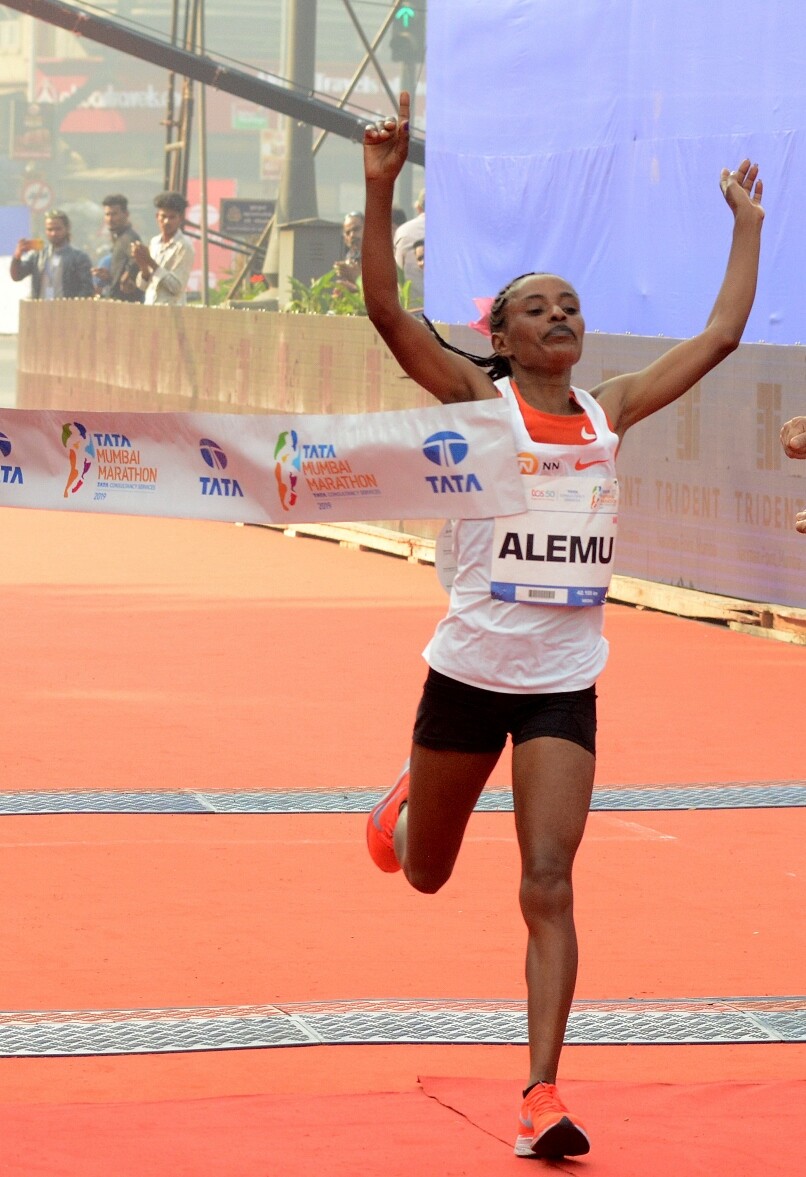
“I’m up for the challenge and have set my sights on the title,” said Hurisa, who clinched the 2021 Guadalajara Marathon in Mexico in a time of 2:12:28.
Toeing the start line in the men’s section are also Hurisa’s compatriots Ayele Abshero and
Hayle Lemi and Kenya’s Philemon Rono, a training partner of the legendary Eliud Kipchoge.
Abshero was runner-up here in 2020, 11 seconds adrift of Hurisa, on an AIMS-certified course that is widely regarded as challenging. Abshero, who finished 10th at the 2022 Linz Marathon in Austria in 2:09:37, has a personal best of 2:04:23, which makes him the fastest in the field.
With a personal best of 2:04:33, Lemi is the second fastest in the group.
“I’m excited about my first Tata Mumbai Marathon. I’ve heard it’s a tough course,” said Lemi, winner of seven marathons, including the Boston Marathon in 2016 and Dubai in 2015. “It’s a tremendous field and is going to be close,” added the Ethiopian, a.k.a. Lemi Berhanu, who was runner-up in the 2021 Boston Marathon.
Rono finished an impressive sixth at the 2019 Boston Marathon and won the Toronto Marathon the same year in 2:05:00. He recorded sixth-place finishes at the 2021 Abu Dubai Marathon and the 2022 Seoul Marathon.
Chepkech, the dark horse
In the women’s field, seven runners hold personal bests under the course record of 2:24:33 set by Valentine Kipketer in 2013, with Dera Dida (Ethiopia), Sharon Cherop (Kenya) and Rahma Tusa (Ethiopia) leading the charge on their debut here.
Silver medalist at the 2019 World Cross Country Championships, Dida won bronze in 10,000m at the 2019 African Games. In 2022, she won the Bejaia Half Marathon in 71:17 and finished eighth at the Great Ethiopian Run 10K.
“The Tata Mumbai Marathon has been on my running bucket list for some time. I’ve heard the people of Mumbai and India are very passionate about the running festival, and I look forward to this experience,” Dida said.
Cherop won marathon bronze at the 2011 World Championships and emerged victorious at the 2012 Boston Marathon. In 2022, she finished third at the Nairobi Marathon and the Buenos Aires Marathon.
Tusa took fourth place at the 2022 Sydney Marathon in 2:26:30 and the 2021 Valencia Marathon (in 2:23:20). She was fifth at the 2018 New York Marathon and won in Rome the same year.
Kenya’s Sheila Chepkech, also a first-timer in Mumbai, is the dark horse here. She won the 2022 Nairobi Marathon in 02:27:04. Previously, she finished second at the 2018 Milan Marathon and the 2017 Kosice Marathon. Also in the fray is the 2019 winner Worknesh Alemu of Ethiopia.
Vivek Singh, Jt MD, race promoter Procam International, said: “A truly world-class field will descend in Mumbai for the Tata Mumbai Marathon, a reflection of the event’s stature as one of the top 10 marathons in the world. The TMM returns bigger and better, and the spirit of #HarDilMumbai will burst to life come race day, with runners taking part across six categories.”
International Elite field:
Men:
Derara Hurisa (ETH) 2.08.09 (Course Record holder)
Ayele Abshero (ETH) 2.04.23
Hayle Lemi (ETH) 2.04.33
Philemon Rono (KEN) 2.05.00
Kebede Wami (ETH) 2.06.03
Aychew Bantie (ETH) 2.06.23
Hailu Zewdu (ETH) 2.06.31
Merhawi Kesete (ERI) 2:06:36
Masresha Bere (ETH) 2.06.44
Okubay Tsegay (ERI) 2.06.46
Reuben Kerio (KEN) 2.07.00
Hosea Kiplimo (KEN) 2.07.39
Abdela Godana (ETH) 2.08.06
John Langat (KEN) 2.09.46
Abida Ezamzamil (MOR) 2.09.52
Mesfin Nigusu (ETH) 2.09.53
Augustine Choge (KEN) 2.20.53
Women:
Dera Dida (ETH) 2.21.45
Sharon Cherop (KEN) 2.22.28
Rahma Tusa (ETH) 2.23.20
Sifan Melaku (ETH) 2.23.49
Adanech Anbesa (ETH) 2:24:07
Zinah Senbeta (ETH) 2.24.21
Ayantu Kumela (ETH) 2.24.29
Worknesh Alemu (ETH) 2.24.42
Letebrhan Haylay (ETH) 2.24.47
Zenebu Fikadu (ETH) 2.25.11
Rodah Tanui (KEN) 2.25.46
Kumeshi Sichala (ETH) 2.26.01
Lemeneh Kasu Bitew (ETH) 2.26.18
Sheila Chepkech (KEN) 2.27.04
Beshadu Birbirsa (ETH) 2.30.03
Gode Chala (ETH) 2.33.22
Anchalem Haymanot (ETH) Debut.
(01/04/2023) Views: 728 ⚡AMPby Sports Africa
Tata Mumbai Marathon
Distance running epitomizes the power of one’s dreams and the awareness of one’s abilities to realize those dreams. Unlike other competitive sports, it is an intensely personal experience. The Tata Mumbai Marathon is One of the World's Leading Marathons. The event boasts of fundraising platform which is managed by United Way Mumbai, the official philanthropy partner of the event. Over...
more...You cannot perform well in a polluted environment Says Eliud Kipchoge
Protecting the environment is a priority for many in 2023, and athletes like Eliud Kipchoge are leading the way.
In 2020, the Kenyan double Olympic gold medalist and world record holder adopted 50 hectares of forest land in the Kaptagat Forest near where he spends most of the year training at high altitude.
“If you train in a polluted environment, then you cannot perform,” marathon great Kipchoge told the BBC from his homeland.
“Kaptagat Forest made a huge difference in my career. I’ve been here for the last 20 years and without this forest, and staying in the area, I think that I could not be where I am today.”
“I realized that the only way to perform and to actually enjoy running is by training in a good place, breathing clean air.”
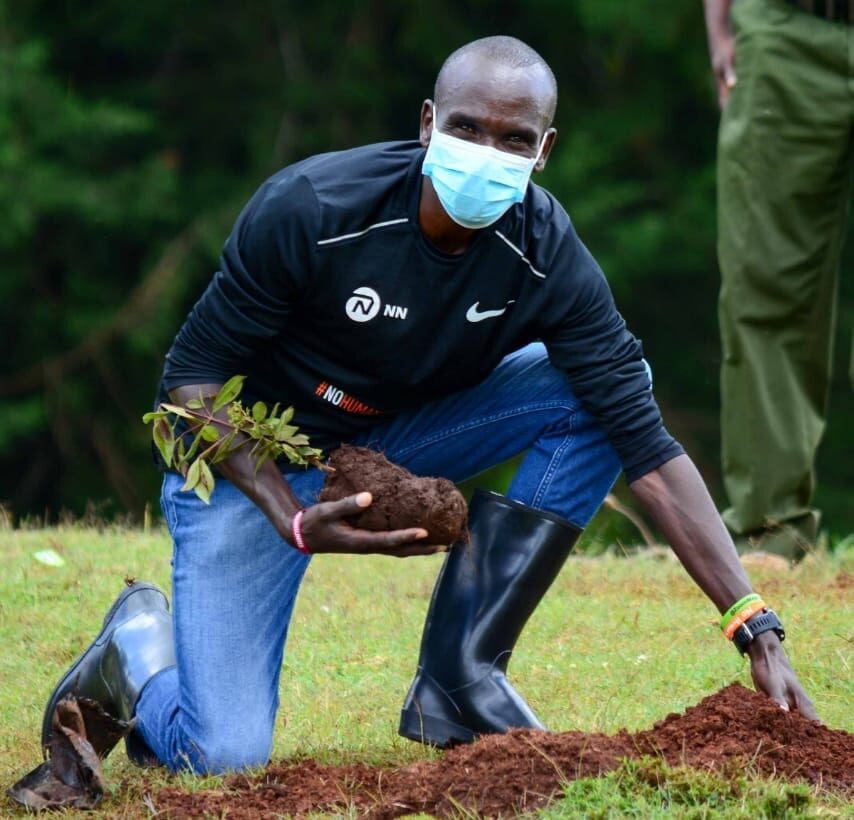
A year later, the distance-running great decided to create a foundation that focused on education and the environment, including planting trees.
To date, Kipchoge has adopted 130 hectares of forest, and claims that it’s ‘just the start’.
His wider goals include adopting a forest in every country in which he would plant indigenous trees.
Kipchoge revealed the principles he employs in his daily routine in order to help protect the environment, in an interview with Olympics.com for Earth Day 2022:
“Every day is Earth day for me,” Kipchoge told Olympics.com.
“I have improved my lifestyle to help fight climate change. I walk more, I minimize my water usage and I always try to encourage others to plant a tree on an important day or anniversary.
"My daily green effort is walking. I walk as much as I can instead of driving everywhere, so I can minimize my emissions."
Creating Africa’s Olympic Forest
Protecting the environment is also an area of focus for the International Olympic Committee (IOC).
In 2021, the IOC started an initiative to grow 590,000 native trees across approximately 90 villages in Mali and Dakar 2026 Youth Olympic Games host nation Senegal.
The Olympic Forest is an important element of the IOC’s strategy to address climate change, which includes cutting emissions in line with the Paris Agreement, and reducing the impact of the organisation’s footprint. With an end-goal to become climate positive, the IOC is set to cut its emissions 30 percent by 2024 and 50 percent by 2030, and compensate more than its remaining emissions.
While planting trees will help to protect the environment, the project also aims to create wider social and economic benefits for communities in Mali and Senegal that are heavily impacted by droughts and floods.
(01/04/2023) Views: 696 ⚡AMPReady to run stronger and faster? Start building your base
Whatever your running goals are this season, making sure you have a strong base is essential. Just like a well-built house, creating a solid foundation is key before beginning to train for specific racing goals. Working on aerobic efficiency, and improving the structural ability of your body to withstand training stresses are ideal things to focus on as you embark on a new season of running.
A running base is usually built over six weeks or longer: the specifics will depend on your running experience and fitness level. Even if you haven’t taken an off-season, spending a few weeks dialing in the basics will get you started on the right (or left) foot.

Strengthen your aerobic engine
Essential to base training is improving your ability to use oxygen–creating a strong aerobic engine. The more efficiently you can use oxygen when you run, the longer you can delay the point at which lactic acid begins to build up (a.k.a. you reach your lactate threshold), and the longer you’ll be able to maintain a faster pace once you begin to add speedwork. Base training should include lots of easy and steady-state running, allowing you to recover quickly between runs.
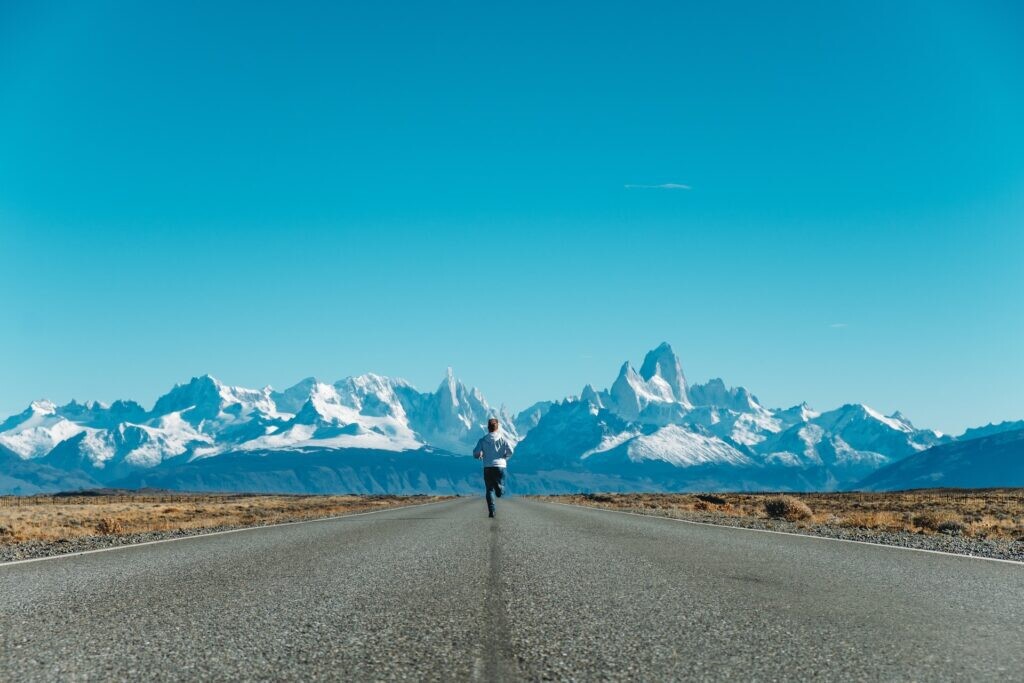
Coach and podcast host Jason Fitzgerald explains on Strengthrunning.com that runners should gradually increase mileage as they begin to build their base. While the amount of volume you add to your regular running will vary depending on your experience and goals, most runners will have one long run per week (or every second week) that they should build on.
Build structural tolerance and durability
Structural tolerance or integrity refers to the capacity of your tendons, ligaments and joints to withstand a progressive increase in physical training. The greater your structural tolerance, the longer your body can continue to resist fatigue and injury.
While your base training will include mostly easy mileage, you can start to build structural tolerance by taking some of those easy runs over rolling hills and varied terrain. Adding in some basic strength training and mobility exercises is another great way to build your structural tolerance, and you don’t need fancy gym equipment to get started.
Try this bodyweight-strength routine at home and stay injury-free (and fast) all season. You’ll make your entire body stronger and more resilient to injuries, which will allow you to train harder later on without getting injured.
(01/03/2023) Views: 656 ⚡AMPby Keeley Milne
British man completes 365 straight marathons, earning a well-deserved beer
On Saturday, Gary McKee completed his 365-day run streak of a marathon every day in his hometown of Cleator Moor, U.K. Thousands of supporters and media were on hand to help him celebrate his accomplishment of covering more than 9,500 miles (15,289 kilometers) while raising more than $2,000,000 for charity.
McKee’s marathon streak was not the only streak that ended. McKee went one year without drinking, and celebrated his huge run with a well-deserved cold one. The beer was a personalized craft IPA from Ennerdale Brewery in Cumbria, U.K., called “The Marathon Man 365 IPA”.
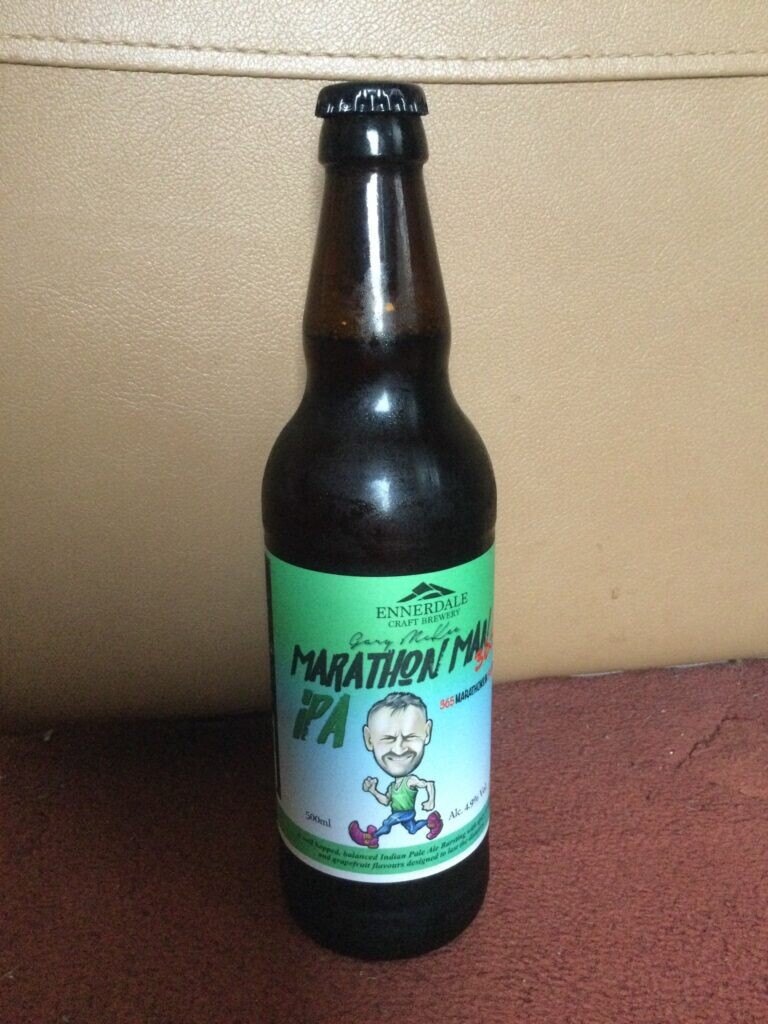
McKee ran the final stretch with his friends and family and immediately thanked everyone who came out for all their support during his challenge: “The reason I’m doing this is that I’m lucky enough to be able to take on a physical challenge of this scale, and every day I think about all the people going through cancer treatment who face their own physical and emotional challenges.”
McKee ran for Macmillan Cancer Support and Hospice in West Cumbria, which supported his father through a cancer diagnosis in 1997. His father recovered from cancer, but died from an unrelated illness in 2005.
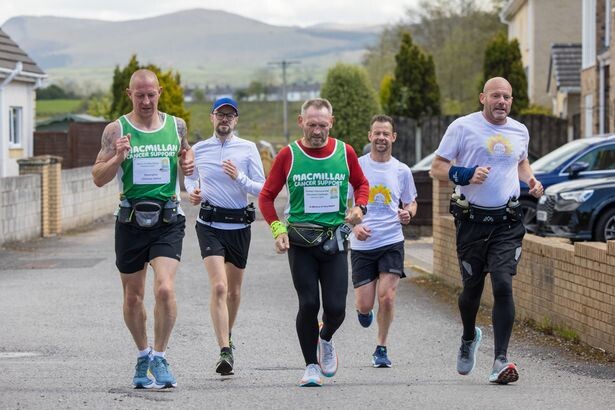
McKee, who is himself a father of three, routinely woke up at 5 a.m. and headed out on his marathon before starting his work shift at 2 p.m.
Although McKee is considered to be the first British runner to run 365 consecutive marathons, Spanish ultrarunner Ricardo Abad Martinez holds the world record, with 607 marathons in 607 days between October 2010 and February 2012.
McKee told local news he will take a break from marathoning over the next couple of weeks to spend time with his family before planning his next challenge.
(01/03/2023) Views: 694 ⚡AMPby Running Magazine
Ugandans Joshua Cheptegei and Prisca Chesang reign in Madrid
Two-time world 10,000m champion Joshua Cheptegei and Ugandan compatriot Prisca Chesang were victorious at the San Silvestre Vallecana, a World Athletics Elite Label road race, in ideal conditions in Madrid on Saturday (31).
The men's 10km race had been billed as a thrilling encounter between world 10,000m record-holder Cheptegei and Spain's world 1500m bronze medalist Mohamed Katir. The Ugandan star, who hadn’t competed since the World Championships in Oregon, took command of the pacing duties right from the start and his swift early pace could only be followed by Katir, his compatriot Jesús Ramos and Italy's Ilias Aouani.
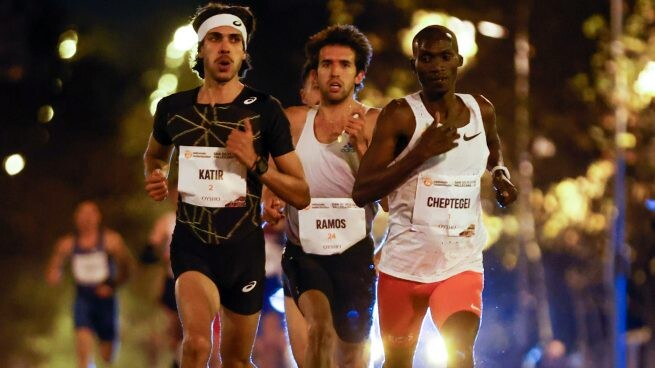
The first kilometer, which includes an uphill section of about 350 meters, was covered by the lead quartet in 2:41. The speed then increased over the second kilometer, covered in 2:36 for a 5:17 2km split, with Cheptegei always at the helm. During the third kilometer the two Spaniards briefly took the lead to reach 3km in 8:00, a pace which proved too fast for Aouani.
Over the following kilometers, Katir and Cheptegei ran absolutely even, none of them ahead of the other and the tandem went through halfway in a brisk 13:16, still with Ramos for company. Ramos began to fade about 200 meters later and the race became a fascinating clash between Cheptegei and Katir.
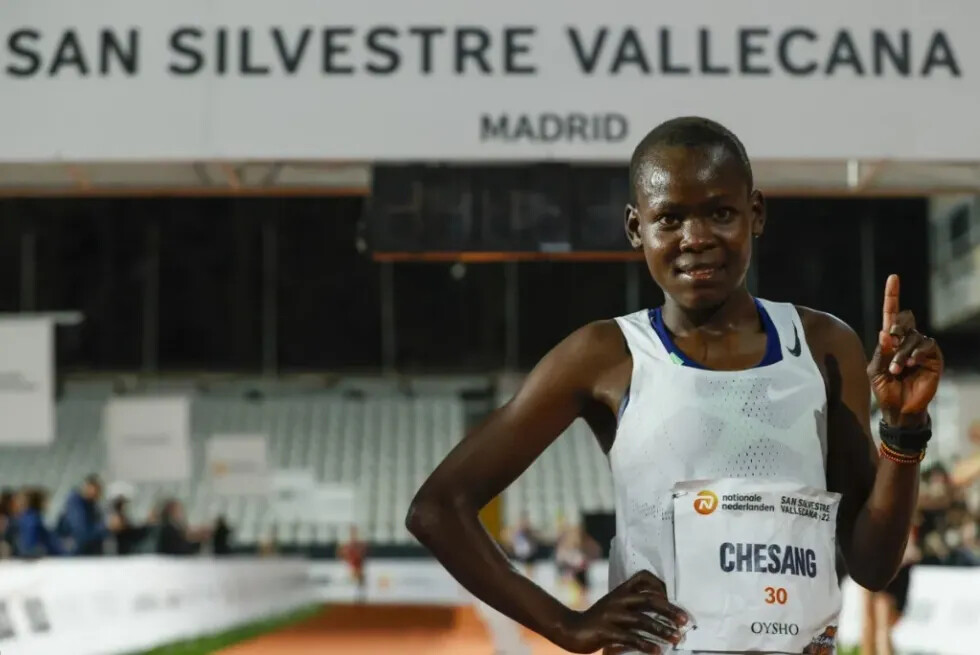
The Ugandan, who holds the second ever quickest 10km performance of all time (26:38), tried to get rid of Katir after reaching 7km in 18:35, but the 24-year-old Spaniard remained in close attendance. The key move came with the clock reading 20:45, shortly before the 8km checkpoint, when Cheptegei finally managed to open up a gap of a few seconds over the Spaniard.
The Kapchorwa native progressively extended his lead over the ninth kilometer – the toughest of the race – and then cruised home in 27:09, the fifth quickest performance in Madrid, to finish 10 seconds ahead of Katir while Ramos managed to keep his chasing Spaniards at bay to finish third in 27:52.
“I knew Katir was going to be a tough rival since he has improved a lot over the last few seasons,” said Cheptegei. “Today's race was my first competition in more than five months so my only target was to regain sensations. Of course I also wanted to win so I’m leaving Madrid delighted.”
Chepetegi confirmed that he plans to defend his world cross-country title in Bathurst on 18 February and that he’ll likely make his marathon debut after the Paris 2024 Olympic Games.
Following the last-minute withdrawal of pre-race favorite Tsehay Gemechu, the early stages of the women's race became a three-way battle between world U20 5000m bronze medalist Prisca Chesang, Burundi's Francine Niyonsaba and Kenya's world steeplechase record-holder Beatrice Chepkoech. That trio covered the opening kilometers at 2:56/km pace, reaching 3km in 8:44, then the Ugandan teenager broke away from her rivals. By midway (14:29) she was six seconds ahead of Chepkoech, herself another 11 seconds clear of Niyonsaba.
The leader maintained her rhythm over the following kilometers but her pursuers' pace decreased. With a quarter of the race to go, Chesang's advantage on Chepkoech had grown to 18 seconds.
At the tape, Chesang was timed at 30:19, the third quickest performance here, bettered only by Brigid Kosgei (29:54) and Hellen Obiri (29:59) in 2018. Further back, Niyonsaba overtook a fading Chepkpech on the last uphill section to take the runner-up place in 30:58 to Chepkoech's 31:06.
Leading results
Men
1 Joshua Cheptegei (UGA) 27:09
2 Mohamed Katir (ESP) 27:19
3 Jesús Ramos (ESP) 27:52
4 Sergio Paniagua (ESP) 28:00
5 Aaron Las Heras (ESP) 28:04
6 Carlos Mayo (ESP) 28:04
7 Ignacio Fontes (ESP) 28:06
8 Carlos Díaz (ESP) 28:08
9 Nassim Hassaous (ESP) 28:13
10 Juan Anronio Pérez (ESP) 28:18.
Women
1 Prisca Chesang (UGA) 30:19
2 Francine Niyonsaba (BDI) 30:58
3 Beatrice Chepkoech (KEN) 31:06
4 Mahelet Mulugeta (ETH) 31:57
5 Naima Ait Alibou (ESP) 32:36
6 Laura Priego (ESP) 32:49
7 Nina Chydenius (FIN) 32:51
8 Laura Luengo (ESP) 32:53
9 Laura Méndez (ESP) 33:06
10 Clara Viñarás (ESP) 33:54.
(01/03/2023) Views: 953 ⚡AMPby World Athletics
San Silvestre Vallecana
Every year on 31st December, since 1964, Madrid stages the most multitudinous athletics event in Spain.Sport and celebration come together in a 10-kilometre race in which fancy dress and artificial snow play a part. Keep an eye out for when registration opens because places run out fast! The event consists of two different competitions: a fun run (participants must be...
more...Ethiopian Ejgayehu Taye misses 5k world record by 2 seconds as she wins in Barcelona
Ejgayehu Taye came within two seconds of the world 5km record she set two years ago at the Cursa dels Nassos, while Adisu Girma made it an Ethiopian double at the World Athletics Label road event in Barcelona on Saturday (31).
Paced by Latvia's Dmitrijs Serjogins, 22-year-old Ethiopian Taye went through the opening kilometer in a swift 2:49, well on schedule to challenge her own world record of 14:19 she set exactly one year ago at the same venue. By then, Taye had Germany's Konstanze Klosterhalfen for company as the newly-minted European cross country silver medalist was aiming to break the European record of 14:44.
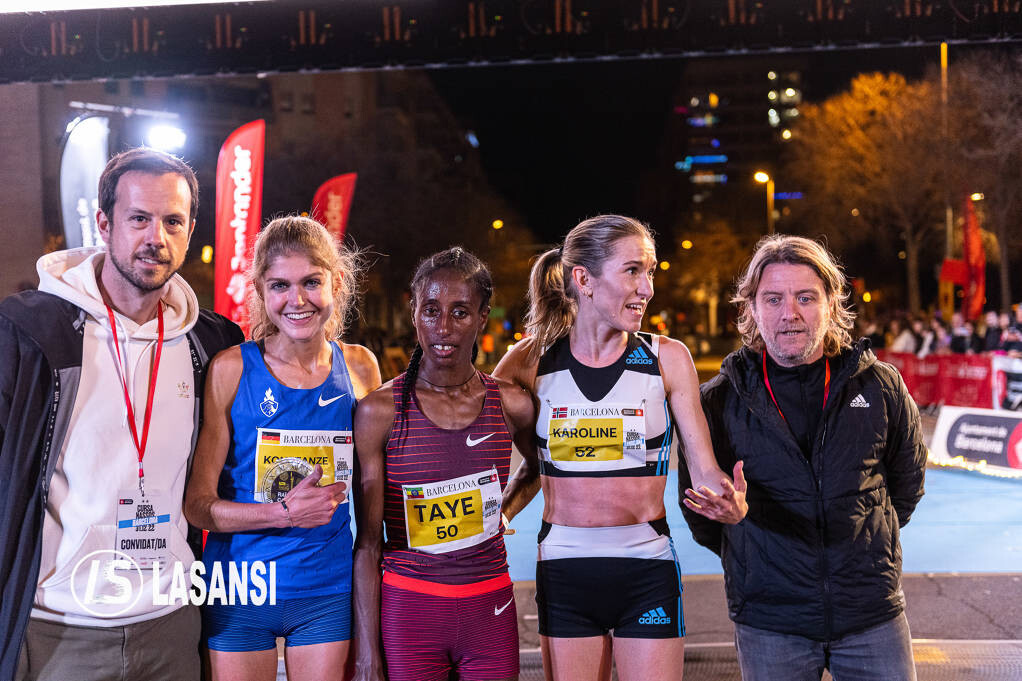
Taye, the world indoor 3000m bronze medalist, maintained her pace over the second kilometer which was reached in 5:39 and shortly afterwards that cadence proved to be too fast for Klosterhalfen who began to lose ground. Running always at the pacemaker's shoulder, Taye was timed at 7:04 at halfway, well inside the world record pace, and 8:33 at 3km while Klosterhalfen was 10 seconds in arrears by then. Surprisingly, Norway's European cross-country champion Karoline Grovdal was never a factor and passed 3km a further eight seconds behind Klosterhalfen.
Taye, who was fifth over 5000m at the Olympic Games, slowed slightly during the fourth kilometer to clock 11:29 at 4km and then desperately tried to find another gear in the final kilometer to revise her own world record. She crossed the line in 14:21, the second-fastest 5km performance in history and just two seconds off her world record.
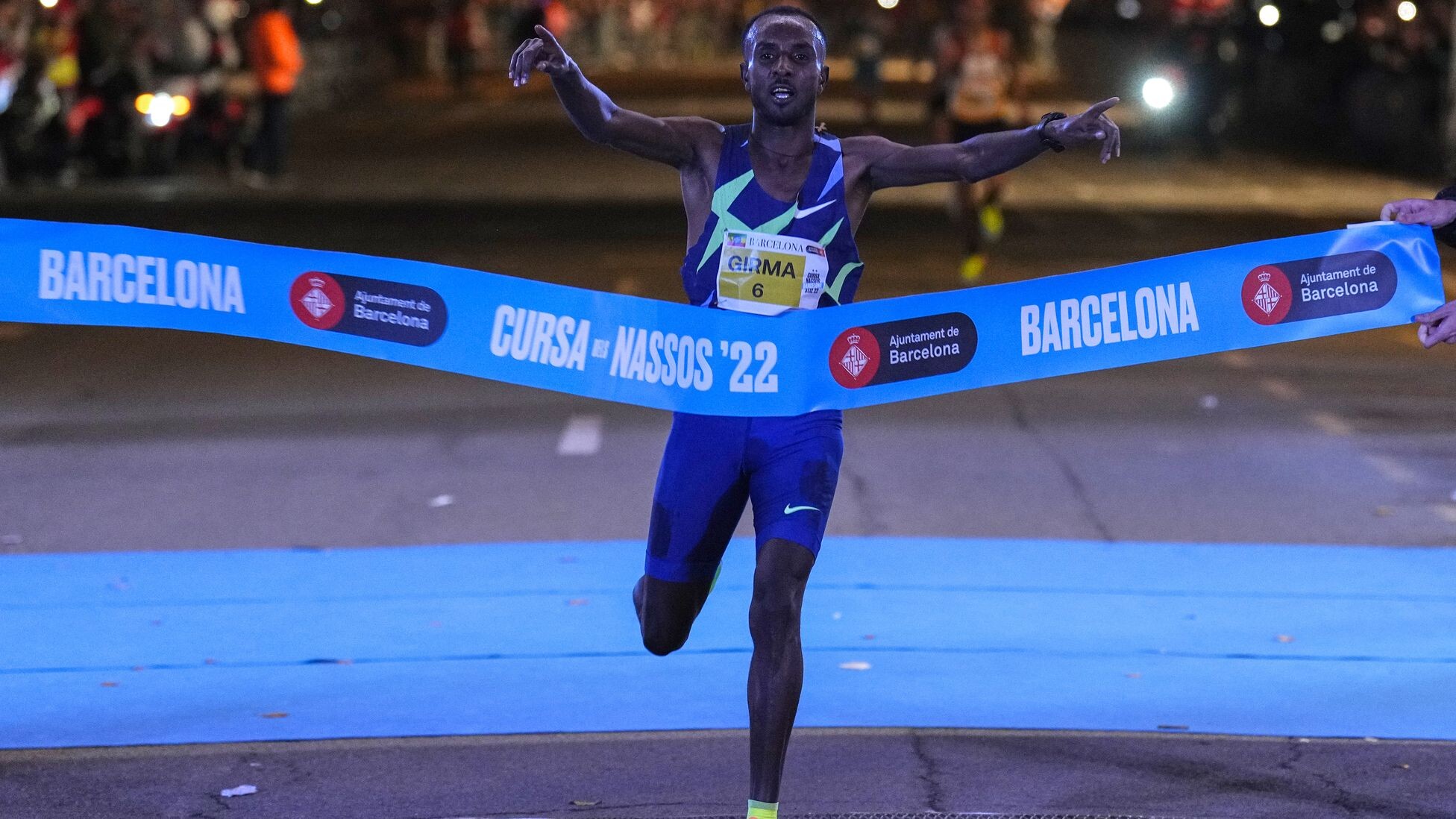
Klosterhalfen was a distant second, 31 seconds adrift in 14:52, eight seconds outside the European record but gaining revenge on third placed Groval, timed at 15:06.
“Maybe I went off too fast and I finally could not maintain the required pace to break the record but anyway I'm satisfied as it's a great performance,” said Taye, who has a 5000m track PB of 14:12.98 and who finished sixth over 10,000m at the World Championships in Oregon. “I'll run next in the Valencia 10K in a couple of weeks' time.”
World 5000m champion Jakob Ingebrigtsen had been due to compete in the men’s race in what would have been his first race on Spanish soil, but the Olympic 1500m champion was forced to withdraw on the eve of the race due to illness.
In his absence, attention turned to Ethiopia's Adisu Girma, a 3:35.81 1500m specialist, Spain's Abdessamad Oukhelfen, a creditable 10th at the recent European Cross Country Championships, Switzerland’s Jonas Raess, and Spain's 2016 European 5000m champion Ilias Fifa.
The leading group covered the opening two kilometers at 2:40/km pace, but the cadence decreased over the following couple of kilometers and the lead quartet reached 4km in 10:50. Fifa was the first to launch a serious finishing kick some 800 meters from home, but 23-year-old Ethiopian Girma responded with a devastating burst of speed to break away from the Spaniard with ease and cross the finish line in 13:25 to Fifa's 13:30 and Raess's 13:31.
Leading results
Women
1 Ejgayehu Taye (ETH) 14:21
2 Konstanze Klosterhalfen (GER) 14:52
3 Karoline Grovdal (NOR) 15:06
4 Miriam Chebet (KEN) 15:36
5 Agate Caune (LAT) 15:44
Men
1 Adisu Girma (ETH) 13:25
2 Ilias Fifa (ESP) 13:30
3 Jonas Raess (SWI) 13:31
4 Andessadam Oukhelfen (ESP) 13:37
5 Mohamed Al Garni (QAT) 13:41.
(01/03/2023) Views: 734 ⚡AMPby World Athletics
Cursa dels Nassos
Certain local traditions may strike you as funny, bizarre, or downright disturbing. You may know that the Catalans ring in the new year by eating one grape with each chime of the clock at midnight, but did you know about the man with many noses ('home dels nassos')? Folklore has it that there's a man who has as many noses...
more...Top 10 most popular running stories of 2022
Tt’s time to recap the most popular running stories. This year, the running community saw a lot of firsts and controversies. It was the first time we were made aware of a 6-year-old running a marathon; it was also the first time we saw a runner who chain-smoked during a marathon. As many of us returned to our favourite races and conquered new goals, we can’t ignore some of the mind-boggling stories.
Here is a countdown of the top 10 most popular running stories of the year.
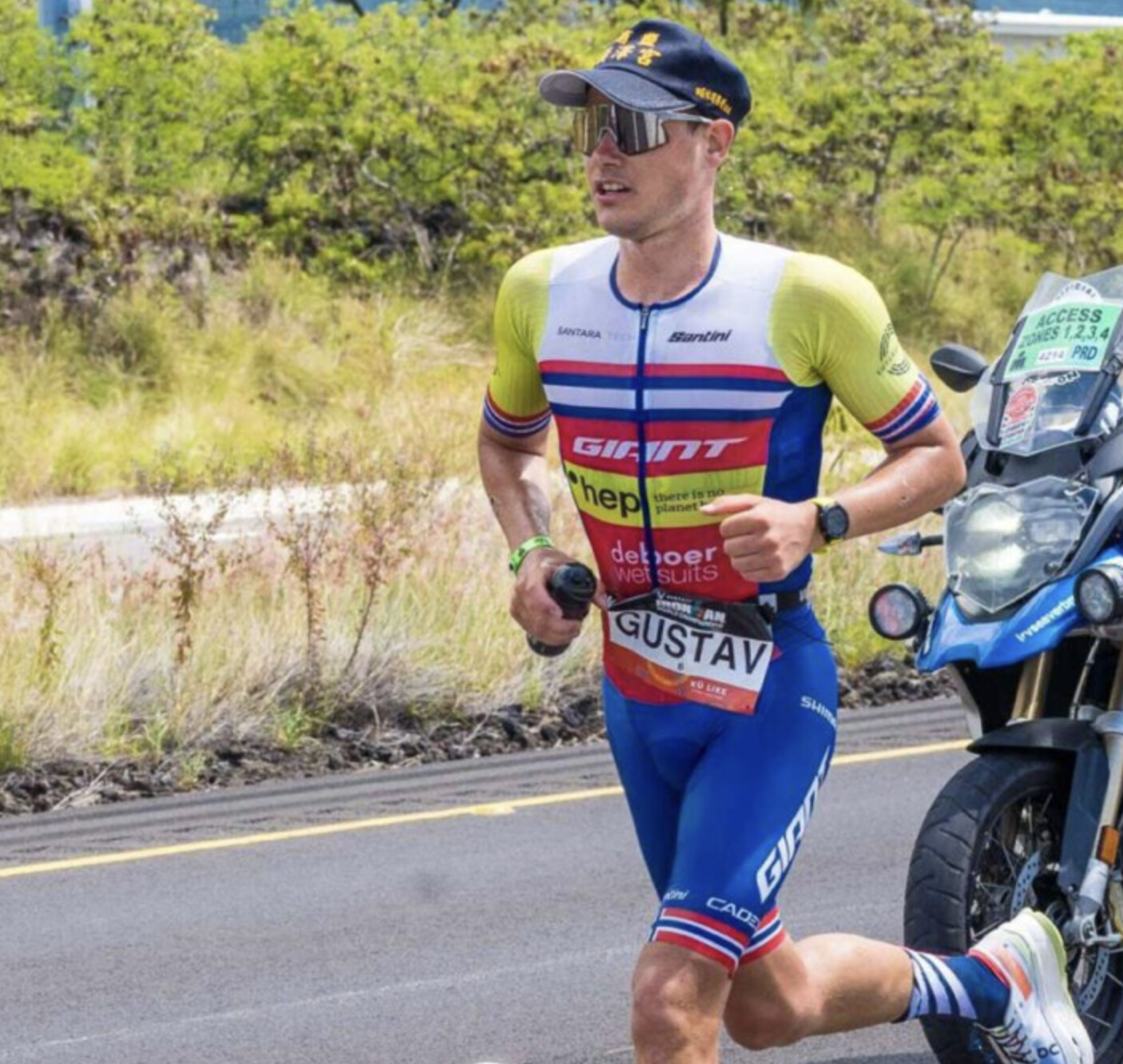
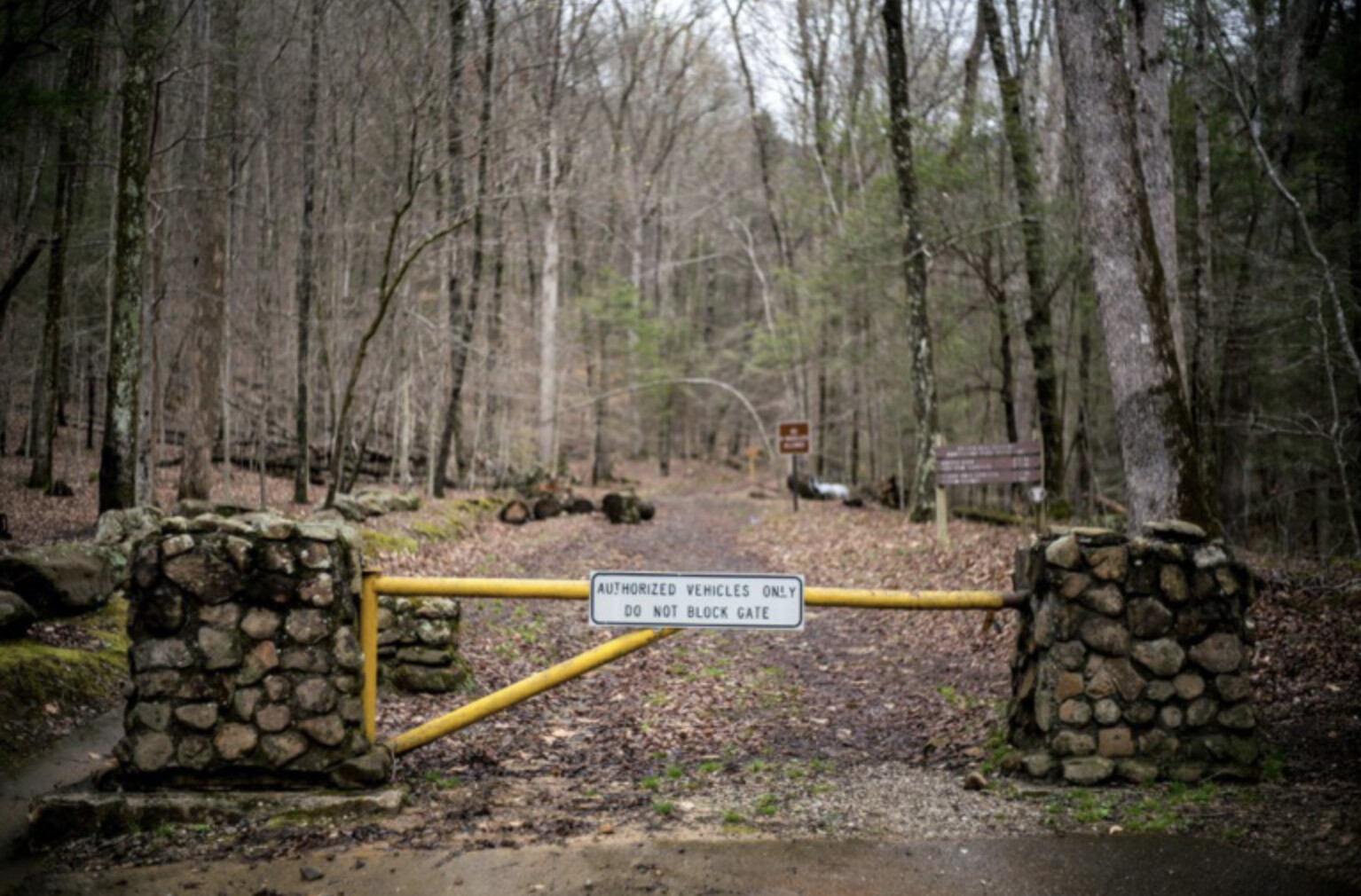
10) Ironman World Championship champion’s “chunky” shoes spark controversy
In October, Norway’s Gustav Iden made headlines as he ran a 2:36 marathon after a 180-kilometre bike and 3.8 km swim, earning his first Ironman world championships title. It wasn’t only his wild time that turned eyes, but the On Cloudboom Echo 3 carbon-plated running shoes that he wore, which have a reported stack height of 50 mm (legal for Ironman races).
9) Six-year-old’s marathon sparks controversy on social media
In May at the Flying Pig Marathon in Cincinnati, Ohio, a family of eight from Bellevue, Ky., all completed the 26.2-mile race together in eight hours and 35 minutes, including two children aged 12 and six. The family took on tons of criticism over the advisability of allowing a six-year-old to cover the marathon distance. Many experienced marathoners and coaches, including Lee Troop and Kara Goucher, have weighed in online, stating that six is too young for the marathon.
8) Turkey trot runner takes out his competitor at finish line
In November at a local 10K turkey trot, Xavier Salvador of Washington, D.C., impeded the line of Jack Huber of Delmar, N.Y., with 50 metres to go, after noticing Huber threatening to pass him on the right. Instead of checking if Huber was OK after the fall, Salvador made sure his GPS watch was stopped.
7) Barkley Marathons ends with no finishers (again)
In March, for the fifth straight year, the Barkley Marathons in Frozen Head State Park near Wartburg, Tenn., came to an end with zero finishers, after the only remaining two competitors, Karel Sabbe and Greig Hamilton, bowed out on their fourth loop (of five) of the 20-plus mile course. Sabbe’s fourth loop was one for the history books, as he was found off-course in another town, chatting with a garbage can who he thought was a person.
6) ‘Ultramarathon man’ Dean Karnazes attacked by coyote during 150-mile race
In August, acclaimed ultrarunner and author Dean Karnazes posted a video that he was attacked by a coyote during Headlands 150-mile Endurance Run, held outskirts of San Francisco. Karnazes said was OK, but that he had several cuts on his face and body from the attack.
5) “Poopgate” continues as Arizona high school bans track use
In February, human feces were found under the bleachers at the Red Rock High School track in Sedona, Ariz., which resulted in a ban on public use. In the aftermath, there was plenty of buzz and finger-pointing on social media about the ghost pooper’s possible identity, using the hashtag #poopgate. To this day, it is still a mystery who did the deed.
4) California man runs an ultramarathon in roundabout
In November, a runner from Healdsburg, Calif., was getting tired of his usual running routes, so he went out on a six-hour, 58-kilometre run around the local roundabout, never once switching directions. The best part is that, a week later, he did it again, in the opposite direction.
3) WATCH: Florida high school runner gets sucker punched mid-race
In March, we saw a candidate for “wildest video of the year” when a high school runner at a Florida track meet was sucker punched and knocked to the ground by another athlete during a 1,600m race.
2) Colorado runner wins all four races at Disney Marathon weekend
In January, Brittany Charboneau of Colorado climbed to the top of the podium on four occasions during the Disney Marathon Weekend in Orlando, Fla. She won the 5K, 10K, half-marathon and marathon over four days, while dressed as her favourite Disney characters. Simply amazing!
1) Chinese man runs a 3:28 marathon while chain-smoking
In November, we witnessed one of the wildest running stories ever, when Uncle Chen went viral for chainsmoking cigarettes during the Xin’anjiang Marathon in Jiande, China. It is well known that smoking cigarettes hinder running performance, but that didn’t seem to bother 50-year-old Uncle Chen, who clocked an impressive three hours and 28 minutes.
(01/02/2023) Views: 886 ⚡AMPby Running Magazine
Covid Completely Changed the Way We Stay Healthy—Here's How
Which hard-earned lessons about staying well have stuck.The height of the Covid pandemic was brutal. Three years after this all started, leading scientists tell us what hard-learned lessons have stuck when it comes to staying healthy now—and through whatever comes next.
Risk Management Is Huge

Before the pandemic, how often did you really think about defending yourself from respiratory bugs? “Most people were shrugging off the risk. Respiratory viruses weren’t that big of a thing,” says Amesh Adalja, M.D., an infectious-disease physician at the Johns Hopkins Center for Health Security. Covid forced us all to take viruses seriously on a daily basis, and it highlighted the power our personal habits—handwashing, masking, getting vaccinated, determining which indoor situations to take the risk on or not—can have over the likelihood of getting sick. Covid also made it clear that not managing risk had consequences beyond a tough stay in the hospital or, in mild cases, losing a few sick days. One 2022 study found that a person infected with Covid was 33 times as likely to suffer from a first-time arterial blood clot during the first week of infection as someone who had never had the disease. Respiratory viruses can trigger other real medical emergencies, and these compounding factors can damage major organs and raise your risk of autoimmune conditions. Even relatively mild Covid can cramp your breathing and gym stamina for months.
Vitamin D Is a Health Hero
Prepandemic, it was easy to think of vitamin D as a bone-building nutrient found in milk, and that was kind of it. But then Covid-era research showed a higher risk of testing positive for the disease among people with a vitamin D deficiency compared with people whose levels were fine. Experts suspected that optimal amounts of the vitamin may help shield you from Covid, as it does with other respiratory illnesses.
There’s no clear conclusion on that yet, says Eric Feigl-Ding, Sc.D., chief of the Covid-risk task force at the New England Complex Systems Institute. But doctors have long known that the nutrient plays a crucial role in immune health—and about one in three American adults is not getting enough.
Vitamin D helps your immune system “across the board,” says Feigl-Ding. It rallies parts of that system to get working against microbes, and it may also reduce inflammation—a process that plays a role in a huge number of health conditions, including cancer, heart disease, type 2 diabetes, Alzheimer’s, rheumatoid arthritis, and even depression.
If you already have enough vitamin D, extra won’t benefit you. (A blood test can tell you your level.) To stay at a healthy amount, aim for five to 30 minutes of midday, sunscreen-free sun exposure at least twice a week (your body uses it to make its own vitamin D) and eat D-rich foods. That’s salmon, trout, and fortified cow’s or plant milk. If you don’t eat these foods or get that much direct sunlight, consider taking a supplement as an “insurance policy” in the winter, Feigl-Ding advises.
Long Covid Is Helping Us Understand Other Illnesses
Even one of the pandemic’s most devastating and puzzling legacies, long Covid, may help drive up our understanding of health. This wide swath of troubles that linger for about half of people who’ve had symptomatic Covid—everything from joint pain to brain fog—may not end up being unique to this virus. And it’s creating a surge of interest in studying seemingly similar but often dismissed conditions like chronic fatigue syndrome (CFS) and post-treatment Lyme disease syndrome.
We’re still learning about long Covid, but among the theories about what causes these symptoms are organ damage, chronic inflammation (including of the central nervous system), and reservoirs of virus remaining in the body, Feigl-Ding says. These are some of the same factors scientists think may be involved in CFS.
Knowing more about long Covid could shed light on these other conditions, too, explains Dr. Adalja. What’s very clear, at least, is that “these illnesses are valid,” says William Schaffner, M.D., a professor of preventive medicine and infectious diseases at the Vanderbilt University School of Medicine.
The Basics Are a Big Deal
Health issues that develop over time, like stroke and type 2 diabetes, have been on the rise for years. About 60 percent of U. S. adults have at least one chronic illness, while four in ten have two or more. Yet until you’re diagnosed with one, the danger of chronic illness can feel far off.
Covid made it clear that people with chronic conditions were at a higher risk for severe illness, and it made people take an honest look at their health habits. Obesity, for instance, went from being “something I’ll get around to dealing with” to being a risk factor for complications from a scary new virus, says Dr. Schaffner. To clarify the synergy, Dr. Feigl-Ding tells people to “picture a glass.” Every risk factor—eating excess sugar, not exercising, not treating high blood pressure—adds water to the cup, while healthy habits decrease the water level. Covid can push the water over the rim and uh-oh.
The takeaway here is more of a reminder, really: You know what to do. You can prevent chronic illnesses by eating well, being active, avoiding tobacco, and being moderate with alcohol. Those small lifestyle habits may well save your life.
(01/02/2023) Views: 715 ⚡AMPby Men's Health
Adam Craig now setting sights on going the distance at 2024 Olympics
Borders athlete Adam Craig is setting his sights high but keeping his feet on the ground after completing his first competitive marathon.
Craig finished this month’s Valencia Marathon in two hours 13 minutes and 58 seconds and is now intent on improving on that to boost his hopes of qualifying for the 2024 Olympics in France.

“I’d love to be able to run at the Paris Olympics,” the 27-year-old told us. “Those sorts of races are the ones that I want to be in.”
UK Athletics requires athletes to achieve specified times to be considered for Olympic selection and to make it to the French capital, Craig reckons he will need to better his debut effort over 26 miles on the Spanish east coast by about five minutes, though target times have yet to be set for 2024.
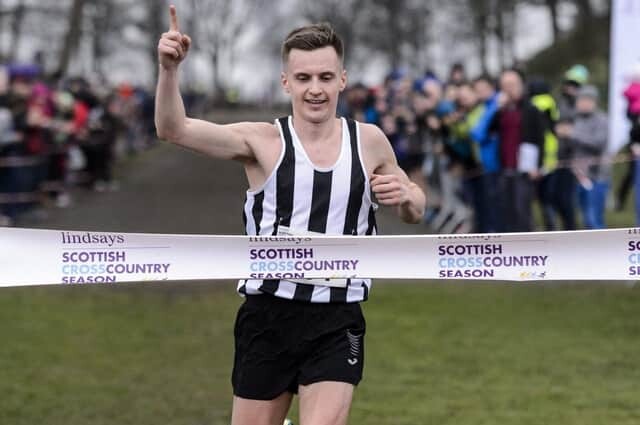
Craig remains focused on getting faster as 2023 goes on, however, and isn’t letting himself think about the Olympic Games too much just yet.
“Obviously to think about the Olympics is good to fuel the fire, but I’m also not putting everything on that just because very few people actually get to go to the Olympics and compete on that stage,” he said.
“It’s certainly something that’s on my mind but it’s not always to the forefront.”
Craig is planning to compete in two marathons in 2023 and how he fares in those races will determine whether he’s ready for the Olympics or not.
“If next year goes really well and I get another two marathons and can knock another couple of minutes off that time, then I’d probably go into 2024 thinking ‘right, let’s try and qualify for this’, but it could go really well or it could go the other way,” he said.
Whether they’re trying to qualify for the Olympics or just aiming to cover the distance, a runner’s first marathon is a step into the unknown, so in preparation for the Valencia Marathon – won by Kenyan Kelvin Kiptum in 2:01:53, the fastest debut ever over that distance – Craig asked peers and coaches for advice.
“Everyone that I spoke to kind of said the same thing, which is that I can give you my experience of a marathon but yours will be totally different,” he said.
"Everyone said you get to 20 miles and that’s when the race starts. I saw that 20 mile-sign and I thought ‘OK, yeah, I’m in a position now where I can switch that race head on and start looking to push on, even if it’s just a second or two per mile quicker’.”
Having got that race, held annually since 1981, under his belt, finishing 42nd out of almost 22,000 runners, Craig reckons he’s got plenty of room for improvement.
“In our build-up, me and my coach decided that we’d play it quite safe and leave a few stones to be turned over next time around, so we didn’t go away and use any kind of heat or altitude training or anything like that,” he said.
“There’s room for improvement, which is quite exciting.”
It’s often said by those running them that marathons are just as tough mentally as they are physically, the psychological aspect of keeping running for that long often being daunting even for seasoned athletes, and that’s something Craig agrees with now he’s got first-hand experience of going the distance.
He says he was forewarned and forearmed about the mental strength required before heading over to Spain and decided to break up the race into sections in his mind to give himself a sense of achievement along the way rather than just being faced with a distance close to that from his former home-town of Lauder to Edinburgh as a single sizeable challenge.
Even adopting that strategy, he admits he did have a wobble early on, however.
“About eight or nine kilometers in, I remember thinking ‘I’m not even a quarter of the way through this yet – there is a long way to go’,” he recalled.
“I definitely had dips in the race, but I had lots of little markers along the way, which helped me switch off and almost lose focus of where I was in the race or how far I had to go.”
Craig, currently racing for Team New Balance Manchester, has previously enjoyed success over shorter distances, competing for Great Britain over half-marathon and 10,000-meter distances, but is now looking to play a longer game.
(01/01/2023) Views: 749 ⚡AMPby Dan Challis
VALENCIA TRINIDAD ALFONSO
The Trinidad Alfonso EDP Valencia Marathon is held annually in the historic city of Valencia which, with its entirely flat circuit and perfect November temperature, averaging between 12-17 degrees, represents the ideal setting for hosting such a long-distance sporting challenge. This, coupled with the most incomparable of settings, makes the Valencia Marathon, Valencia, one of the most important events in...
more...How Trail Gear Became Streetwear
Earlier this year, the Gen Z icon Zendaya was photographed wearing a pair of the Swiss running brand On's Cloud Ultras. The Cloud Ultra is one of the cushiest and most rugged offerings in the On lineup, meant for "epic mountain mileage," according to the company's website. Yet Zendaya was not accruing mountain mileage at the time, or any mileage at all for that matter. She was on the street in Boston holding a green juice in one hand and her pet Schnauzer in the other.
Zendaya is not the first celebrity to take to trail runners. In a fashion shoot with Hypebeast, the rapper Pusha T called his Salomon XT-6s "the silhouette that's running the game." And Bill Murray, who seems to be every generation's icon, was spotted wearing a pair of On's Cloudventures at Cannes last year.
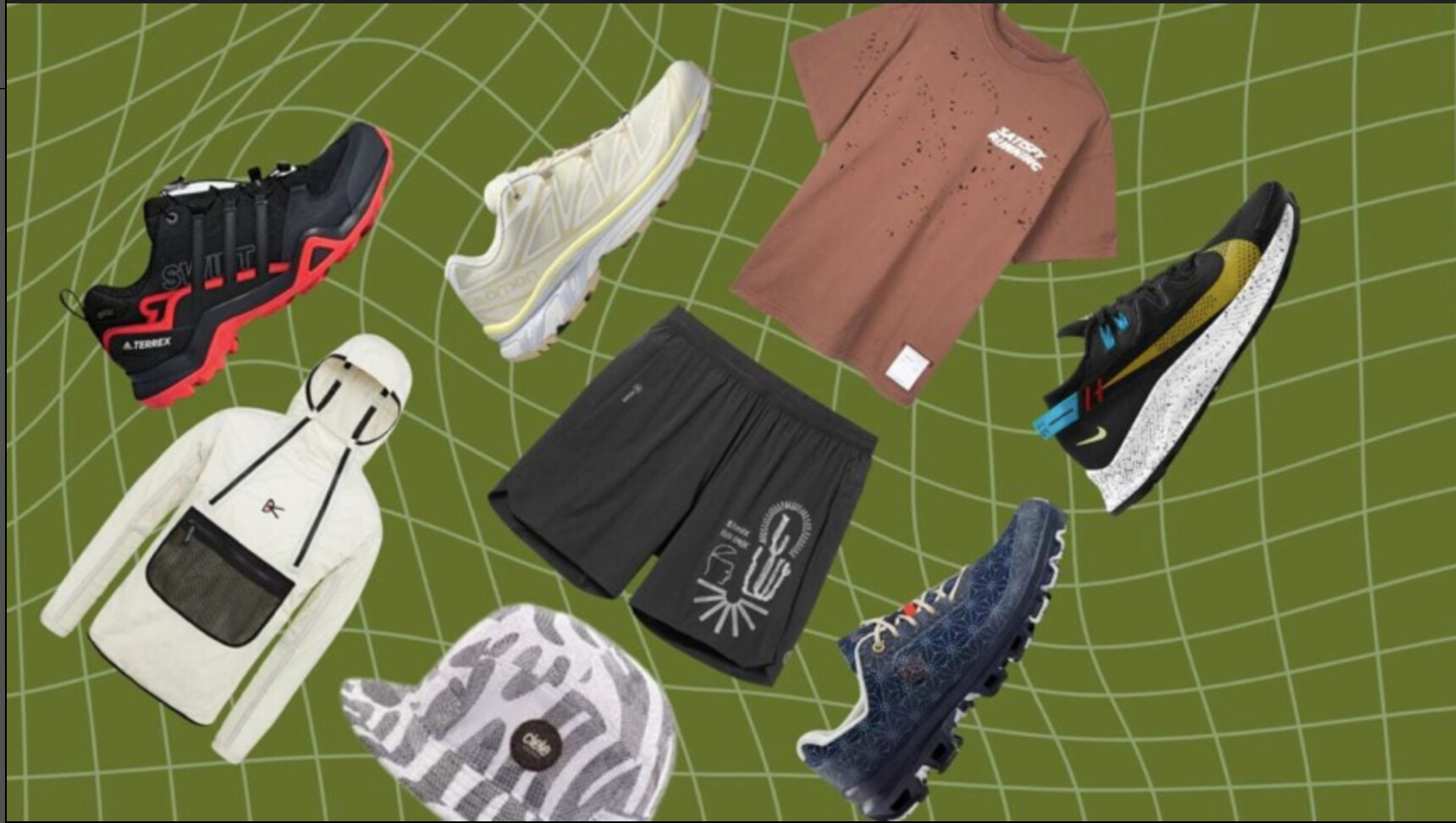
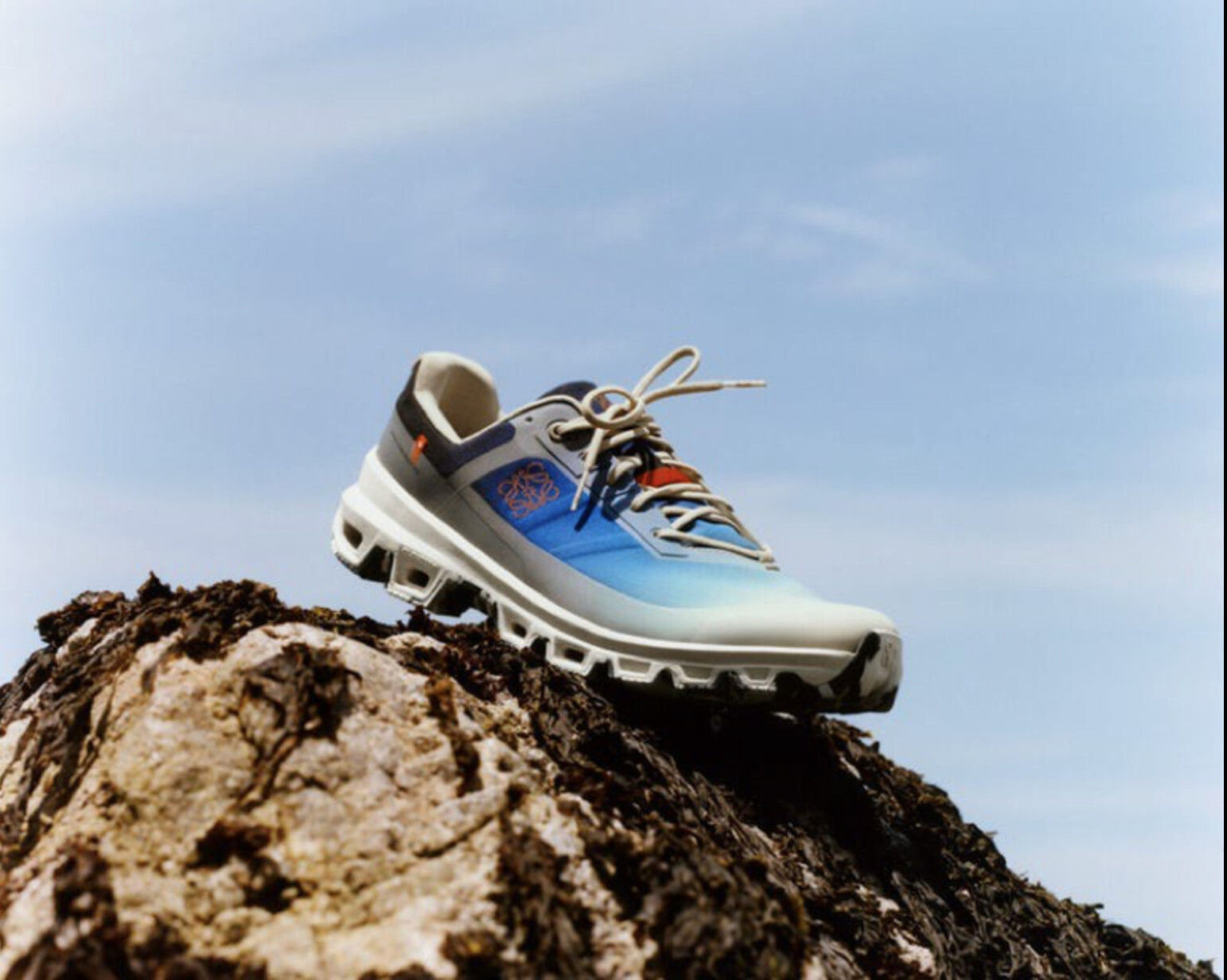
Of course, athletic apparel has a long tradition of finding its way from the courts, fields, and trails of competition to the closets of celebrities. "A Polo coat might be one of the most formal pieces of fashion menswear, but its origin story comes from a piece of functional clothing used for sport," explained Mike Belgue, the Brand Director for Reigning Champ, a performance brand that skillfully blurs the lines between fashion and function. The same brand that makes a super breathable Dot Air Running Pant also produces a $600 Handknit Varsity Sweater that has its roots in classic athletic wear. Like other boutique running brands, Reigning Champ seems to suggest that a company can be a one-stop-shop for looking your best and performing your best.
Where the Runway Meets Running Trails
What has been interesting, however, is the way running companies have responded to the recent surge of interest in the sport, both in terms of participation and influence, taking street style and incorporating it into their offerings. The inspiration now seems to be multi-directional. With the runway and running trails now sharing a surprising amount of DNA, high-performance and high-fashion have never been more aligned.
Take, for example, On's collaboration with the fashion brand Loewe. The product images from this collection do not feature people running but posed in various states of moodiness. The apparel on display is clearly designed to function as both a utilitarian piece of gear as well as a conversation piece. On's Active Jacket is an example of trail-ready streetwear with a nod to eye-catching design. Made of a lightweight and windproof ripstop nylon that folds down neatly into its own kangaroo pocket. I found it ideal for warm-ups, bike commutes, and cool jaunts. It also features an eye-catching angular neck-to-armpit zipper that sets it apart from purely performance-oriented windbreakers.
To Britt Olsen, the general manager of the Americas for On, such popularity beyond the trails isn't necessarily a surprise. "During the pandemic there was a clear signal that consumers were wanting casualization and comfort with style," she explained. "Performance will always be at the core of what we do, but as more people are wearing our pieces in a non-running environment, we are constantly exploring versatile and interesting new styles to fill those needs."
"Honestly, we used to be ashamed of our background in fashion," related Tom Daly, co-founder of the running and mindfulness brand District Vision. In their mid 20s, Daly and co-founder Max Vallot were working in the fashion industry in New York City and growing increasingly dissatisfied. They decided to start a brand that felt more in tune with their personal passions, but Daly now sees value in their fashion upbringing.
"Looking back, we can see a qualitative component to what we do that can be attributed to our backgrounds," said Daly, noting the care and attention they give to sourcing materials and creating products, steps too often overlooked in trying to achieve mass market appeal. "These things defy certain trends," he said. "And I suppose a background in fashion could give you the confidence to do that."
Authenticity Is Fashion and Function
When I asked Daly why trail running gear appears to the current zeitgeist, he alluded to the palpable passion running brands have for their products and communities. "Fashion yearns for authenticity, and there's something really authentic and respected about outdoor brands with beautiful values."
There is also something to be said about the overbuilt functionality of specialized gear. Belgue noted that "a shoe that one can run in for 20 kilometers in the mountains, in the rain, gives the user a sense of confidence and comfort when used out of the elements. It feels good to know that you have the gear on in case you need to run for the subway."
Ultimately, this sense of genuine joy might best summarize the unique union of street, trail, and fashion runway. "We love technical outdoor garments with hyper-specialized use cases," Daly explained. "We have a three-layer jacket with an external foraging pocket for fruits and vegetables and an internal waterproof compartment. This makes us happy."
It may just be that brands designing clothes that make them happy happens to be in vogue right now. The legendary costume designer Edith Head once said, "You can have anything in life if you dress for it." Perhaps what this marriage of trailwear and street style signals: what we want most right now, as we emerge into this post-pandemic cultural ecosystem, is one-part protection from the elements, one-part connection with the outdoors, and one-part joy in the guise of chunky mountain shoes, a swarthy zipper, or a foraging pocket.
It won't be long before big brands will start designing clothes meant to mimic this trend and the fashion cycle moves on in some ever-evolving Hegelian Dialectic that is style. The pop icon Zendaya will be photographed in something more polished, and trail shoes will be exclusively for trail runners again. In the meantime, let's all channel our inner Bill Murray and keep style, performance, and comfort synonymous for as long as possible.
(01/01/2023) Views: 812 ⚡AMPby Trail Runner Magazine
You Might Be Slower Soon After Getting a COVID Booster
New research finds a temporary decrease in a key aspect of fitness.
Everyone has that friend who got their COVID-19 vaccine and bounced back the next day, with little more than a sore arm. We’ve also heard (or told) stories of being in bed for multiple days after the first, second, third, and fourth shot.

While no one enjoys feeling unwell, runners have an added concern: How will a shot affect my upcoming training and racing?
A recent study offers some quantification to anecdotal evidence runners have been sharing for the past year and a half, where the new research found a small decline in aerobic capacity post-booster. Here’s how to incorporate that finding into your training plans.
Why Runners Care About VO2 Max
VO2max is often treated as the gold standard measurement of cardiovascular fitness. It represents the maximum amount of oxygen your body can use during exercise. This matters for runners because, all else equal, the more oxygen you can use, the harder you can work.
Given the significance of VO2 max to athletes, researchers in Belgium set out to test whether the COVID-19 booster affected it. They recruited 42 recreational endurance athletes (runners, cyclists, and swimmers) who were scheduled to receive their COVID booster—i.e., the third shot in the two-series Pfizer vaccine. Just before they got their shot, the athletes took a VO2 max test. This involved riding a stationary bike while wearing a device that measured oxygen consumption. As resistance on the bike went up, their oxygen consumption also went up until it eventually plateaued—indicating VO2max.
One week after receiving their booster, the athletes repeated the test. Compared to their performance pre-booster, their VO2max showed, on average, a 2.7 percent decrease.
Given that a decline in VO2 max reflects a decline in cardiovascular fitness, this finding is worth factoring into your training and racing plans. However, it’s worth noting that a 2.7 percent decrease in VO2 max does not necessarily mean a 2.7 percent decrease in speed. Here’s an example using Jack Daniels’s VDOT values (which are a proxy for VO2 max).
Let’s say a runner with a VDOT of 38 gets her COVID booster. This lowers her VO2 max (VDOT) by 2.7 percent, giving her a reduced VDOT value of 36.97. According to Daniels’s calculations, all else being equal, her previous 5K time of 25:12 would slow to about 25:45, or by 33 seconds—which is only 2.2 percent slower. If she’s fitter and has a half marathon time of 1:44:20 and a VDOT of 43? One week after the booster, her VDOT would be just below 42, and her half marathon time would increase from 1:44:20 to around 1:46:30, or by 2.1 percent.
VO2 Max Isn’t Everything
Admittedly, these calculations assume “all else being equal,” which is virtually impossible. Many other factors contribute to running performance, including running economy (how much oxygen you need to run a given pace), stride mechanics, and even perceived effort. Hielko Miljoen, a sports cardiologist at University of Antwerp and lead author on the paper, pointed out that in that respect, this study is only the beginning of an answer to how the booster affects performance.
“The next step in this investigation should be to do an endurance test, because VO2max is just one part of exercise capacity and athlete performance,” he says.
Additionally, the researchers only tested VO2 max one week out from the booster shot. While it’s unknown what effects may exist further out from the shot—the researchers did not retest the athletes at later intervals—it seems unlikely that the decline is permanent. “This study is by no means an answer,” says Miljoen. “It is trying to reassure people that the effects are not huge, probably not lasting.”
Weigh the Risks
Every medical decision is a personal one, and the reality is that getting the COVID-19 vaccine, including the booster, doesn’t come with a non-zero amount of risk.
“The entire field of medicine comes with statistics,” says Miljoen. “The benefit and harm of a certain medical procedure or intervention are only known on a population basis, so individuals must make up their own mind based on the data out there.”
While life-threatening risks of the vaccine are low, getting it or the booster may interrupt your training for a few days. A recent study of more than 1,000 elite Polish athletes found that the athletes lost an average of two and a half training days around getting the COVID vaccine. However, the same study found that athletes lost an average of eight training days due to COVID-19 infection. Given these and other research data, the authors concluded in favor of vaccination for athletes, writing that “the benefit–loss ratio strongly favors vaccination.”
Time Your Shot Strategically
While it doesn’t feel great to miss any amount of training, one advantage of vaccination and booster shots is that they can be timed to have minimal impact on a racing season—whereas COVID infection can’t.
Ben Rosario, executive director of Hoka NAZ Elite, recalls two of his athletes contracting what he believes was COVID in January 2020.
“I think it really affected them in the 2020 Olympic Trials marathon, because it was a real detriment to their training at that time,” he says. “They missed a really important 10 or so days of training.”
With the initial vaccines, he observed that athletes would feel unwell for seven to 10 days; consequently, they tried not to schedule their vaccination in the week or two leading up to a race. The results of the Belgian study suggest that similar scheduling may be warranted for the booster. While you may only feel the effects of the booster for a day or two, its less discernable effects—like suppressed VO2 max—can still affect your race if you schedule it too close to the shot.
Go Light Around Your Booster
Amy Yoder Begley, coach of the Atlanta Track Club, says that what her team found worked best was to ease off training for the few days surrounding their booster. Typically, the athletes would do a light day of training on the day of the booster and then go home, hydrate, and focus on moving their arm throughout the rest of the day. They’d take the next day off to let their body recover and then, depending how they felt, they’d slowly ease back into training.
“I just kept telling people: literally you’re talking two to five days to let the body do its thing to give you more protection down the road, if possible,” says Begley.
Rosario has a similar message: “My advice to all runners would be to be patient. What’s the harm in missing some training if you’re going to come back super healthy?”
(01/01/2023) Views: 552 ⚡AMPby Runner’s World
What Running a Mile Every Day for a Month Did to This Guy's Body
Fitness YouTuber Stan Browney tracked the impact on his weight and gains.
YouTuber and calisthenics enthusiast Stan Browney has taken on all kinds of fitness challenges before, usually revolving around churning out vast numbers of reps on bodyweight exercises like pushups and situps—but in his most recent video, he admits that he can be guilty of skipping cardio, so for his new month-long challenge he decides to run a mile every day for 30 days. Not only that, but with each run, he has to try and hit a mile in the fastest time possible. And if he misses a day for any reason, the next day he has to run double the distance.
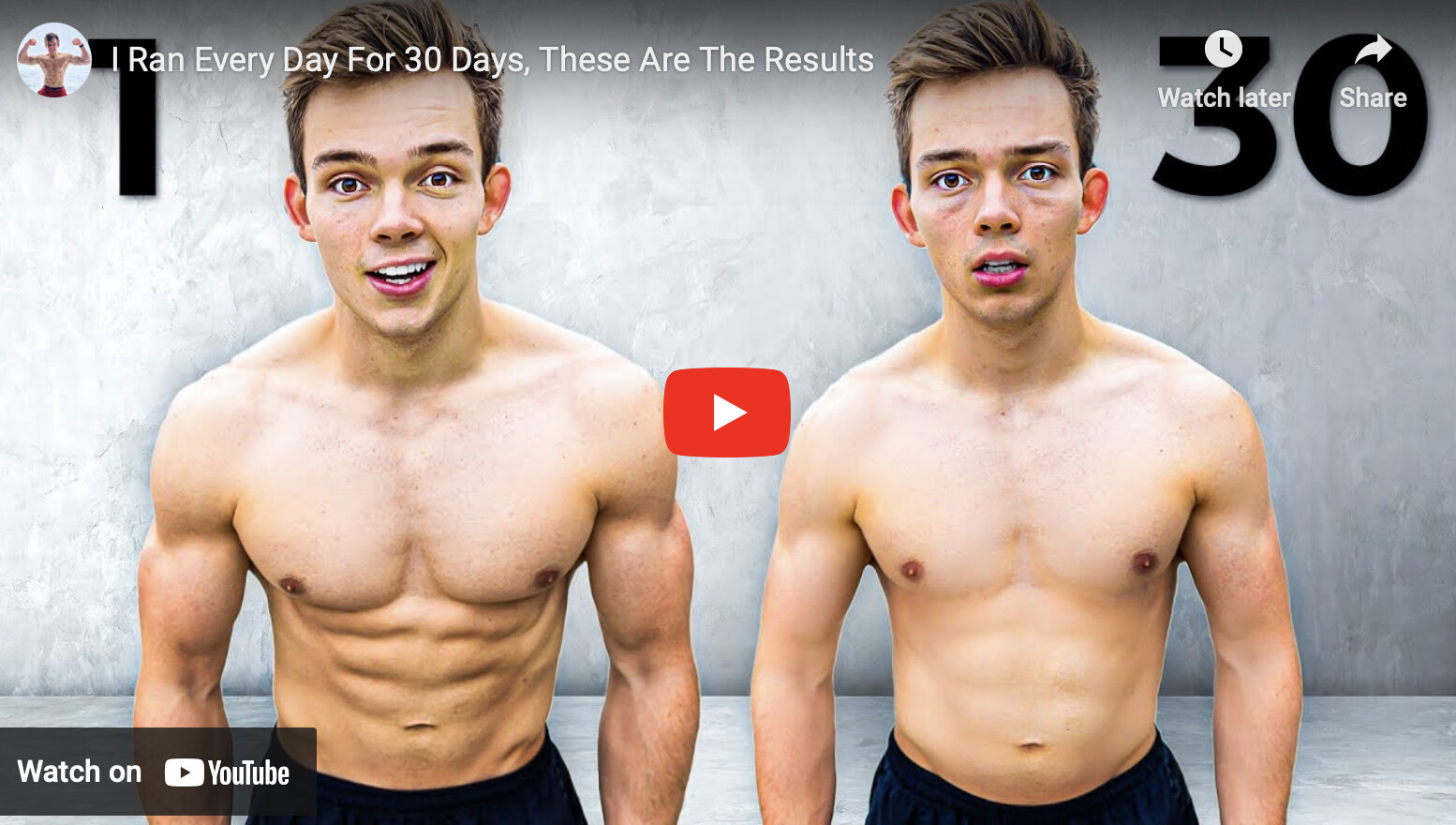
"I hope I learn a lot about running, and I hope my form improves, but also my time," he says, and he ropes in his brother Jorg and "crazy fit" friend Arjen to join him.
On day one, Stan completes his first mile in 5:27. Jorg takes 7:12, while Arjen manages it in just 4:58. However, contrary to their belief that their performance will naturally improve with practice, by the time they get to day 15 the three guys actually all have worse times than when they started, possibly due to the cumulative fatigue of running every day. Even though it is a relatively short distance, they're not allowing their bodies sufficient rest or recovery time.
On day 30, all three have improved on their original times: Jorg can now run a 6:23 mile, Stan's new time is 5 minutes exactly, and Arjen hits a new PR of 4:53.
At the start of the challenge, Stan weighed 174.6 pounds, Jorg weighed 202.4 pounds, and Arjen weighed 162 pounds. After a month of running every single day, Jorg has lost 4 pounds and is now 198.4, while Stan has maintained his weight, and Arjen has actually gained a pound in the form of muscle. "That's interesting, because I thought the running would make you lose gains," he says.
(01/01/2023) Views: 1,089 ⚡AMPby Men’s Health
Tips for Running Alone
When running by yourself, it’s important to take safety precautions and to also have plenty of strategies for beating boredom. Here are some safety and motivation tips for running alone.
How to Stay Safe During Solo Runs
Common sense is key when running solo. Follow these essential tips to stay safe.
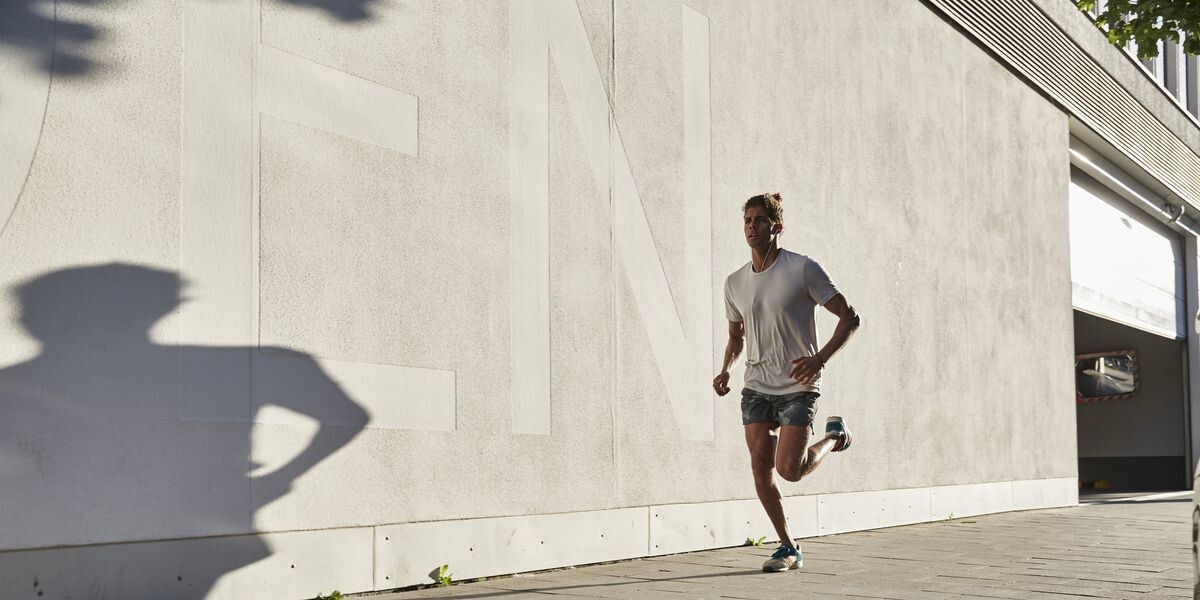
Let someone know where you’re running
Before you head out for your run, make sure you let someone else know where you’re running. Also tell them approximately how long you’ll be running for. If you’re not back when expected, they’ll know where to look for you.

Carry identification
Put your driver’s license and your medical insurance card (in case you get injured) in your pocket or wear an ID tag on your shoe. If you’re wearing an ID tag or bracelet, make sure it has an emergency contact number on it. Whenever possible, try to run with your cell phone, and save your ICE (In Case of Emergency) numbers.
Be visible
It’s best to run during daylight hours but, if you have to run in low-light conditions, make sure you’re visible. Wear white, yellow, or orange clothes if you’re running in the early morning or at night, even at dusk or in rainy weather.
Also, make sure you have reflective gear on. Although some items (running shoes, jackets) already have reflective pieces on them, it doesn’t hurt to add more.
Stick to familiar, populated routes
Running alone is not the time to try out a new, unfamiliar running route or an isolated trail. Stick to running routes in your neighborhood or local park that you know very well, so you don’t have to worry about getting lost or risk putting yourself in an unsafe situation. If you run in a park, run during peak exercise hours, so you know they’ll be lots of people around.
Limit your distractions
It can be tough to run without music, but cutting off your awareness and sense of hearing means you can’t hear oncoming cars, cyclists yelling to move, dogs, or other threats. If you really can’t run without music or something else to listen to, keep the volume low and one earbud out.
Be aware
Pay attention to your surroundings and what’s around you so you know where to go if you did need help. If you let your mind wander too much, you may find yourself running into an unsafe area.
How to Stay Motivated When Running Alone
Getting motivated to start and keep running can be harder when running by yourself. Here some ways to shake up your running routine and keep going.
Try some self-talk
If you’re running alone and struggling, give yourself a pep talk. Tell yourself that you’re not physically tired — you’re just mentally fatigued and you can push through it. Say to yourself things like, “I’ll have some water in five minutes — that will make me feel better.” You may want to keep repeating a running mantra, like, “Think strong! Be strong!”
If you’re doing your longest run ever, remind yourself how proud you’ll feel when you’re finished.
Use mental strategies and mind games
Arm yourself with different mental tricks and games to keep your mind occupied and help you stay motivated to continue running. Here’s a game to try: Pick out a specific article of clothing, such as black running shorts, to look for during your run. Then count how many runners you see wearing that piece of clothing.
Mix it up with a random interval workout
Try doing a fun interval workout. Pick a landmark in the distance, such as a tree or a stop sign, and pick up the pace until you get to it. After you recover at an easy pace for a minute or two, choose another landmark and then speed up again.
(12/31/2022) Views: 773 ⚡AMPby Christine Luff
Meniscus Tear? How To Get Back Out There
Strenuous exercise can tear the meniscus, a layer of cartilage in the knee — and certain gentle exercises may help with recovery.
Meniscus tears are fairly common; research suggests that around 61 in 100,000 Trusted Source people in the United States have this health issue.
Below, we look into this injury and describe nine exercises that may help strengthen and rebuild a torn meniscus. Be sure to consult a doctor before trying them.
What is a meniscus tear?
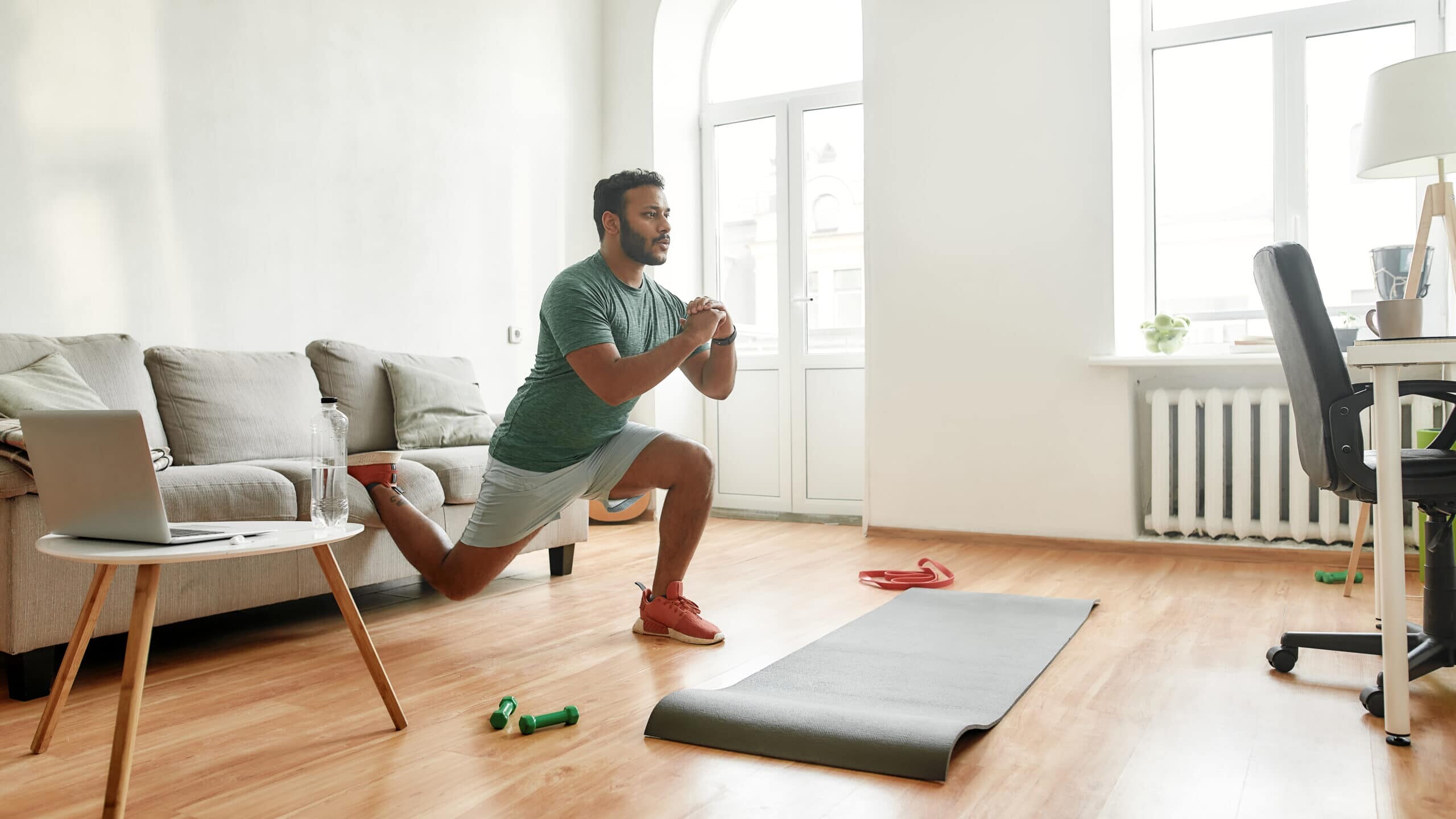
The meniscus is a layer of cartilage in the knee that has several important functionsTrusted Source. It helps:
the knee joint fit together correctly
absorb shock from walking and other activities
provide stability to the knee
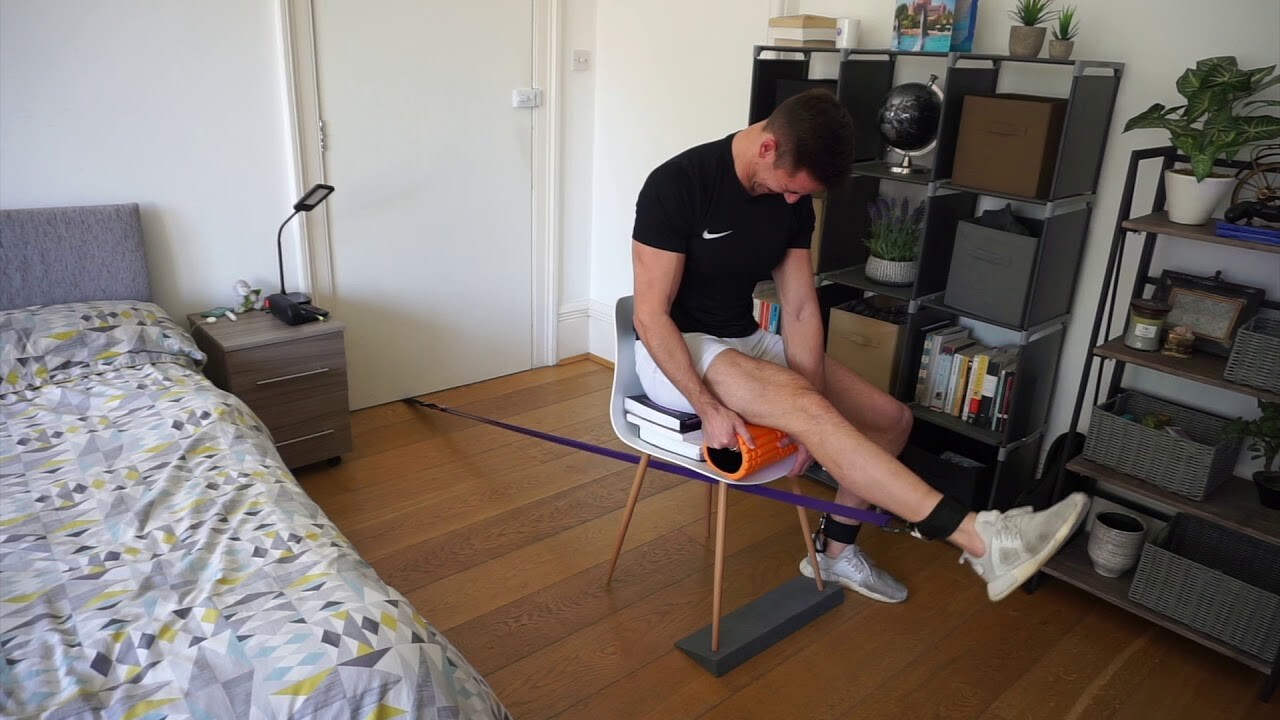
A tear can occur due to too much strain, sometimes as a result of exercise. Common symptoms include:
pain
swelling
clicking
catching
locking
weakness
This injury is more common among military personnel on active duty and other people who are very active. The risk is generally higher among males over 40 years old.
Recovery times
Less severe meniscus tears can take 4–8 weeks to heal. Others may require surgery and take as long as 6 months.
8 exercises to try
For people with less severe tears, doctors may recommend gentle exercises.
It is normal for these exercises to cause a little discomfort. If any exercise causes pain, however, stop doing it.
1. Mini squats
Mini squats can help strengthen the quadriceps, large muscles at the front of the thigh, without putting too much pressure on the knees.
To perform mini squats:
Stand with the back, shoulders, and head against a wall.
The feet should be shoulder-width apart and about 1 foot away from the wall.
Slightly bend the knees, bringing the buttocks toward the ground.
At around 15 degrees of the bend, stop.
Hold the position for 10 seconds, then slowly bring the body back up to the starting position, keeping the back and shoulders against the wall.
Perform 2 sets of 8–10 repetitions. Rest for between 30 seconds and 1 minute between the sets.
Keeping the back and shoulders against the wall is key, as it reduces stress on the knees.
2. Quadriceps setting
This is isometric, meaning that it exercises the muscles by keeping the body in a static position.
To perform the quadriceps setting:
Sit or lie flat on the ground, with the legs extended away from the body.
Contract the quadriceps, using them to push the backs of the knees toward the floor.
Hold this position for 10–20 seconds.
Perform 2 sets of 10 contractions, resting for between 30 seconds to 1 minute between sets.
3. Straight leg raise
This exercise stretches the hamstrings and strengthens the quadriceps.
To perform straight leg raises:
Lie on the floor with the left foot flat and the right leg extended.
Keeping the back and pelvis in a neutral position, flex the right foot and tighten the right thigh muscles, slowly lifting the right leg off the floor.
After lifting the right leg to around 45 degrees, slowly lower it back to the floor.
Perform 2 sets of 10 repetitions before switching to the left leg.
4. Prone hang
This exercise works to increase the knee’s range of motion.
To perform the prone hang:
Lie facedown on a bed, with the legs extended over the edge.
Let gravity slowly pull the left knee down until it is fully extended.
Hold this position for 15–30 seconds, before bringing the left knee back up.
Repeat this three times, then do the same for the right knee.
5. Hamstring curls
This exercise strengthens the hamstrings, which are muscles at the backs of the thighs.
To perform hamstring curls:
Lie on the stomach, keeping the legs straight.
Slowly bend the right knee, lifting the right foot toward the buttocks.
Slowly lower the right foot.
Perform 2 sets of 8–10 repetitions, resting for around 30 seconds.
Repeat this with left leg.
6. Hamstring heel digs
This is another hamstring exercise, and it can help build strength in the abdominal muscles.
To perform hamstring heel digs:
Lie on the back, with the knees bent and the feet flat on the floor.
Flex the feet so that only the heels touch the floor.
Dig the heels into the ground, slowly sliding them about 5 inches from the body.
Slide the heels back, returning to the starting position.
Perform 2 sets of 8–10 repetitions, resting for between 30 seconds to 1 minute between sets.
7. Standing heel raises
This exercise is good for building strength in the calf muscles.
To perform standing heel raises:
Stand with the feet hip-width apart, with the hands resting on a heavy, solid piece of furniture for support.
Slowly lift the heels off the floor as far as is comfortable.
Pause in this position, then slowly lower the heels to the floor.
Perform 3 sets of 8–10 repetitions, resting for 30 seconds to 1 minute between sets.
8. Leg extensions
Leg extension exercises build strength in the thighs. A person can safely perform them multiple times a day.
To perform leg extensions:
Sit on a chair or bench with the feet flat on the floor.
Flex the right foot then lift it, straightening the right leg.
Slowly lower the right foot to the starting position.
Repeat this 10 times, then do the same with the left leg.
When to contact a doctor
Anyone with symptoms of a torn meniscus should seek the advice of a doctor, especially if the symptoms do not improve.
Only begin gentle exercises, such as those above, after consulting a doctor to make sure that it is safe.
(12/31/2022) Views: 738 ⚡AMPby Medical News Today
What You Need to Know About Running and Hearing Loss
How to handle—and prevent—this increasingly prevalent quality-of-life condition.
Last winter, I was one of eight people on a Sunday long run. We spent most of the run in four groups of two. When I got home and my wife asked about the run, I said I’d spent most of it beside Erin, an ob-gyn who loves to discuss books. My wife asked about Erin’s recent work and reading list. I said I didn’t really know, even though we’d just spent more than an hour talking with each other. That is, unfortunately, the norm for me on group runs. I have a form of severe hearing loss One manifestation is that it’s extraordinarily difficult for me to follow a conversation when there’s competing background noise. That includes restaurants and movies with music atop dialogue. But it also means something like that group long run, where Erin and I were sandwiched by lively conversations ahead of and behind us.
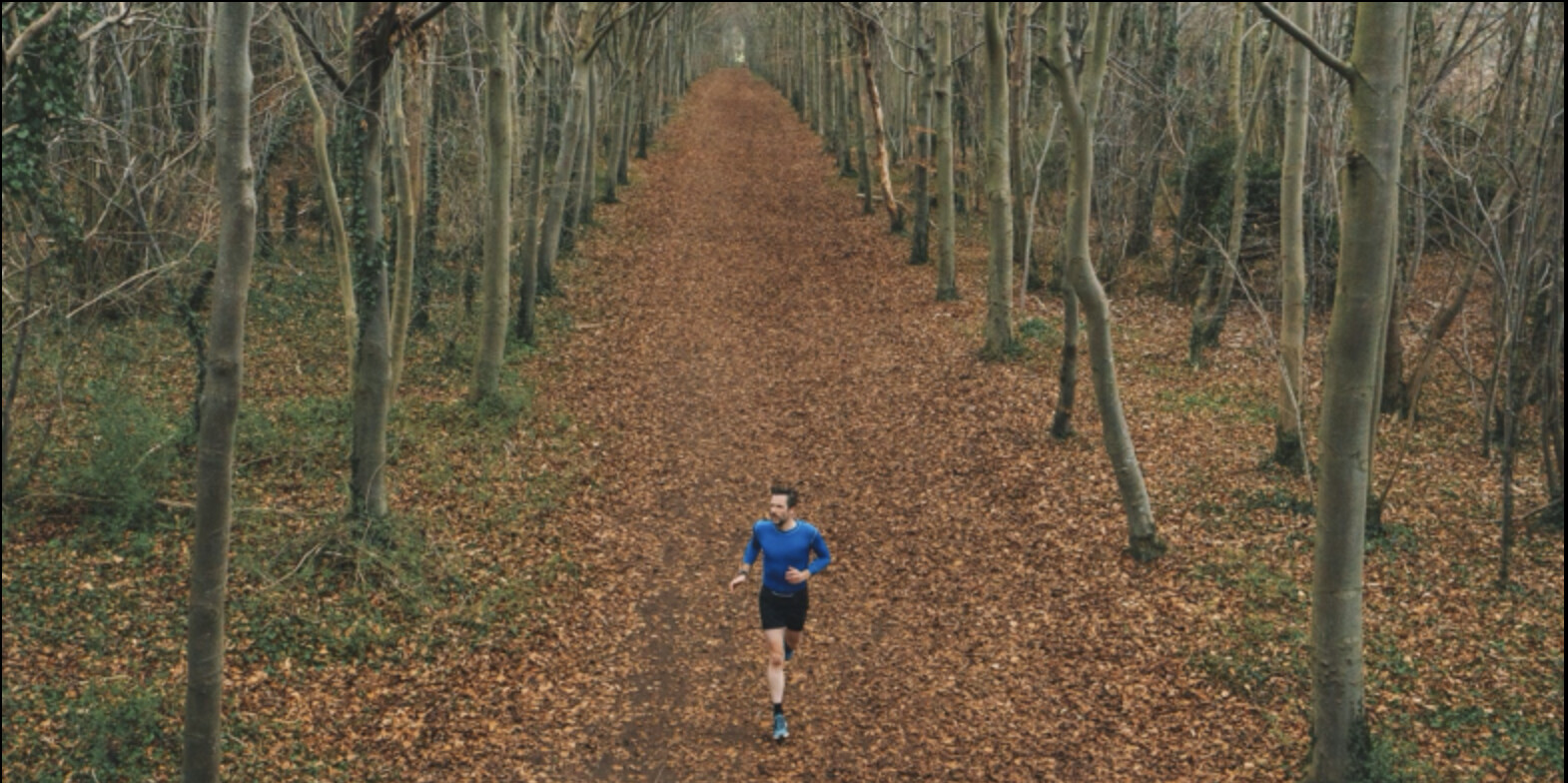
Hearing loss intrudes on nearly every aspect of my life. Some consequences are trivial (not hearing beeps from my running watch), some are moderately annoying (always seeking the quietest parts of public spaces), and some are depressing (regularly missing sounds and experiences that bring joy to others). There’s also the knowledge that my hearing is likely to continue to deteriorate, which puts me at risk for other conditions that could further erode my quality of life.
As the world gets increasingly louder, hearing loss is a growing problem. Here’s what it’s like to be a runner with hearing loss, what can be done about it, and, probably most importantly, how to lower your risk of winding up like me.
Running and Hearing Loss
Running’s health benefits are extensive and, in some cases, unexpected: Did you know that runners tend to have fewer cataracts and are less likely to develop glaucoma? Unfortunately, there’s no evidence that regular running helps lessen your chances of developing hearing loss. Indeed, as we’ll see, one key aspect of many runners’ routines can elevate their risk.
The most common type of hearing loss is sensorineural, in which there’s permanent damage to the inner ear or the nerve that connects the ear to the brain. Noise exposure and age are the two leading causes of sensorineural hearing loss. Between the din of much modern life and an aging population, it’s not surprising that 15 percent of Americans 18 and older report trouble hearing.
It’s also not surprising this is no longer just an older-person issue. “We’re seeing more kids high-school age with noise-induced hearing loss than in previous generations because it’s so prevalent to have things in your ears,” says Carissa McCauley, a runner and doctor of audiology at Rutland Regional Medical Center in Vermont. Research published last fall estimated that more than 1 billion people aged 12 to 34 are at risk of developing noise-induced hearing loss.
Hearing loss is inconvenient, for those with the condition and the people they try to communicate with, and, in some environments, unsafe. Untreated hearing loss increases your risk of cognitive and functional decline, social isolation, and depression, especially in middle age and beyond, according to Sarah Hill, a runner and audiologist who works for a hearing-aid manufacturer in Boston. McCauley adds that untreated hearing loss will likely get worse faster.
One tricky aspect of hearing loss is that it’s insidious. Without regular testing, you’re left with subjective experiences of poor communication: the restaurant’s music was cranked, it’s loud inside a car on the highway, your partner likes to conduct conversations from two rooms away. It’s easy to convince yourself the mishearing was a one-off rather than part of an increasing pattern. This is a different form of coming to grips than, say, realizing words on a page or screen are blurry enough that you need glasses.
The cause and progression of my hearing loss are fairly typical. As I teen, I played drums while wearing maxed-out headphones several hours a week. In my 20s and 30s, I saw hundreds of indie rock shows in bedroom-sized clubs. I often had tinnitus for a day or two after these exposures. (Tinnitus is usually defined as high-pitched ringing in the ears, which is an adequate description of mine, but it can present in many ways.) The tinnitus became permanent around 15 years ago. Then I had increasing difficulty following nearby conversations in loud environments. Also, being in such environments started to cause days-long spikes in the severity of my tinnitus. Finally, I found myself straining to understand my wife from even a few feet away in our quiet house.
Now, in my late 50s, I have profound loss at higher frequencies. This means not only that I miss out on things like bird songs and running watch beeps. I also struggle to distinguish certain higher-pitch consonants, such as “s,” “f,” and “h,” especially at the beginning of words. These problems compound when there’s a lot of background noise. It’s not that I can’t hear what others are saying as much as that I can’t quickly make out what’s being said. I guess at some words to see if they make sense in context. But by then people are on to the next sentence, and I’m still processing the previous one while trying to catch the gist of the current one and seeing if it’s reasonably linked to what I think the previous one was. It’s frustrating and exhausting. Sooner or later, I check out.
On runs, I often interject “uh huh” and “right” and “hmm” more in reaction to the tone of what others are saying than the content. If there’s reason to run single file, I scoot to the front to have any chance of following the conversation. If we’re running two abreast, I try to stay farther from traffic to lessen competing sound. If it’s just two or three of us, running with others can be my best hearing experience of the day. Rhythmic breathing tends to introduce pauses in conversation, giving me a better chance to process what’s being said. Large group runs are another matter. I’ve skipped many simply because I don’t feel like having to concentrate so hard just to follow along.
Are you on the road to hearing loss? McCauley and Hill agree that tinnitus is a major warning sign that you’ve been overexposed to noise. “That ringing is noise-induced damage, whether it goes away quickly or two days later,” Hill says. McCauley says that if you experience tinnitus after a given environment, “next time you need to wear hearing protection or avoid it if you can.”
Another warning sign is what’s known as a temporary threshold shift. “That means your hearing sensitivity has declined,” McCauley says. “Everything seems temporarily muffled. That’s another blaring red flag that you were doing something damaging and probably need to stop doing that.”
Constant tinnitus merits getting a hearing test from a licensed audiologist. “Most folks who have tinnitus have some degree of tinnitus,” Hill says. Other signs that you’re a good candidate for a hearing test include:
You frequently ask people to repeat themselves. (Or the people you talk with the most say you keep asking them to repeat themselves.)
You struggle to follow conversations when there’s background noise, such as other conversations, music, an air conditioner, or a television.
You have a harder time understanding children and women, who tend to have higher-pitched voices. Losing the ability to distinguish higher-frequency sounds is often where hearing loss starts.
You turn up the television volume but still can’t understand everything.
You feel like you hear better in one ear than the other.
You have issues with balance or dizziness.
Runners’ Risks of Hearing Loss
In a 2016 Runner’s World survey, 61 percent of respondents said they listen to music or other audio while running. That’s great, given the research showing the performance benefits of running with music. But that can also be problematic if you pump up the volume too much.
“If you have any ringing in your ears after running with music, it’s absolutely too loud,” Hill says. “Also, if you notice that, outside of being tired from running, you’re mentally fatigued in conversations or having trouble paying attention to somebody, it’s probably too loud. Those are signs that your brain is a little overstimulated.”
These recommendations, which are valid at all times, deserve a running tweak: Research presented at a 2014 conference on noise and public health looked at temporary threshold shifts after people listened to music while not exercising, exercised while not listening to music, and listened to music while exercising. The threshold shifts were significantly greater after listening to music while exercising, and included losses at high frequencies. The researchers speculate that decreased blood flow to the cochlea (part of the inner ear with a key role in hearing) during exercise can compound the problems associated with noise alone.
“My thought is, it should be a little lower than you want it to be,” McCauley says about the proper volume for on-the-run audio. “I tell my active patients to put the volume where you want it, and then turn it down at least a click.” This lower setting comes with a safety bonus of greater awareness of what’s going on around you.
Hill offers another solution: bone conduction headphones, which are worn outside your ears and transmit sound while avoiding potential damage to your inner ear. “It’s really hard to make those too loud,” she says. “They kind of max out naturally, so there’s much less of a risk of overexposure to noise.” Hill also appreciates how bone conduction headphones give her greater environmental awareness in busy Boston.
Hearing Aids for Runners
I haven’t been completely forthright so far in this article. The examples of struggling to hear are accurate—if I’m not wearing my hearing aids.
I had my first hearing test in 2007, after two intercontinental flights in three days made my tinnitus constant and more pronounced. The audiologist told me I had mild hearing loss at high frequencies and that it was likely I’d need to learn how to live with the tinnitus. I then waited 10 years for a follow-up. That visit resulted in a prescription for hearing aids.
This part of my story is also typical. Hill says that, when she was in private practice, everyone she recommended hearing aids for should have gotten them earlier, usually by a factor of several years. It’s estimated that at least 28 million Americans who could benefit from hearing aids don’t have them.
So why, as someone with hearing aids, did I struggle to hear my friend Erin during that large group run? Because I wasn’t in the habit of running with them at that point. The audiologist who fitted me with my first pair cautioned against getting them wet. When I told her I’m a ridiculously prolific sweater, she recommended not running with them. Over time, I wore them less and less in everyday life, because the inner ear portion made me feel like I was constantly being tickled by a Q-Tip.
This summer, I learned that, as with running shoes, a lot has changed with hearing aids in recent years. Water resistance is now a common feature. Smaller domes over the inner ear portion eliminate the tickling sensation. I’ve worn my new hearing aids on hours-long hikes and forgotten I had them in until I realized I was catching everything my wife said.
Most importantly, sound quality has improved dramatically. There was a metallic clang to what much of what I heard through my previous hearing aids. (Imagine water dripping on a taut piece of aluminum foil.) Now, I hear what I assume most people hear. Conversations are crisp. Music sounds full rather than compressed. I can sit on the patio and actually hear the birds and crickets that I know are just yards away. Restaurants are still annoyingly loud, but I can understand the people I’m with.
The hearing aids I have, the Phonak Audeo Fit, are also noteworthy in how they reflect two demographic trends—people are getting hearing aids at younger ages, and people are staying active later in life. The Audeo Fit tracks heart rate, daily steps, and time spent in different exercise-intensity zones.
Like most modern hearing aids, the Audeo Fit can connect to phones, televisions, and other gadgets, and it has Bluetooth connectivity. The latter is great, if that’s your thing. But I mostly value them for the human connectivity. Erin, the next time we run together, I promise I’ll really listen.
(12/31/2022) Views: 1,006 ⚡AMPby Runner’s World
Track star gets Google Doodle on her 118th birthday
Fanny “Bobbie” Rosenfeld of Barrie, Ont., was one of the Canadian stars of our nation’s most successful Olympics, in Amsterdam in 1928. That year, Canada won three gold, two silver and two bronze medals: Rosenfeld helped the squad win gold in the 4x100m relay, and also took silver in the 100m. Today would have been her 118th birthday, and to mark the occasion, Google Canada has honoured Rosenfeld with a Google Doodle–the daily illustration on Google’s main page, with a link to their story.
Rosenfeld, nicknamed “Bobbie” because of her short, bobbed hairstyle, was a well-rounded athlete, excelling also in hockey, softball, basketball, tennis and lacrosse. She was born in Russia in 1904, and died in Toronto in 1969, at age 65. At 18, her family moved from Barrie to Toronto, where she attended Harbord Collegiate Institute. When her competitive career was over, she became a sportswriter for the Globe and Mail and an advocate for women’s sports.
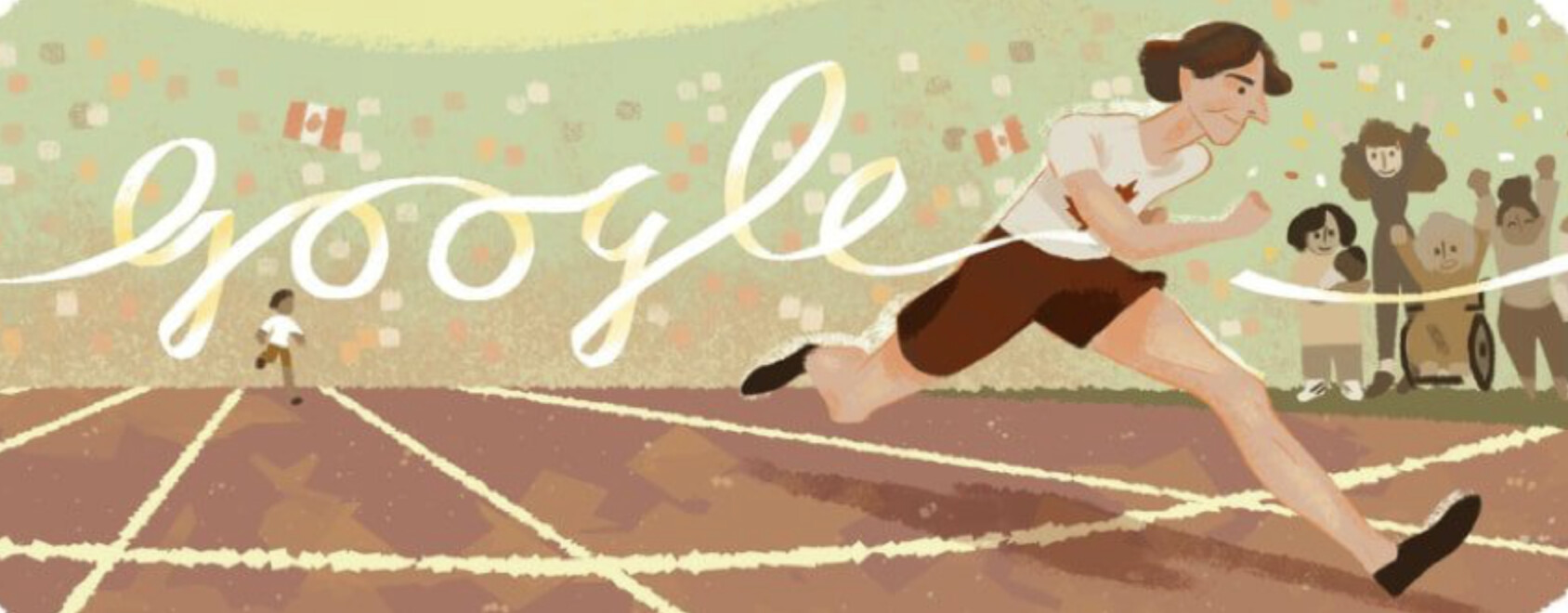
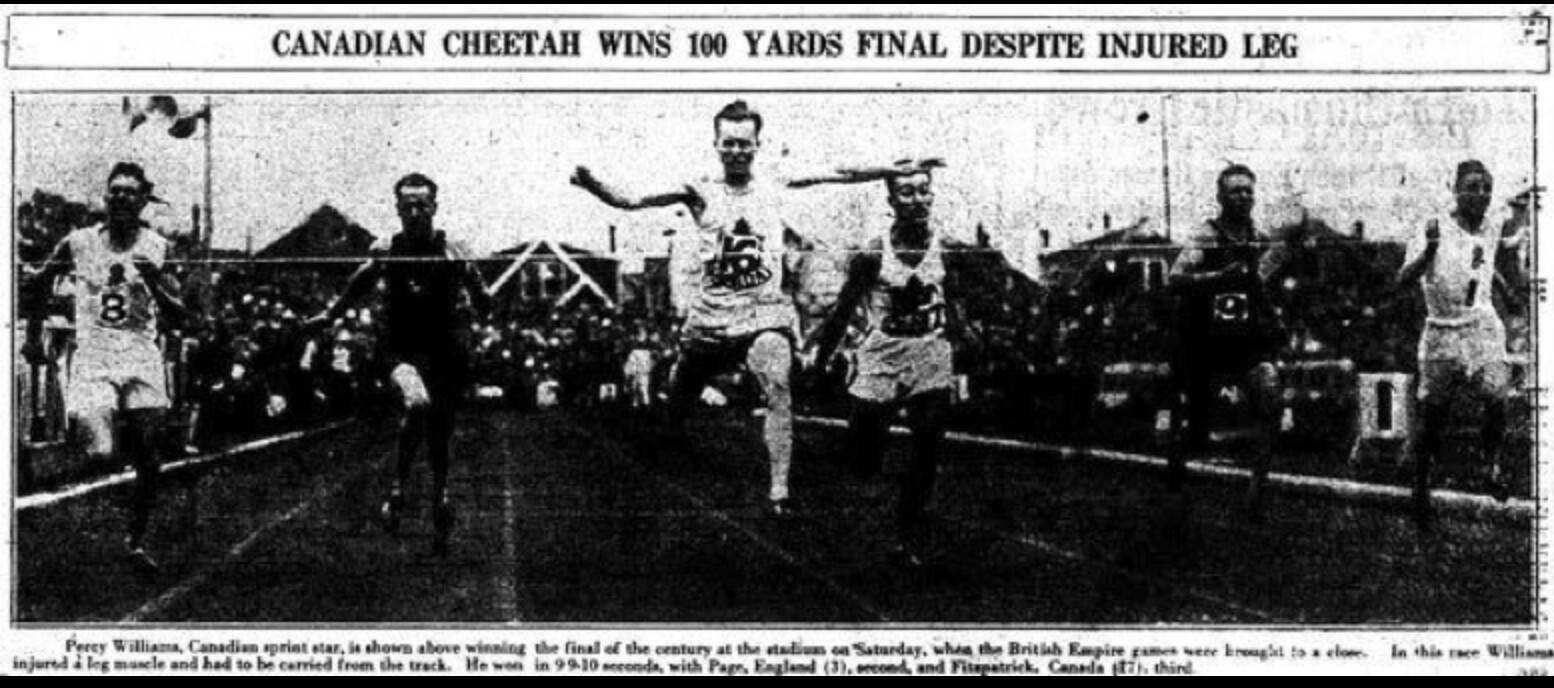
1928 was the first year that women were allowed to run in Olympic track and field events, and the Canadian women took more medals than any other nation. Rosenfeld’s teammates in the relay were Smith, Jane Bell and Myrtle Cook. In addition to Rosenfeld and the women’s relay team, these Canadians earned medals: Percy Williams (gold in the 100m and 200m), James Ball (silver, 400m), Ethel Smith (bronze, 100m) and the men’s 4x400m relay (bronze for Ball, Phil Edwards, Stanley Glover and Alexander Wilson). In addition, Ethel Catherwood of Regina won gold in the high jump, in a world record.
In his 2022 book Running Through Time: the Greatest Running Stories Ever Told, author Roger Robinson recounts the appalling story of the women’s 800m, which also included Rosenfeld (who finished fifth; the race was won by Germany’s Lina Radke in 2:16; Jean Thomson of Penetanguishene, Ont., was fourth).
The 800m is widely considered one of the most difficult track events. With two full laps of the track at top speed, the 800m is not a true sprint, but neither is it a pure middle-distance race, but something in between. Athletes must conserve just enough energy after the first lap and a half to sprint hard for the final 200m; if they miscalculate and surge too early, they risk being swallowed up by the pack and finishing dead last.
As new as it was for the women competing in Amsterdam, several collapsed at the finish line, having given it everything they had. But the spectacle of young women lying on the track after the very first Olympic 800m race was too much for spectators and officials, who, after the Games were done, successfully had the event banned from future Games. It didn’t return until 1960. Worst of all, Canada itself was one of the 12 nations that voted for the ban; in fact, Canada voted to ban women from all track and field events (but was outvoted).
In the book, Robinson says: “The stories of mass collapse and distress, amazingly consistent across many international news reports, were fake news, hugely exaggerated, often grossly inaccurate … None failed to finish. Four or five fell to the grass at the finish, yes, but they had just run massive personal bests; two were sprinters racing their first big 800.
“The litany of lies concealed the truth that the race was a great leap forward in women’s running. The first three broke the recent world record, and the first seven (yes, seven) ran faster than the officially ratified world mark at that date, including two Canadians. That race deserves a revised place in history, not as evidence of women’s weakness, but as a major breakthrough in elite athletic performance.”
(12/31/2022) Views: 714 ⚡AMPby Running Magazine
Ratified: world records for Yehualaw, Knighton, Nugent and Mokoka
Women’s world 10km record (mixed race)29:14 Yalemzerf Yehualaw (ETH) Castellon 27 February 2022
Men’s world U20 200m record19.69 Erriyon Knighton (USA) Eugene 26 June 2022
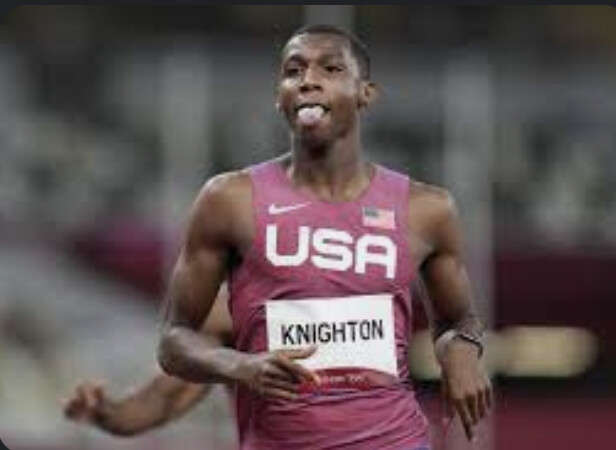
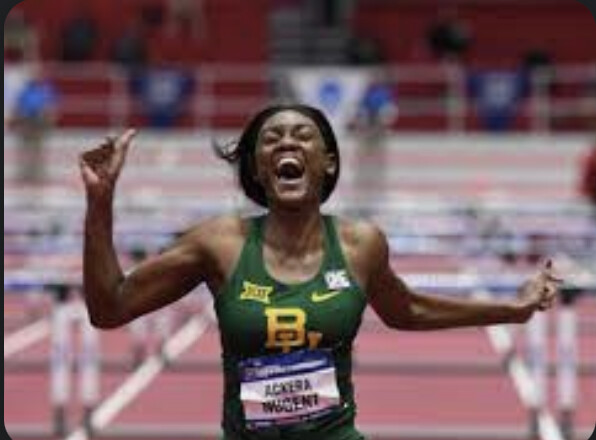
Women’s world U20 indoor 60m hurdles record7.92 Ackera Nugent (JAM) Fayetteville 13 March 2021
Men’s world 50km record2:40:13 Stephen Mokoka (RSA) Gqeberha 6 March 2022
The world 10km record of 29:14 set by Yalemzerf Yehualaw in Castellon on 27 February has been ratified.
The world U20 marks by Erriyon Knighton in the 200m and Ackera Nugent in the 60m hurdles are also now officially in the record books, as is the world 50km record set by Stephen Mokoka.
In Castellon, Yehualaw became the first woman in history to dip under the 29:30 and 29:20 barriers on the roads, running 29:14 to improve the ratified record of 29:43 set by Joyciline Jepkosgei in Prague on 9 September 2017 and the mark of 29:38 achieved on 3 October 2021 by Bahrain’s Kalkidan Gezahegne in Geneva.
In a race held under ideal weather conditions, and with pacing assistance from Dutch distance runner Richard Douma, Yehualaw set off at a swift pace. They covered the opening kilometre in 2:51 and by 3km, reached in 8:36, Yehualaw was on target for a sub-29-minute finish.She went through halfway in 14:28 – one of the fastest 5km clockings in history – and was still inside 29-minute pace. The Ethiopian slowed a bit during the second half, but a final kilometre of 2:52 (and a second half of 14:46) was enough to carry her to a 29:14 finish.
“I knew I had the world record in my legs and wanted to produce a challenging performance for any athletes who may attempt the record in the near future,” she said.
Knighton achieved his world U20 200m record at the US Championships on 26 June, running 19.69 to improve on his own previous ratified record of 19.84, also set at Hayward Field in Eugene on 27 June 2021. Knighton had opened his season with a time of 19.49 in Baton Rouge, but that mark could not be ratified as a world U20 record because specific anti-doping testing requirements were not met.
Nugent, meanwhile, achieved her world U20 indoor 60m hurdles record when winning at the NCAA Indoor Championships in Fayetteville on 13 March 2021. Other performances that were faster than the previous ratified world record of 8.00 set by Klaudia Siciarz in Torun on 18 February 2017 – including Nugent’s own 7.91 earlier in 2021 – did not fulfil all the criteria for ratification. Nugent’s 7.92 does meet the criteria, so becomes the world U20 record.
In March this year, Mokoka ran 2:40:13 at the Nedbank Runified 50km in Gqeberha to improve on the inaugural world 50km record of 2:42:07 that had been set by Ethiopia’s Ketema Negasa at the same event last year.
Mokoka is now the official world 50km record-holder, although CJ Albertson clocked 2:38:43 in San Francisco on 8 October, and that performance has also been submitted for record ratification.
(12/31/2022) Views: 941 ⚡AMPby World Athletics
Hundreds of runners collapse in wild start line video, Who could have seen this coming?
Start lines at a race can be intimidating, especially if, only 10 meters in, there is a big tree that you and hundreds of runners have to go around. In this bizarre race video from a 10K in Paris last week, hundreds of elite and sub-elite runners fell in perhaps the most chaotic start line we’ve seen this year.
The Corrida de Houilles is one of the most popular 10K road races in France, due to its fast course and deep field. The race has a strict entry standard of sub-44 minutes for women and sub-37 minutes for men, which attracts top domestic and international talent.
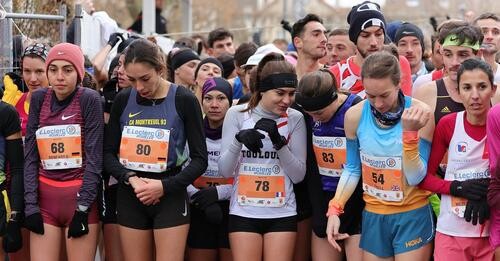
The giant tree a few metres from the start line isn’t the only obstacle runners have to avoid—street lamps and curbs make it almost impossible to avoid falling. Once one person goes down, there is a domino effect, as you see in the video.
The race had 63 men who finished under 30 minutes, with Ethiopia’s Halie Bekele taking the win in 27:29, one second ahead of Vincent Kibet of Kenya. Bekele was fourth in the men’s 5,000m at the 2019 World Championships in Doha. Jimmy Gressier of France finished third in a European-leading time of 27:43.
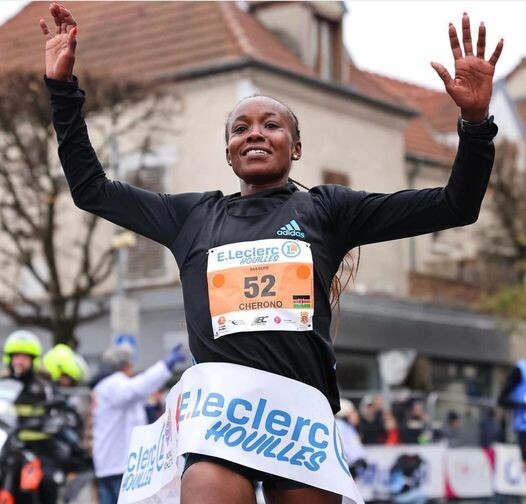
In the women’s race, Kenya’s Mercy Cherono won with a time of 30:55 seconds. Cherono won silver in the 5,000m at the 2013 World Championships in Moscow.
Welsh marathoner Josh Griffiths, who starred in the iconic airport half-marathon video, said the start was a disaster. Many other elites are calling on the organization committee to move the start line past the tree in 2023. “It was complete carnage,” one runner said.
Changing any part of the course would require the race organizers to obtain a new certification from World Athletics. The race is currently listed as an Elite Label race on the World Athletics calendar.
(12/30/2022) Views: 807 ⚡AMPby Marley Dickinson
Corrida de Houilles
It is one of the most prestigious races and undeniably one of the most beautiful 10 km road races in the world.Corrida international pedestrian Houilles combines festive atmosphere and high level sport. In 2013 the event receives the international label IAAF "and offers in the heart of town a popular 10 km and a 10 km" Elite "on 3 laps....
more...Andre De Grasse switches coaches, heading into 2024 Olympics
After a season of highs and lows, Canada’s reigning 200m Olympic champion, Andre De Grasse, has switched things up for 2023. The six-time Olympic medalist, along with his partner, 2016 Olympic medalist Nia Ali, has moved to Orlando, Fla., to work with Irish sprint coach John Coghlan, leaving his controversial coach Rana Reider, with whom he spent three seasons.
De Grasse says he wanted to stay in North America, and became interested in Coghlan’s coaching success through 100mH Olympic champion Jasmine Camacho-Quinn, who went on to win the 100 hurdles for Puerto Rico at the Tokyo Olympics, and his agent Paul Doyle.
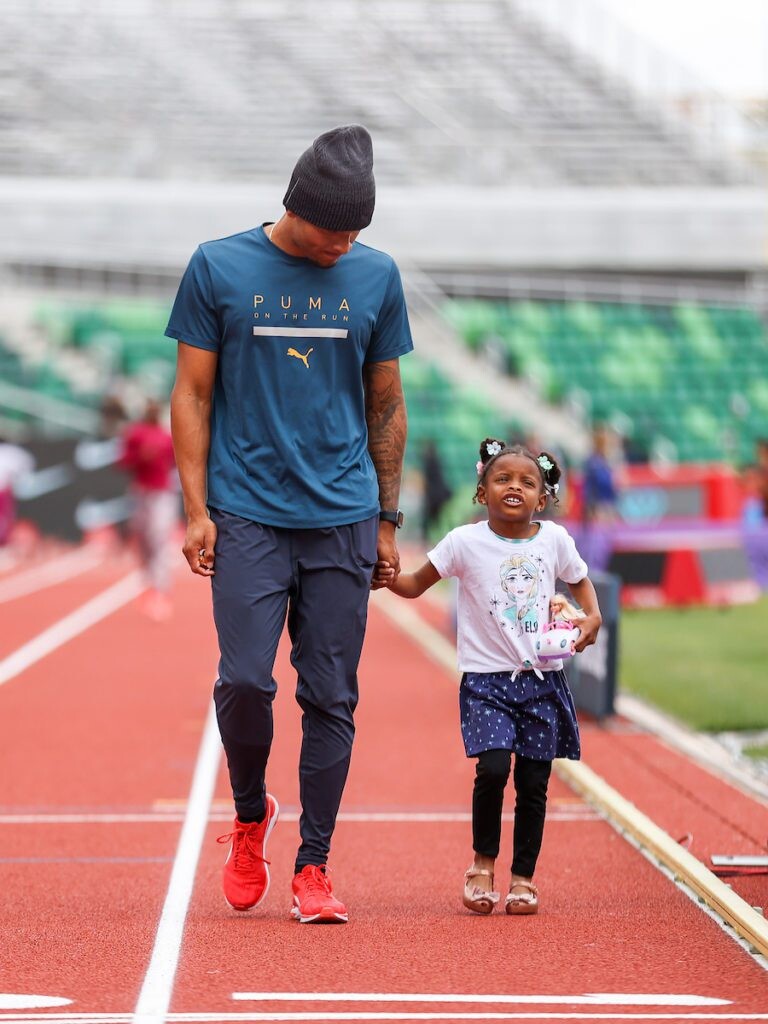
The Canadian 200m record holder told the CBC that his mindset and motivations have changed since the last Olympic cycle. “I’m getting older, so I was just trying to do something different this time around,” said De Grasse. “I believe having a smaller crew will benefit me.”
De Grasse’s partner, Ali, won gold in the women’s 100mH at the 2019 World Championships in Qatar and has her eyes on a Team U.S.A. spot for the 2024 Games.
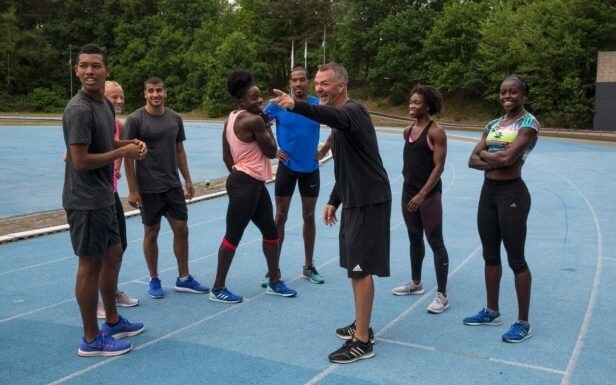
The 28-year-old told CBC the move was more about a fresh start heading into the 2024 Paris Olympics than controversy around his former coach and his Tumbleweed Track Club in Jacksonville, Fla. “I just wanted to try something different,” said De Grasse. “I liked the idea of Orlando, and we thought it would be a good spot for our kids as well.”
In 2022 Reider, who has guided numerous athletes to Olympic and world championship medals, was under investigation by U.S. Center for SafeSport for alleged sexual misconduct. Reider was also the coach of Nigerian sprinter Blessing Okagbare, who was suspended during the 2020 Olympic Games after a positive test for steroids; earlier this year, she was handed an 11-year suspension by the Athletics Integrity Unit (AIU) for multiple anti-doping offenses, on top of the original offense.
In November 2021, Athletics Canada withdrew its funding of Canadian athletes being coached by Reider, including De Grasse, due to the ongoing investigation.
At the 2022 World Championships in Eugene, Ore., where De Grasse helped Canada’s 4×100-meter relay team win gold, Reider was seen trying to enter the athlete warmup area after his coaching accreditation was revoked by World Athletics, due to his ongoing investigation, and he was removed from the premises.
The Olympic 200m champion struggled to find his fitness at the beginning of the 2022 season and was sidelined due to COVID-19 three weeks before the world championships, where he bowed out of the 100m in the semis and was listed as a DNS in the 200m heats.
With three major championships on the calendar over the next three years, De Grasse stressed that he wants to improve. “I felt like I wanted a little bit more attention to detail and stuff like that going into my next Olympics,” De Grasse told CBC.
(12/30/2022) Views: 670 ⚡AMPby Running Magazine
Paris 2024 Olympic Games
For this historic event, the City of Light is thinking big! Visitors will be able to watch events at top sporting venues in Paris and the Paris region, as well as at emblematic monuments in the capital visited by several millions of tourists each year. The promise of exceptional moments to experience in an exceptional setting! A great way to...
more...British man Gary McKee to make history for most marathons in one year
Some people’s New Year’s resolution is to quit drinking. For others, it’s to run a marathon. But for Gary McKee of Cleator Moor, in northwestern England, his resolution was to quit drinking and run a marathon–every single day for a year. McKee is two days away from completing his unbelievable challenge of running 365 consecutive marathons.
McKee, who has gained the nickname The Marathon Man, has covered more than 9,500 miles (15,289 kilometers) in 363 days while raising more than $2,000,000 for charity. His distance covered is equivalent to running across Canada three and half times. McKee’s challenge will come to an end on New Year’s Eve.
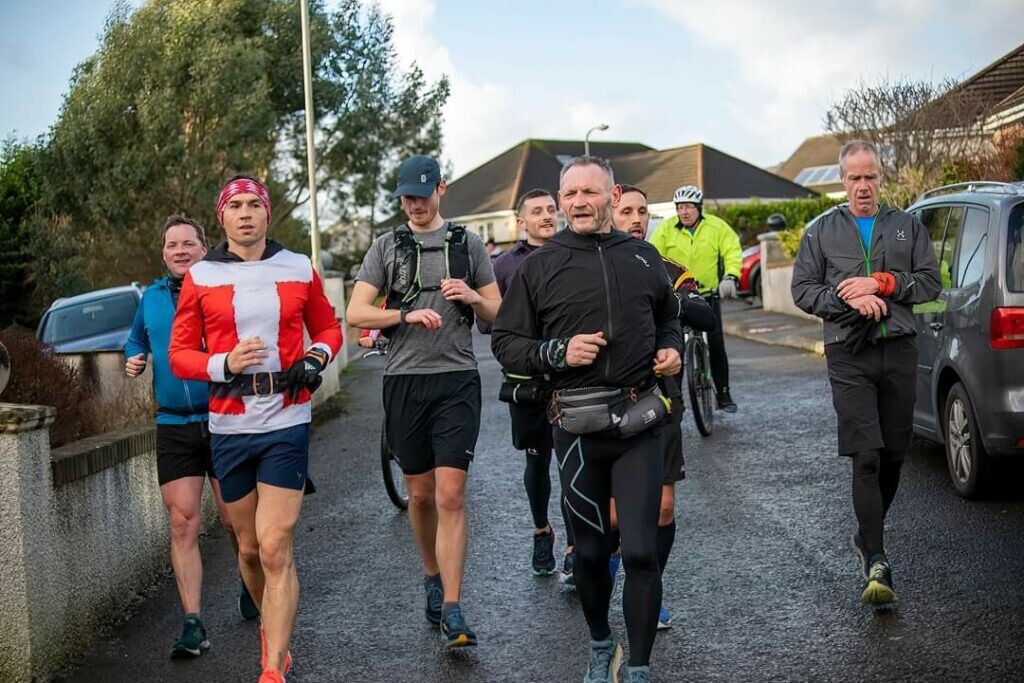
McKee, 53, told The Guardian, that he intends to have one celebratory beer to celebrate his efforts and year-long drought.
The father of three routinely wakes up at 5 a.m. and heads out on his marathon before starting his work shift at a nearby power plant at 2 p.m.
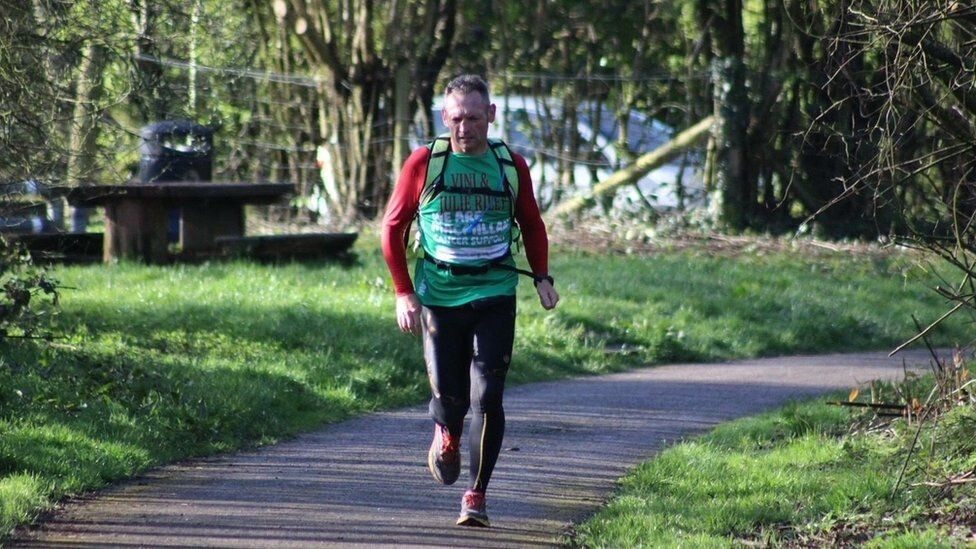
McKee has completed most of his marathons between three and a half and four hours. In 2021, McKee completed 110 marathons in a row.
McKee is running for Macmillan Cancer Support and Hospice in West Cumbria, which supported his father through a cancer diagnosis in 1997. His father fully recovered from cancer but died from an unrelated illness in 2005.
You can follow McKee’s 365 challenge on his Strava or Twitter page.
(12/30/2022) Views: 699 ⚡AMPby Marley Dickinson
Detroit Free Press Marathon introduces new anti-doping policy for 2023
On Dec. 29, one of the most popular U.S. destination races for Canadian marathoners, the Detroit Free Press Marathon, announced a new anti-doping policy to prevent substance abuse among participants to level the playing field. In October, the race received some slack online after Mary (Akor) Beasley won the marathon, seven years after she served a two-year doping ban under her previous name, Mary Akor.
Akor frequently runs marathons across North America that do not test podium finishers that offer a large amount of prize money. In October, she took home USD $6,000 as the top female finisher in Detriot. Although Akor came out and explained her positive test in a Detroit Free Press article, the race received comments on social media about testing podium finishers and not allowing elites who have previously received a doping sanction to compete.
The Detroit Free Press Marathon is implementing a new anti-doping policy as it opens registration for the 2023 marathon in October. “The change is made to establish structure and to prevent substance abuse among participants at our annual race,” said Aaron Velthoven, vice president of the marathon. “This new policy will help our organizers uphold the event’s key values.”
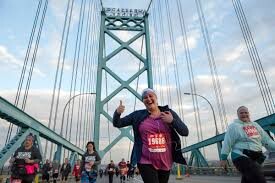
“This was a priority for us in our offseason—to ensure fairness and integrity at the top of our race,” Velthoven said to the Detroit Free Press.
Winners will have to meet several requirements to be eligible for the prize money under the new policy:
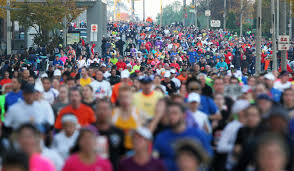
Not currently serving a suspension for use of a prohibited substance by the USADA or WADA (the U.S. Anti-Doping Agency and World Anti-Doping Agency).
Not have ever been suspended for use of a prohibited substance by the USADA or WADA.
Not be represented by a coach who has had two or more athletes that have received such suspensions in the previous four years (from the date of the current race) by USADA or WADA.
Consent to random drug testing according to the standards and procedures of USATF, USADA, and WADA.
All elite and open registrants will be asked to acknowledge and agree to the new policy during registration.
“We felt that there were too many questions for some previous prize winners with our large-scale race, and we needed a proper anti-doping policy in place to deter the wrong type of athlete from coming to our race,” said Velthoven. The new policy means Akor will not be welcome at the 2023 marathon.
Velthoven expects an increase in participants for the 2023 marathon as the event plans to ease the COVID-19 restrictions. The 46th annual Free Press Marathon will take place on Oct. 15, 2023.
(12/29/2022) Views: 697 ⚡AMPby Running Magazine
Detroit Free Press Marathon
Our marathon course offers international appeal, traversing both downtown Detroit and Windsor, Ontario, crossing the border at both the Ambassador Bridge and Detroit-Windsor Tunnel. You will run through historic neighborhoods, around beautiful Belle Isle, and along the spectacular RiverWalk. ...
more...World ultrarunning champion Camille Herron parts ways with Hoka
The women’s 100-mile world record holder, Camille Herron, announced on social media today that she is parting ways with her longtime sponsor, Hoka, and beginning a partnership with a major brand new to the ultra-trail community in 2023.
“The end of 2022 marks the end of my journey representing Hoka. Thank you for all the wonderful support,” Herron wrote on her Instagram. “My time with the brand has been some of the best years of my career, and it is a testament to the harmony and happiness I have felt while representing Hoka.”
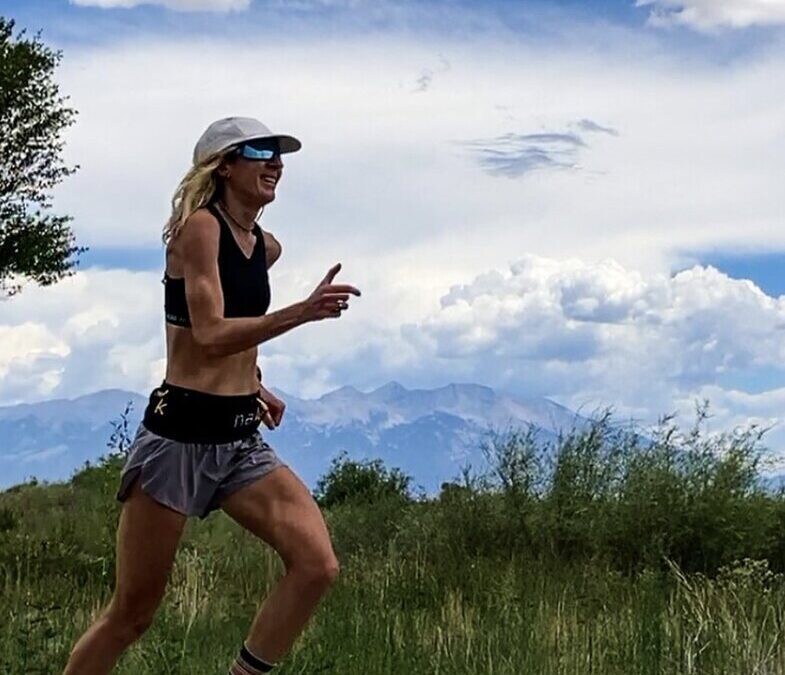
The 2022 season was eventful for the 41-year-old ultrarunner from Norman, Okla. She set 12-hour and 100-mile world records on the track and road and became the 117th runner and the youngest female ever to reach the 100,000 Lifetime Miles club.
She is also the first and only woman to run under 13 hours for 100 miles, exceed 150 km for 12 hours and reach 270 km over 24 hours.
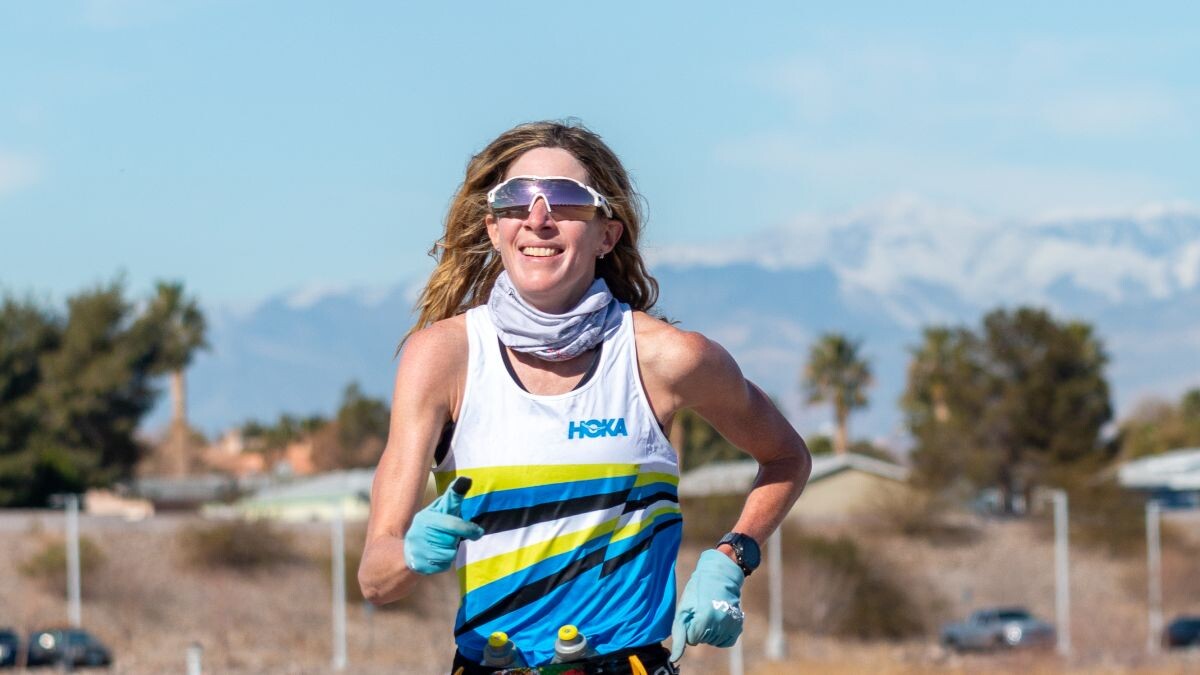
Herron plans to announce her new sponsor in mid-January, but she gave her fans a hint, stating that she was presented with a dream opportunity to partner with a major brand that will be new to the ultra-trail community. “Right now is the time for brands to get behind, support and elevate women in a significant way, and I am excited about all the possibilities to come from this new collaboration,” Herron wrote.
Many major running brands, such as Nike, New Balance and Adidas, have already dipped into the ultra-trail scene. Two running brands with strong records of empowering women in sport are Puma and Lululemon, neither of which has really dipped into the ultra-trail scene yet.
Herron said on her Instagram that the news will come in a few weeks.
(12/29/2022) Views: 869 ⚡AMPby Marley Dickinson
Christian Coleman, Noah Lyles and Ronnie Baker to Clash in Epic 60m at 2023 Millrose Games
The 115th Millrose Games, the world’s most historic indoor track & field event is only six weeks away. The Men’s 60m will surely be one of the most anticipated races of the entire meet, as Christian Coleman, Noah Lyles, and Ronnie Baker, three of the best sprinters in the world, will be taking their talents to the infield straightaway at the iconic New Balance Track & Field Center at The Armory.
The 115th Millrose Games is scheduled for Saturday, February 11th.
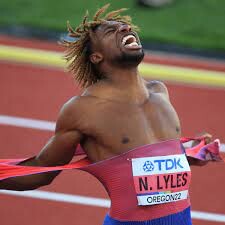
Coleman is the defending Millrose Games champion, World Record holder, and 2018 World Indoor Champion in the 60m. His lightning-quick starting ability makes him nearly unstoppable over this short distance, and he set the current world record of 6.34 seconds in 2018. Outdoors, he has two World Championship gold medals and three silver medals in the 100m and 4x100m relay.
Lyles is the reigning back-to-back World Champion, American Record holder, and the third-fastest man ever in the 200m. He also claimed the Olympic bronze medal in Tokyo. Lyles, the 2022 USATF Male Athlete of the Year, has been open about his pursuit of the world records held by Usain Bolt, and by dropping down in distance to challenge the short-sprint specialists, he hopes to continue improving his start and putting the pieces together for another year of dominance.
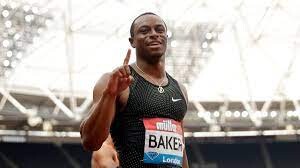
Baker is the third-fastest 60m runner in history, and one of the most consistent sprinters competing on the circuit. He is an Olympic finalist, World Indoor bronze medalist, and two-time NCAA champion. Baker is no stranger to the Millrose Games stage, winning the 60m in both 2018 and 2020.
Other athletes in the field include:
–Josephus Lyles, Noah’s younger brother. Lyles is a former World Junior Champion, and he placed fifth in the 200m final at this year’s USATF Outdoor Championships.
–Ackeem Blake of Jamaica, NACAC 100m Champion, and semifinalist at the World Championships.
–Miles Lewis, the 60m national record holder for Puerto Rico.
As always, the Millrose Games will feature the absolute best athletes in the sport, including dozens of Olympians and world champions. Some of the big names already announced include Alicia Monson, Konstanze Klosterhalfen, Abby Steiner, Jenna Prandini, Geordie Beamish, Cooper Teare, Josh Kerr, Katie Nageotte, Sandi Morris, Katerina Stefanidi, Ryan Crouser, and Joe Kovacs, with many more still to come.
The Millrose Games is a World Athletics Indoor Tour Gold meet. With the highest-level competition at the youth, high school, collegiate, club, and professional levels, there is truly something for everyone at the Millrose Games.
(12/29/2022) Views: 619 ⚡AMPby Letsrun
NYRR Millrose Games
The NYRR Millrose Games,which began in 1908 as a small event sponsored by a local track club, has grown to become the most prestigious indoor track and field event in the United States. The NYRR Millrose Games meet is held in Manhattan’s Washington Heights at the New Balance Track & Field Center at the Armony, which boasts a state-of-the-art six-lane,...
more...Chepkoech is set to compete at San Silvestre Vallecana 10k road race
World 3000m steeplechase record holder Beatrice Chepkoech will be lining up against a competitive field at the San Silvestre Vallecana, a New Year’s Eve 10 km road race in Madrid, Spain.
Chepkoech temporarily leaves the track to compete at the world's best 10K and victory will be another milestones in her many achievements. Besides her 2019 World Championships gold, she is also a nine-time Diamond League winner.
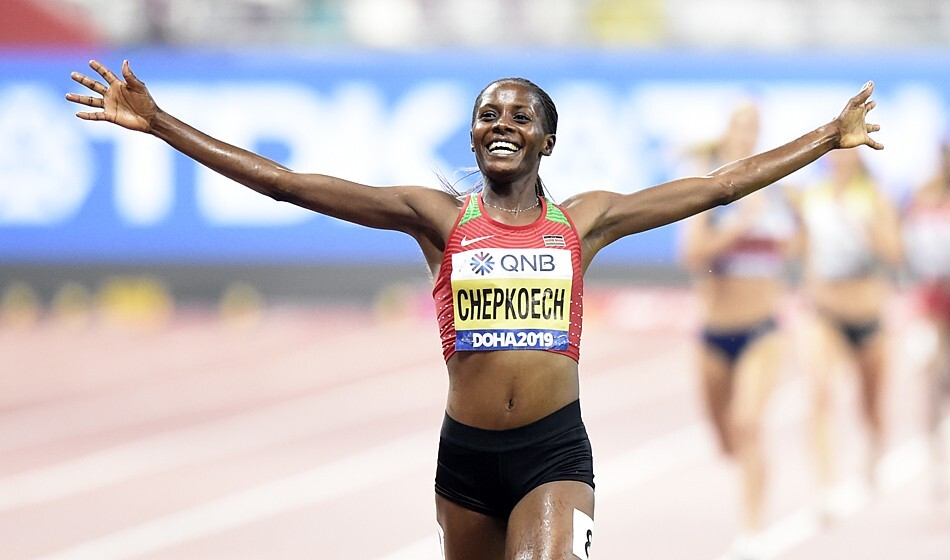
However, the iconic race has also attracted other elite athletes including Africa 10,000m champion Tsehay Gemechu from Ethiopia and Francine Niyonsaba, the 2016 and 2018 World 800m indoor champion.
Brigid Kosgei holds the women's course record with 29:54 from 2019. She set the milestone just a few months before achieving her unbelievable and still-standing world marathon record of 2:14:04.
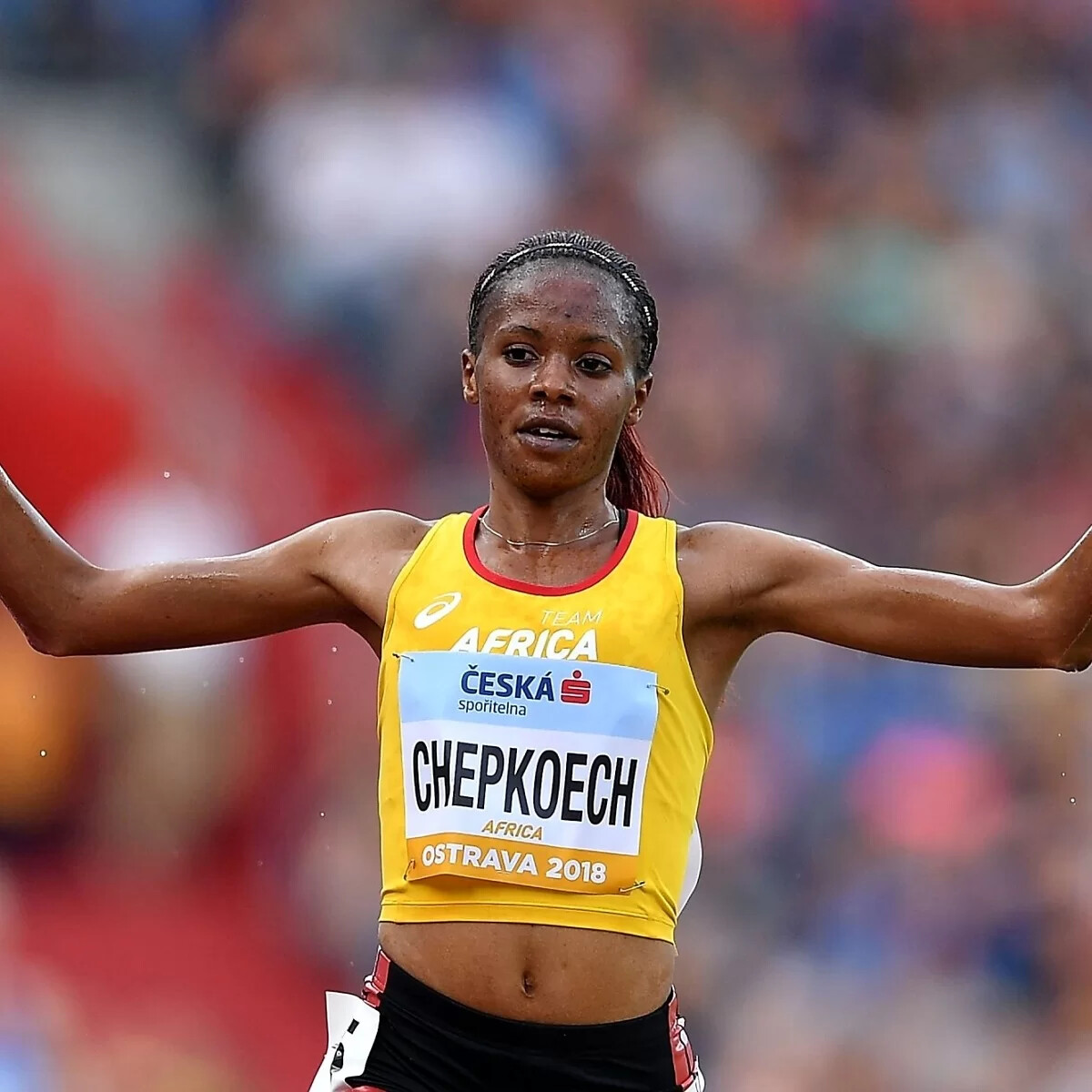
Gemechu comes to the race to extend the Ethiopian winning streak after Yalemzerf Yehualaw and Degitu Azimeraw won the previous two editions. She placed fourth in the 5,000m at the 2019 World Championships and finished sixth at the 2019 World Cross Country Championships.
Niyonsaba, who has been enjoying road race and cross-country success, will also be looking to shine in Madrid. Most recently, Niyonsaba won the Banos International Sales Cross Country. She holds a very fast 5, 000m personal best at 14:25.34 from last year.
The women's elite field will also have Prisca Chesang, the 19-year-old Olympian from Uganda who won the U20 world bronze medal at 5,000m this year, and Mahlet Mulugeta, the Ethiopian.
(12/29/2022) Views: 653 ⚡AMPby Abigael Wuafula
San Silvestre Vallecana
Every year on 31st December, since 1964, Madrid stages the most multitudinous athletics event in Spain.Sport and celebration come together in a 10-kilometre race in which fancy dress and artificial snow play a part. Keep an eye out for when registration opens because places run out fast! The event consists of two different competitions: a fun run (participants must be...
more...2023 Ooredoo Doha Marathon is set to take place in january
This year’s edition is set to attract thousands of runners from 80 countries.
Ooredoo Doha Marathon, which is widely regarded as one of the most popular events on Doha’s sporting calendar, is set to take place on 20 January, 2023.
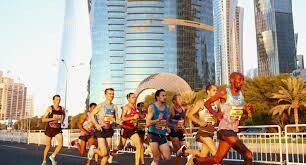
The 11th iteration of the competition, which is listed on the World Athletics calendar, is being put together in collaboration with the Qatar Athletic Federation and Ooredoo, a longstanding promoter of sporting events.
This year’s event is expected to draw thousands of runners from 80 countries or more, including some of the world’s top athletes.
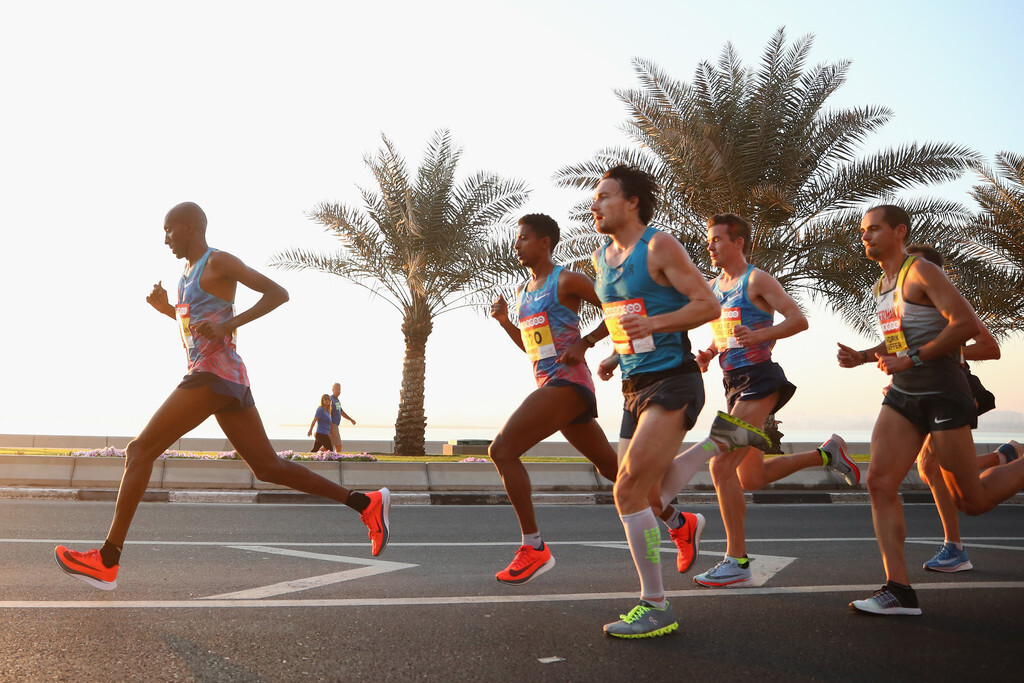
Confirmed so far are Mohcin Outalha from Morocco as well as Yohans Mekasha, Hiribo Shano and Abiyote Abinet from Ethiopia, along with Desi Jisa Mokonin from Bahrain and Ebsite Tilahun from Ethiopia in the women’s race.
The world class athletes will be joined by keen runners of all levels from Qatar’s sporting community, as well as families looking for an active day out.
The Ooredoo Doha Marathon 2023 features a variety of distances, ranging from a 1km children’s race to the full 42km marathon, as well as the Al-Adaam category for Qatari runners, which includes prizes for winning competitors.
The total prize money for all categories amounts to more than 500,000 QAR.
An upgraded route will take runners past some of Doha’s most famous landmarks while avoiding excessive laps.
Participants with disabilities will be able to run all distances up to and including 21.1km, with roads being closed for the duration of the event.
A dedicated race village in Al Bidda Park will provide plenty of activities for families.
A key upgrade for this year’s event will be integration with Nojoom, Ooredoo’s award-winning loyalty programme. Nojoom members can redeem Nojoom Points for entry to the event.
People with disabilities can register for free and runners who register as a group get a 20% discount.
The Marathon, which was first held in 2013 to encourage Qatari citizens and residents to embrace a healthy and active lifestyle, has become one of the most anticipated sporting events in Qatar, with over 18,000 runners taking part over the years.
The event draws large crowds of spectators who line the streets to cheer on the runners and enjoy the electric atmosphere and lively entertainment.
Participants can register for the Ooredoo Doha Marathon 2023 at https://www.ooredoo.qa/web/en/marathon/
(12/28/2022) Views: 891 ⚡AMPby Doha News Team
Ooredoo Doha Marathon
We started the Ooredoo Doha Marathon as a way to bring people together, encourage them to live healthier lifestyles and give back to the community. Funds raised by entry fees to the Ooredoo Doha Marathon will be donated to a range of worthy charities in Qatar. The marathon features four courses for all abilities of runners including a full marathon,...
more...The 10K Valencia Ibercaja hopes to have more world class times this year
The 10K Valencia Ibercaja is finalizing the details to offer again a great show in what will be its 15th edition. The race, which is currently approaching 11,000 registered participants, will feature a hundred elite athletes of 15 different nationalities in search of their best times in the city of running.
The fastest 10K in the world continues to set the bar high and, after the World Record still in force achieved in 2020 by Rhonex Kipruto (26:24), on January 15, 2023 will seek to break other records. In fact, the recordwoman Yalemzerf Yehualaw, who achieved the women's world record this year 2022 in Castellón (29:14), will be at the starting line of the 10K Valencia Ibercaja and will try to beat it.
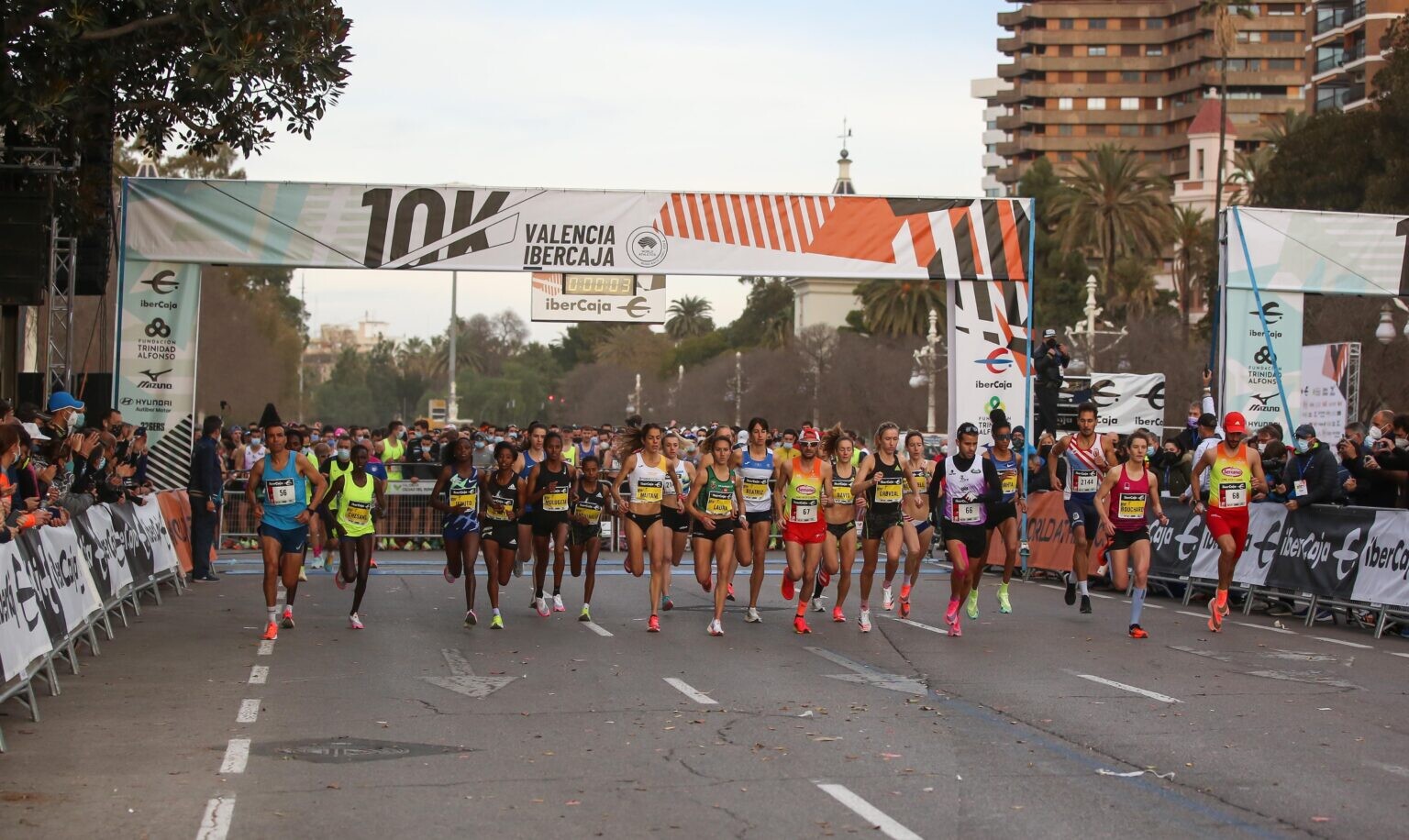
The Ethiopian will not be alone in this feat, as she will be accompanied by her compatriot Ejgayehu Taye Haylu, who holds the 5K world record (14:19, Barcelona 2021). Also, Norwegian athlete Karoline Grøvdal, who holds her country's national 5,000ml record and was recently proclaimed European Cross Country Champion, will try to achieve the European 10K record.
The fact that the two fastest women in the world in 10 and 5 kilometers on the road participate in the 10K Valencia Ibercaja is the result of the work done for many months led by the Sports Director of the event, José Enrique Muñoz Acuña.
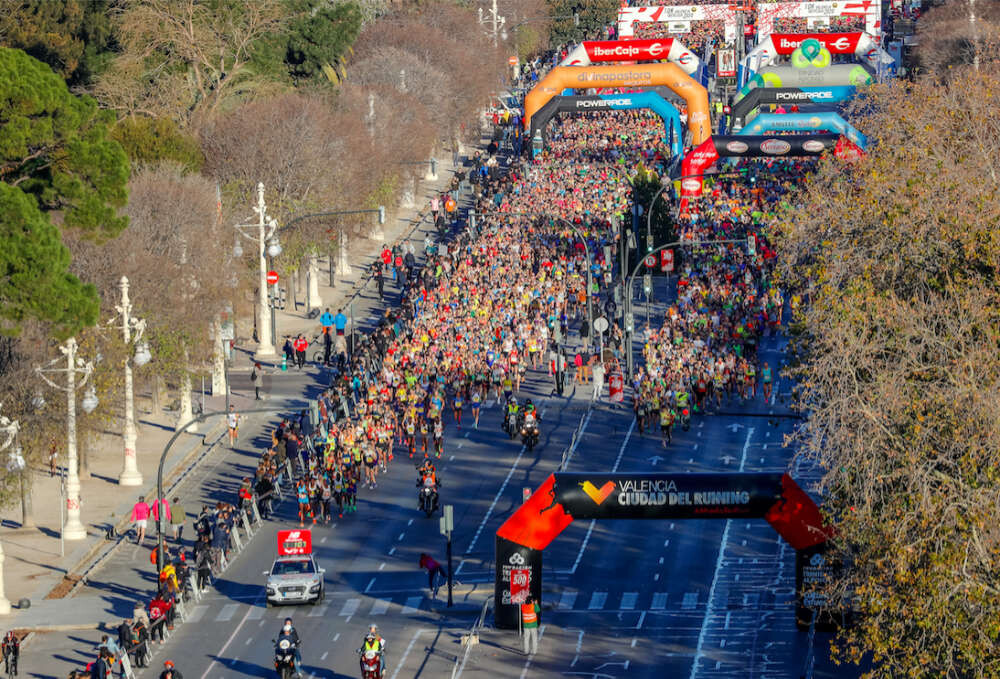
"It is a great pride to have the two athletes who hold the world record in 10K and 5K," said Acuña, who has advanced that the women's lineup continues to dazzle with other athletes who also have very important marks such as the national record of 10K (Meraf Bahta) and Half Marathon (Sarah Lahti) of Sweden or the 3,000m steeplechase of Germany (Kristina Hendel). "In women, we will have a total of eight U31 athletes, ten U32 athletes and nine U33 athletes," he explains.
International men's elite
As for the participation of elite male athletes, he highlights that the race will have four U27 runners led by the Ethiopian Hagos Gebrhiwet Berhe, who achieved the mark of 26:48 in Hengelo (2019). "We will have - adds Acuña - five U27 athletes, more than 20 U28 athletes, about 40 U29 athletes and around 100 U30 athletes."
In addition, up to six runners who hold national records in 5K, 10K or Marathon distances in their country, such as the French athlete Jimmy Gressier or the Burundian athlete Rodrigue Kwizera will also take the start in the Paseo de la Alameda, along with the Kenyan Jacob Krop, who won bronze in the last World Championship in 5000ml, or the athlete who achieved the Ethiopian national record in 3000mlm Getnet Wale.
"We want, in men, to approach the European record and, with the African armada, to look for sub 27 records and even approach the World Record, without being a specific objective of this edition". Thus, the 2023 edition "will be the most competitive of all editions. The best European athletes want to run the 10K Valencia Ibercaja, and we have been working for months in that direction".
"The goal of the race is to become more international year after year and reach more and more countries. We are a world reference for the distance and the best athletes want to run in Valencia," Acuña explains. The presence of athletes of up to fifteen different nationalities stands out. Among the most represented countries are Ethiopia, Kenya, France, Great Britain, Holland and Sweden.
Acuña has indicated that in the 10K Valencia Ibercaja "we will continue working to maintain the high level achieved in the 2020 edition when Rhonex Kipruto got the World Record (26:24), Julien Wanders the European Record (27:13) and Sheila Chepkirui the best female time of the circuit (29:46)".
(12/28/2022) Views: 631 ⚡AMP10k Valencia Trinidad Alfonso
Around the corner we have one more edition of the 10K Valencia Ibercaja, organized one more year by the C. 10K VALENCIA Athletics premiering the running season in Valencia. It is a massive urban race with more than 3,000 registered annually of 10 kilometers, where the maximum duration of the test will be 1 hour 40 minutes (100 minutes). The...
more...Five reasons your running Performance is not improving
Can’t seem to improve your running speed?
Why are you stalling?
What should you do to take your running performance to the next level?
If you’re looking for answers to these questions, then today you’re in the right place.
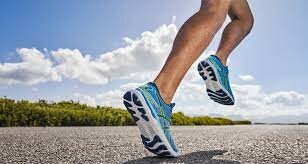
Here’s the PAINFUL TRUTH.
Even the most driven runners can see their running performance hit rock bottom.
Many things can trigger such a decline—most of them are fixable, but some more serious.
Knowing which is which—that’s where the challenge lies.
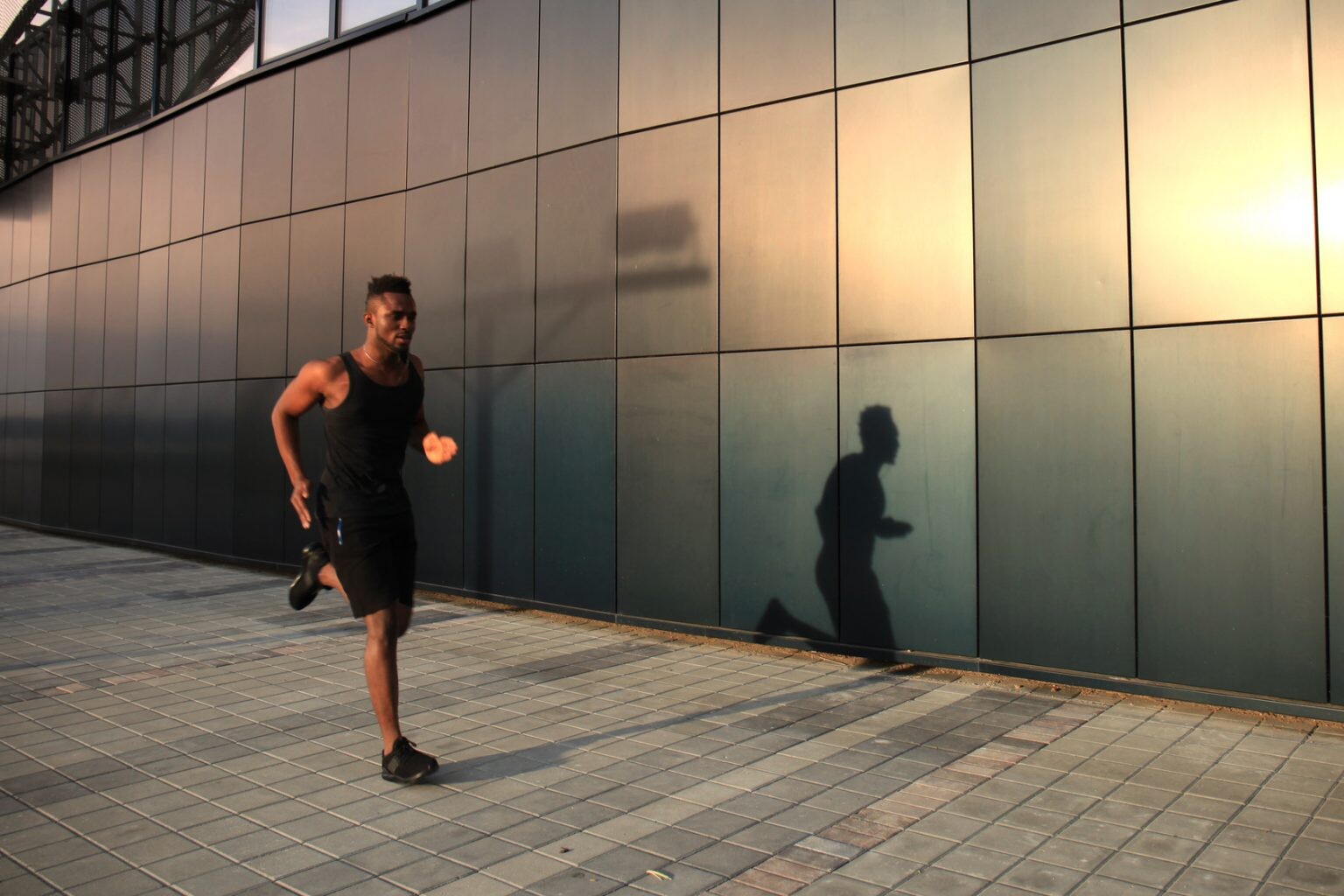
But fret no more.
Lets look at some of the main reasons you’re losing running performance as well as what to do to amend your situation—or prevent it altogether.
Sounds great?
Let’s lace up and dig in.
Note—Get checked by a medical professional to rule out any serious conditions such as heart, blood, thyroid, or other health issues as the culprit behind the decline in your running performance.
I’m not a doctor, nor do I play one on the internet.
1. Overtraining
The law of diminishing returns is a universal decree that applies to most aspects of life—training is no exception.
Assuming that you’re in good health and don’t have any underlying issues, the most likely reason you’re losing the spring in your step could be overtraining.
The Fix
To help prevent overtraining, alternate between hard and easy training days and take one day off a week.
On day one, you run hard, feel sore the next day then go easy for as many days as it takes for the soreness to subside.
For example, on Monday, Wednesday, and Saturday, do high-quality sessions, such as intervals, hill reps, and tempo workouts.
On Tuesdays, Thursdays, and Fridays, feel free to cross-train or run easy. Then, take a full rest day on Sunday.
You should also keep tabs on overtraining symptoms.
You’re likely in an overtrained state if you’re experiencing more than a couple of the following:
Elevated heart rate
Depressed mood and irritability
Loss of appetite
Chronic aches and pains
Fatigue
Poor sleep
Unwanted weight loss
Altered sleep patterns
Colds and the flu.
2. Not Eating Enough
Food plays a critical role in running performance.
Skimping on calories means mediocre performance and slower times.
That’s why when you’re logging serious miles, you’d need to make sure that your overall calorie intake fits your exercise level and body needs.
Just keep in mind that proper fueling before, during, and after running requires experimentation.
There’s no such thing as a universal rule that applies to everyone.
The Fix
It’s simple.
Eat more.
As a runner, your daily fuel needs exceed those of the average sedentary person.
It’s not uncommon for serious runners to have calorie needs exceeding 2,400-3000 calories per day.
What’s more?
Consume the right proportions of carbohydrates, protein, and fats (50%/30%/20% is a good guideline to follow).
As a rule, get your carbs from good sources such as veggies, fruits, and whole grains instead of processed foods.
You should also shoot for more protein after a hard run to help with recovery.
And don’t shy away from healthy sources of fat—they’re good for you.
Your pre-run choices also matter.
If you’re running hard or for more than 45 or so minutes, it helps to have something in the tank first before braving the outdoors.
I’d recommend any of these snacks.
What else?
Keeping your body well-hydrated is also key.
Proper hydration helps carry nutrients to your cells and flush out your organs.
Shoot for 60 to 90 ounces of water per day, depending on your training intensity, sweat rate, training duration, etc.
3. Respect The Weather
The weather has a great impact on your running performance.
Heat is, in particular, problematic as it impacts your athletic performance by raising your heart rate and making you prone to dehydration—which slows you down drastically.
Try running in 92 degrees heat with lots of humidity, and your chest will feel like it’s being compressed by an invisible vise a couple of miles in.
While it’s not as challenging as summer running, running in the cold is also tricky.
Snow, ice, wind, slippery surfaces, muddy trails, and freezing temperatures can wear on you and slow you down.
In other words, you simply can’t run as fast when the weather isn’t on your side.
The Fix
Running in weather extremes is the ideal opportunity to work on the skill of running by feel.
Instead of adhering to your typical pace targets, run by effort and time instead of pace and distance.
Focus on your breathing and how you feel.
Then re-adjust your pace accordingly—toss your GPS watch to the side.
4. You’re Doing The Same Runs
A common mistake many runners make is doing most of their training at the same pace.
But the truth is: if you want to push the pace, you need to run fast.
Different types of training trigger different types of physiological adaptation.
Low to moderate effort runs are key for building an endurance base, strengthening key muscles, and improving overall health.
The Fix
If you want to reach your running potential, you don’t want to repeat the same run every day.
During the course of a week, your running schedule should include a variety of running workouts from easy recovery runs to challenging race-pace intervals.
Easy, mild, and intense runs all have their benefits.
Each run has to have a purpose.
Don’t push too hard when your run is supposed to be easy, but when you have an interval session on schedule, give it your all.
Schedule at least one to two faster-paced workouts per week, like a simple fartlek session.
You can also perform strides to at the end of your easy runs a few times per week.
5. You’re Not Sleeping Enough
Your performance improves when your body recovers from and adapts to the training stimulus—a process that requires sleep, and lots of it.
Sleep can’t be overlooked, yet a lot of runners disregard it.
Your performance doesn’t improve when you’re cranking out hard reps during a track workout or going for a long run.
In fact, sleep time is your body’s prime time for repair.
Research has revealed that sleep-deprived athlete reports reaching a point of exhaustion about 10 percent faster than well-rested athletes.
What’s more?
Research has also shown that inadequate sleep can also result in increased fatigue, hormone irregularity, low energy, poor focus, mood swings, etc.
The Fix
Aim to sleep at seven to nine hours during the night’s time.
Do the following to improve your sleep.
Go to bed and wake up at consistent times.
Cultivate a cool-down and window routine before you go to sleep.
Avoid heavy dinners or stimulants in the two to three hours before going to bed.
Reduce blue light exposure in the evening.
Avoid consuming caffeine late in the evening
Conclusion
There you have it.
The above covers some of the most reasons why you’re losing your running performance as well as what to do about it.
The rest is just a matter of implementation.
(12/28/2022) Views: 1,123 ⚡AMPby Runner´s Blueprint
Michael Biwott place third at Hamilton Boxing Day Run
Michael Biwott and Ruth Cheboi of Karibu Sports Club settled for third places in their respective races in the 100th edition of the Hamilton Boxing Day Run in Ontario, Canada.
In the 10-mile men's category, Biwott, who was suffering from a hamstring injury and battling unfavorable weather conditions, against all odds obliterated the strong field to cross the finish line in 54:56.
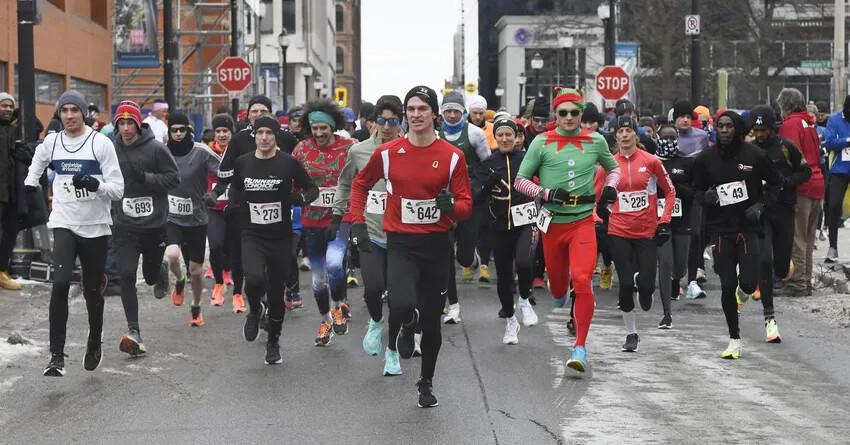
In the women’s four-mile category, Ella Heiss of Canada took the honors in the highly contested race in 38:04. USA’s Heather Kennedy placed second in 38:22 as Cheboi was forced to settle for third place in 38:57.
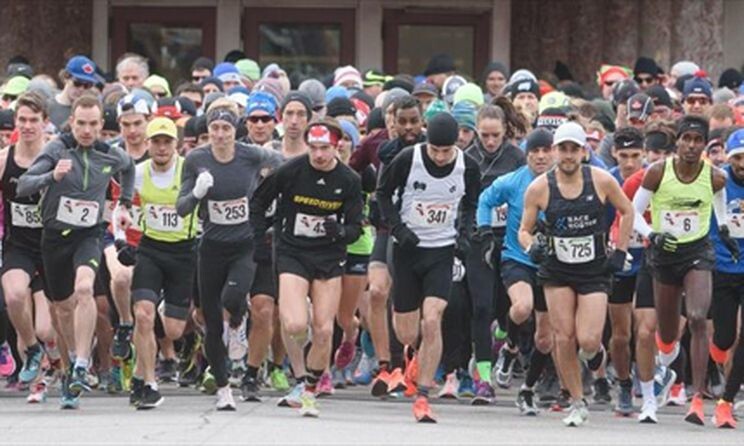
by Abigael Wuafula
Boxing Day 10 Miler
Come run our 100th event (2021). The course is both scenic and challenging, taking runners through Hamilton in Ontario. Snowman medal for all finishers (Gold Snowman medals for the very fast). Indoor registration, refreshments and awards. Spectators are welcome in the gymnasium. Change rooms with showers for entrants. All entrants will receive embroidered cotton baseball cap at bib pickup. At...
more...Run to redemption: Austin marathoner Mitch Ammons has won the race of life, too
When Austin’s Mitch Ammons qualified for the 2024 Olympic Marathon Trials at the California International Marathon on Dec. 4 in Sacramento people asked him what college he had run for. His answer was, “I didn’t.”
“Qualifying for the Olympic trials marathon without a collegiate running background? Almost unheard of,” said Ammons' coach, Jeff Cunningham.
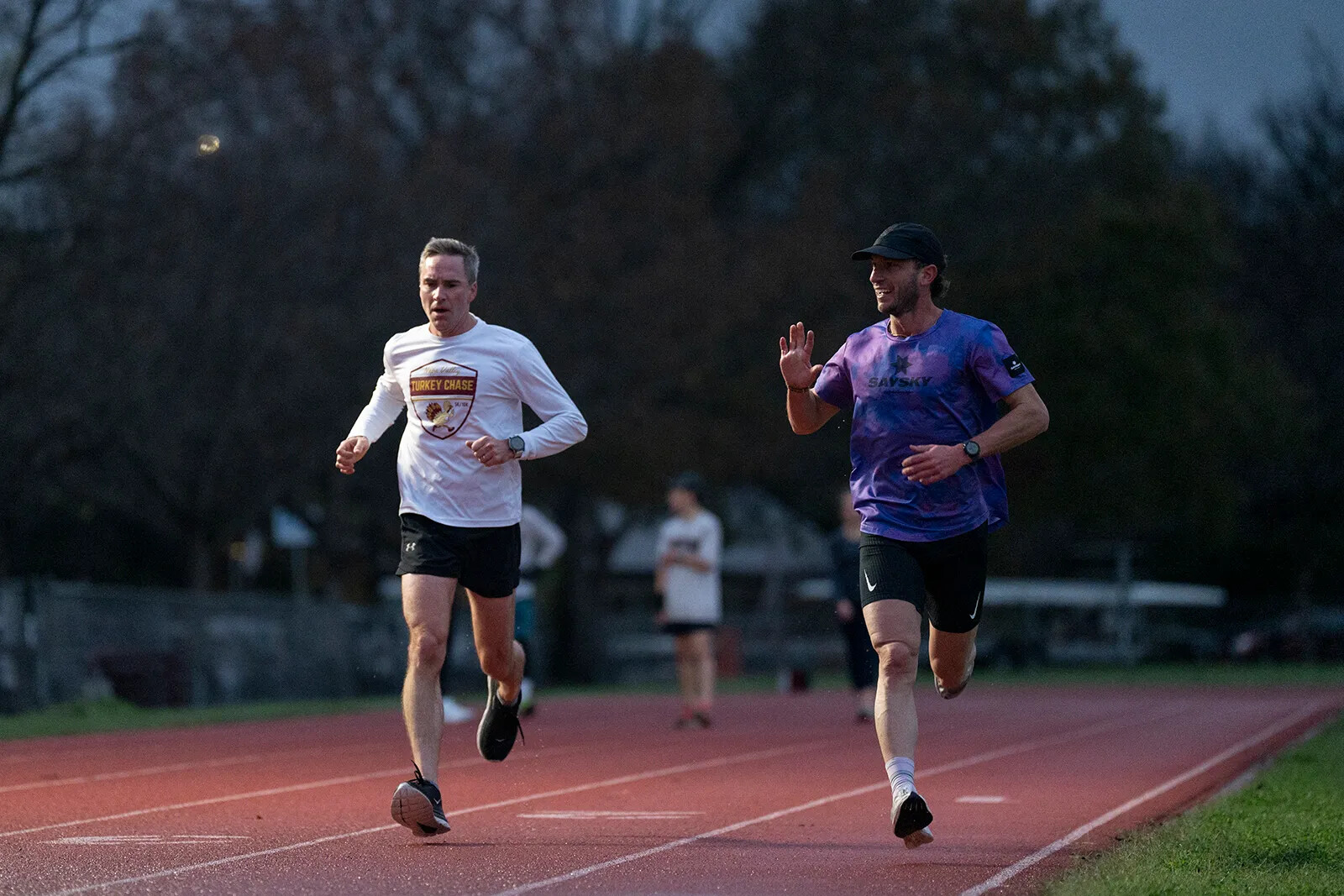
Ammons, 33, played football and ran track as a high school freshman at Dallas Bishop Lynch, even popping a speedy 4-minute, 50-second mile. But then he quit sports. He pretty much quit everything.
“That’s when drugs kicked in,” said Ammons. “I was hanging out with the wrong crowd.”
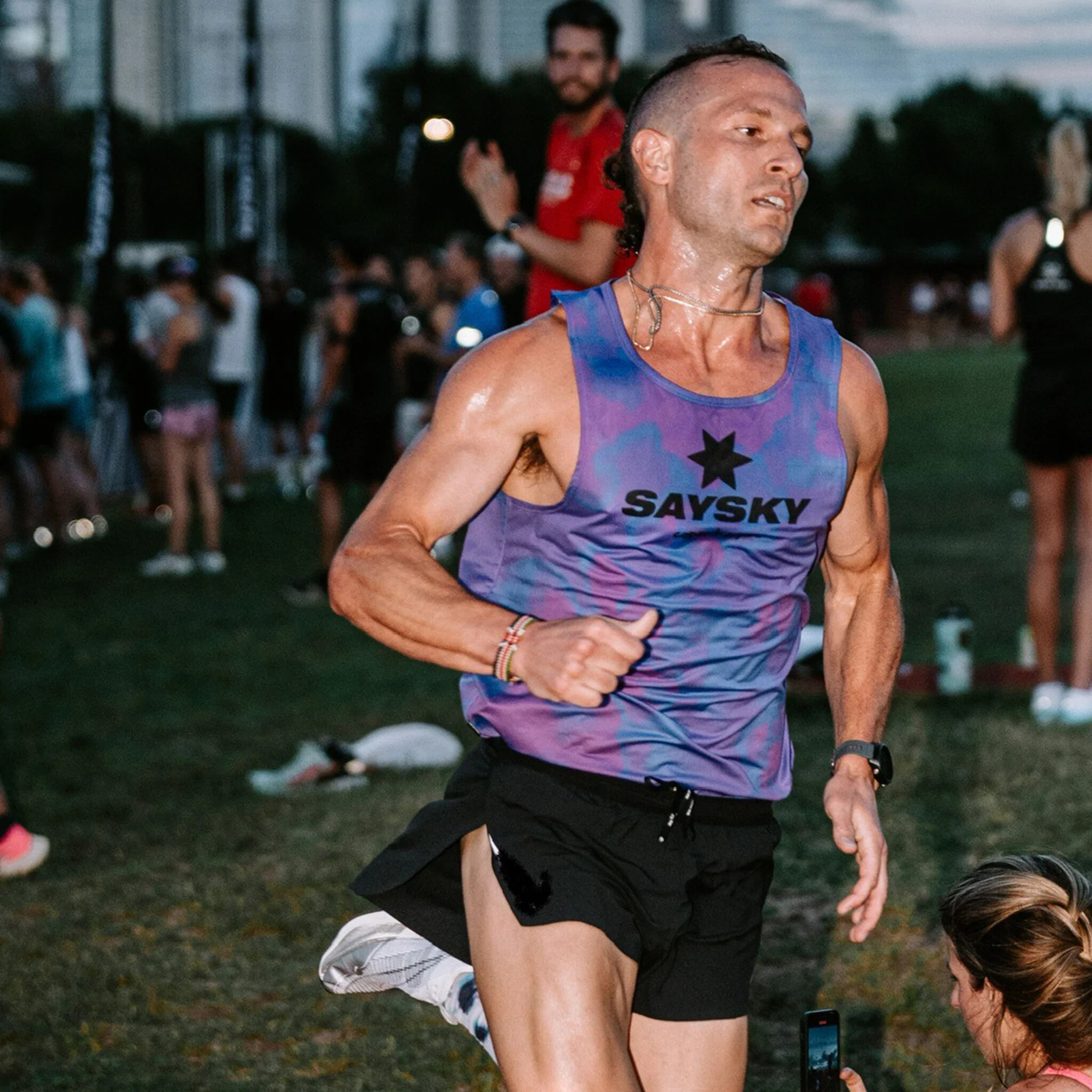
Ironically, Ammons went on to attend the University of Arkansas in the fall of 2008, an NCAA Division I distance running powerhouse. But he never thought about making the track or cross-country team, not even as a walk-on. Instead he partied, he said, escalating his marijuana habit to opioids.
“It was a slow progression,” Ammons said. “I went to the University of Arkansas to party. I started using Oxycontin my freshman year there and I loved it. It quickly became an addiction.
“I clearly remember the first time I had withdrawals,” he said. “I thought I had the flu, and of course took more Oxycontin and that fixed it. At that point I understood I was addicted. Oxycontin turned to heroin along with meth, because heroin was cheaper. I switched from pills and smoking it and started shooting up as a sophomore.”
Like many addicts, Ammons was in out and out of rehab — in his case, six times. He’d always relapse, sometimes the same day he got out. “I’d even try to smuggle drugs in to rehab,” Ammons said. “It’s amazing how much it takes over the survival part of the brain.”
But something finally clicked that sixth time at a rehab center in Kerrville, and when Ammons moved to Austin in 2015, that marked the beginning of his sobriety. Still, he wasn’t exactly in good shape. “I was a two-pack a day smoker and ate junk food and didn’t exercise at all,” he said.
But in January 2018, he joined Gilbert’s Gazelles, a local running program coached by nationally renowned Gilbert Tuhabonye. The long-lost spark of a budding high school miler — all but extinguished — caught fire. His path to redemption was clear.
“That was the beginning of my running journey,” said Ammons, who is an Austin real estate agent. “Gilbert said, ‘I don’t think you realize how good you are.’ He believed in me.”
Ammons got serious about his running a year later, and sought out Cunningham, who coaches a group of top-tier runners in Austin. It didn’t take long before he began hitting notable times, starting with a time of 1 hour, 7 minutes, 38 seconds at the 2019 Garry Bjorklund Half Marathon in Duluth, Minn.
“You can measure an athlete’s metrics in a lab and make predictions regarding their potential. But that does not tell the whole story,” Cunningham said. “Mitch has the ability to work through discomfort and to endure pain — the essence of distance running. He’s as tough as they come.”
In Oct. 2021 Ammons ran the Bank of America Chicago Marathon in 2:23:56 — placing 24th in a world major race. He followed that with a win at the 2021 BMW Dallas Half Marathon in 1:06:42 and lowered his half-marathon time still further a few months later, posting a 1:05:28 at the Aramco Houston Half Marathon in January of this year.
“That showed me I could probably break 2:20 (in the marathon),” said Ammons, who by then had his eye on an Olympic marathon qualifying time.
“It turned out Mitch had a fever during the Aramco Half,” Cunningham said. “He had appendicitis, and a few days later was in the hospital having an emergency appendectomy. That epitomizes everything he is as a competitor. His ability to endure pain is off the charts. I was concerned about his health but impressed nonetheless.”
Under the watchful eye of Cunningham, Ammons built up to running 110 miles a week, training with top area runners David Fuentes and Ronan O’Shea. The 2024 Olympic marathon trials qualifying time is 2:18:00 or better, a one-minute drop from the 2020 standard of 2:19:00. But Ammons was ready.
“As a runner you don’t really know your potential until a race clicks, and then the confidence starts to compound,” said Fuentes, a two-time Olympic marathon trials runner and the 2022 Statesman Capitol 10,000 champ. “Mitch has been training with some of the best runners in Austin, and he’s flourished as a result. It’s been a remarkable progression.”
“My coach gave me a very different buildup from previous ones, focusing on tempo runs,” Ammons said. “I nailed every workout. On one 21-mile training run, I averaged 5:08 per mile for the second half of it. Headed into CIM, I was confident I could run a good race.”
At the California International Marathon, Ammons made it through the halfway mark in 1:08.30 and then he said he picked it up. "It hurt, but I tired to get every bit out of my legs that I could," he said.
And that’s exactly what he did. Seven years after going sober, Ammons crossed the finish line at CIM in 2:16:48, qualifying for the Olympic trials in Orlando that are scheduled for Feb. 3, 2024. To date, only 106 men have met the standard, including another area runner Will Nation, former Cedar Park High School runner Parker Stinson and former Vista Ridge High runner Zachary Ornelas.
“It took a couple of days for it to really sink in," Ammons said. "It was pretty emotional to think of where I was seven years ago and where I am now. I’m living a life beyond my wildest dreams. I never, ever thought I’d be where I am today.
"I attribute running to all the positive changes in my life: my friends, my job, everything," he continued. “Running has taught me so much. You could say I wasted a large amount of my young adult life. But I have no regrets. I probably wouldn’t be who I am today without those struggles.”
(12/27/2022) Views: 833 ⚡AMPby Brom Hoban
California International Marathon
The California International Marathon (CIM) is a marathon organized by runners, for runners! CIM was founded in 1983 by the Sacramento Running Association (SRA), a 501(c)(3) non-profit organization. The SRA Board of Directors is comprised of runners with a combined total of 150+ years of service to the CIM. The same route SRA management created for the 1983 inaugural CIM...
more...These super simple exercises to become a better runner
There comes the point where it is not enough to go running 5 or 10 kilometers and try to make it faster than the previous time, you are looking to become a better runner.
If you want to become a better runner, make sure you acquire a reliable technique and do the proper training before you start adding kilometers to your training routine. Set a schedule and look for different ways to motivate yourself to maintain consistency, rain, shine or sunshine.
Last but not least, you will have to practice to improve your endurance and your speed, using techniques such as uphill slope races, continuous races, and athletic track training. Regardless of the level you have, you can be a better runner if you make training a priority.
1.- Single-leg squat
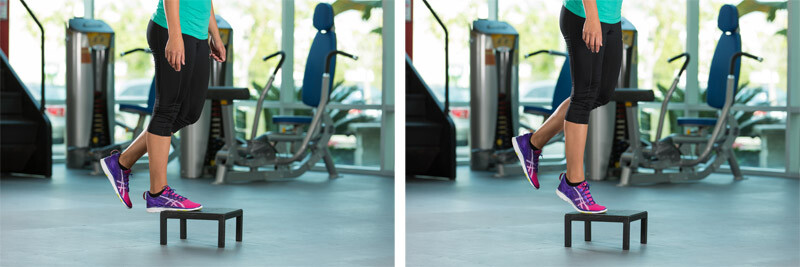
As a runner, you need to have strong and healthy legs to be able to run many kilometers more efficiently.
Squats are one of the best ways to strengthen your legs. And although sometimes it can be hard to stop running for a day for strength training, the benefits of these exercises are well worth it.
The squat is a multi-joint exercise that strengthens the hamstrings, hips, quadriceps, and glutes. It is a simple exercise to do. However, it is essential to know the proper technique of this exercise to make it as effective as possible, especially in this case, it will be with only one leg.
The method of single-leg squats
During this exercise, as its name says, you must do it with one foot. You can start with the one you want, you can place the foot that will be in “rest” it in front of your body, as in the image below.
Keep in mind not to bend your back: it has to be straight. Pull out the chest with the shoulders back.
Unlike a squat with both legs, in this case, your leg should be at a mid-point for balance, the leg that “rests” also helps maintain stability.
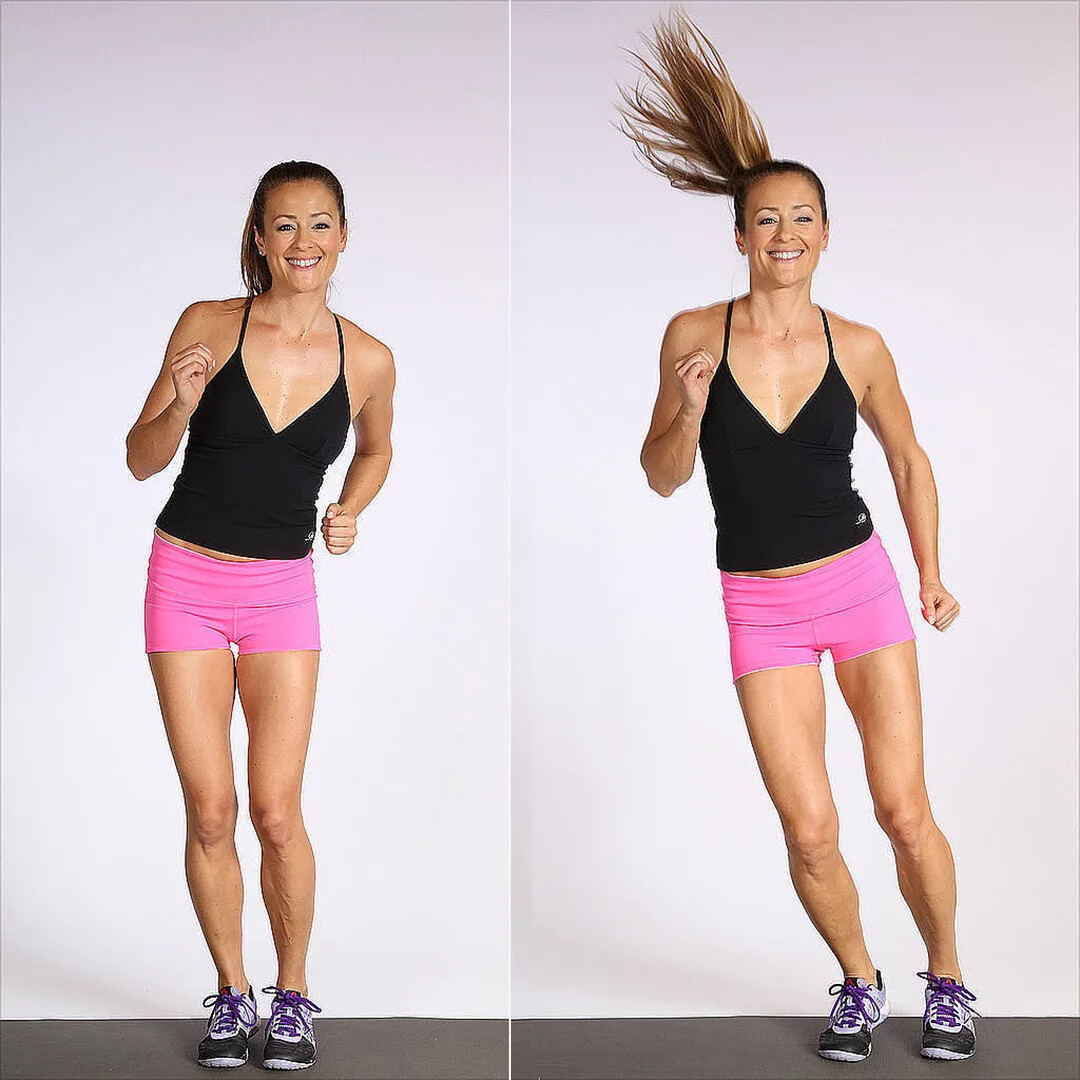
Keep your back as straight as possible, bend the knee until you are seated: the buttocks go backwards. The back is slightly inclined forward, and the knee does not have to pass the length of the foot.
Once in this position, you should feel that your glutes and thighs are working. The most important thing is to keep the body firm and not loose balance.
To return to your initial position, anchor your feet on the floor to avoid any imbalance and push up with your legs. You can contract the buttocks during the rise to make the exercise more effective.
In the beginning, it can be complicated, mainly to go down, for not having the balance and strength necessary, but do not worry, you will improve with practice. As you progress, you can add discs or dumbbells to add difficulty.
5 reasons why you SHOULD include them in your routines
1. To help with the strength of your hip.
The hip plays a super important role in your runner body since it prevents your body from “moving” while you run. But by working your hip, you can direct your movements more effectively.
2. To improve your posture.
Now you know! The posture of a runner is everything, and squats help your trunk stay straight while you run.
By having an adequate posture, your performance will improve. Checked.
3. To gain strength in your glutes.
Did you hear that the squats are perfect for your glutes? It is accurate, and the physical work that you can develop in that part of your body is essential to improve your running technique.
4. To improve strength in your legs.
Who does not want strong legs? Especially when running, they are our biggest asset as runners, and with squats, you can strengthen them, and improve your coordination to develop a more efficient stride.
5. To help improve your stride.
Yes, according to what the previous point says, performing squats allows your legs to assimilate the effort to take a more efficient stride, and if you develop these exercises with slurs, your benefit will be better.
How often to do squats?
Three to five series, of 5 to 10 repetitions twice a week.
2.- Heel raise
The exercise of elevation of heels aims to train the calves, which are an essential part of the leg’s muscle group. It is a little forgotten part of the body, as far as the time dedicated in training, but indispensable for the proper functioning of the inferior trunk.
To execute this exercise correctly, some kind of step is necessary. A resistant platform of at least 6 inches that allows you to do the exercise comfortably. It is a movement that must be carried out slowly and concentrating the effort in this area of the body.
One important aspect must be taken into account before performing the exercise. Correctly doing the movement requires balance and practice. We recommend, in the first sessions, to execute it with your own weight, without dumbbells. It is easy to lose balance and work both legs equally. We usually tend to make more effort with one of the two legs, you should avoid it.
Undoubtedly the calves are one of the most involved muscles in the race. The heel elevation is an exercise that enhances the stride but also protects the runner from many injuries.
In your weekly routine, you must not miss a heel raise exercise in one of its variants.
When we hit the ground with the foot, the ankle maintains its stability thanks in large part to the calves. They prevent the footfall from sinking and help to perform a more effective and explosive impulse phase.
Stronger calves will allow us a better technique, something fundamental to improve the training. Another aspect of working the calves is their protective effect against sprains of the ankle or possible inflammations or lesions of the Achilles tendon. A running workout involves thousands of impacts on the ground, something that can affect the joints in the Achilles tendon. Strengthening calves with this exercise will minimize injuries that may affect the area.
The method of the heel raise
Standing on a raised platform, support the metatarsal, leaving the heel protruding and falling slightly.
If we want to increase the intensity, we can put a bar on the shoulders, although I advise you to hold dumbbells with your hands.
Maintain a straight position and begin to raise the calves little by little, extending the ankle. Try not to lose balance and control the movement at all times.
Safety tips when performing heel raises:
It is very common to suffer a small rupture of the calf by overloading it with this exercise. At first, it will be enough to do it without weight, paying attention to the technique and marking the rise and fall correctly. Nor should rebounds be made when we get down.
When you put your feet on the elevated platform, try not to be too close to the edge, because you are going to overload the area of the fingers and the exercise will not be so effective for the calves. The feet should be half in and half out.
Main benefits of heel raise to become a better runner
Strengthens the calve’s musculature: as we have said before, this exercise focuses mainly on working the calves. Thanks to the heel raise, the calves will be strengthened, which will generate better balance in the legs.
Ideal for runners: it is an exercise that enhances the momentum of the stride, in addition to protecting the runner from many other injuries. For this reason, it is an essential movement for runners. You will gain resistance and explosiveness.
With this exercise, you will tone the lower extremities and gain strength in the calves. Also, it is an ideal movement to recover after an injury in the ankle joint.
How often to do heel raises?
Three to five series of 5 to 10 repetitions twice a week.
3.- Three-dimensional hops
You can’t deny that at some point in your childhood you jumped just for fun. It was a pretty fun game that you could share with your friends. At some point in life, we stop practicing it, without realizing that now, as runners, we can benefit from it more than we imagine.
Jumping burns approximately 10 calories per minute and is an excellent activity to finish a running session, or even to relieve stress. What are you waiting for to start doing it! Go back to that time of your childhood and exercise.
This type of jump is based on increasing calf strength, as well as adding explosiveness. In general, jumping and other plyometric activities make the tendons more efficient to absorb and transmit energy.
The impact of the jump also stimulates bone growth and should protect against stress fractures.
The calf is a kind of spring when we talk about running or jumping. The three-dimensional jump is an exercise that offers a different way of exercising and strengthening the muscle and tendons since the movement is made to the sides and not only upwards as a typical leap. This increases endurance, it also builds movement ability and general agility.
Three-dimensional jumps are made with both feet, they are of low intensity, and it is a safe exercise that does not cause injuries.
The method of Three-dimensional hops
These are short, low and fast jumps, to all sides, forward, back, sides, and in a rotating motion.
Basically, it is about jumping and landing in each of the directions as specified in the previous paragraph. You can do it with both feet, which is equal to two contacts. If you do it with one foot equals one contact, so you do half for each leg.
Jump from side to side, as if there was an imaginary line.
You should not bend your knees to take more momentum, remember that they are short jumps, try to make them fast.
In the case of jumps with rotation, your chest should always remain static.
Benefits to become a better runner
1. It will help improve your cadence and stride.
2. You will burn calories.
You can burn up to 300 calories per 30-minute session.
3. Tone your body.
It is a very effective exercise since it works your whole body and also strengthens it. That is the reason boxers do it all the time.
4. Help with your concentration.
Jumping, even for experienced runners, is not easy, so it will allow you to have a demanding level of concentration, while you begin to master it.
5. It gives you muscular resistance.
As it is a continuous exercise, your resistance will improve considerably, while you gain strength.
6. Improve your aerobic conditioning.
At first, it will be challenging to hold the jump, but you will see how little by little your breathing improves and you will stand more time, and you will even get to do it faster.
7. Increase your power.
By working your legs, you will improve your stride, and with it, your power and speed.
8. It is a super practical exercise.
You can basically jump anywhere.
9. It allows you to work your entire body in one exercise.
Legs, torso, shoulders, arms, abdomen, are the parts of the body that you can exercise.
10. It’s fun.
We assure you that in addition to working your body, you will have fun as in the old days.
How often do Three-dimensional hops?
Unlike the previous exercises, the series and repetitions are different.
Beginner: 80-100 standing contacts
Intermediate: 100-120 standing contacts
Advanced: 120-140 standing contacts
You must jump quickly and keep your feet on the ground the shortest time possible.
Do this 2-3 times per week.
Finally, improving your cadence for running is a great way to improve.
(12/27/2022) Views: 808 ⚡AMPby Runners On Fire
12th Jerusalem Marathon set for March 17, 2023
The International Jerusalem Winner Marathon will be held on Friday, March 17, 2023 for the 12th time, and will mark its “Bat Mitzvah” year with the participation of tens of thousands of runners from all over Israel and around the world.The Jerusalem Marathon is part of a distinguished list of international marathons and is considered one of the most beautiful and challenging in the world.
The uniqueness of the marathon stems from a track that includes important and historical landmarks in Jerusalem, alongside spectacular and breathtaking views, among them: the Supreme Court of Israel, the Israel Museum, the President’s Residence, the walls of Jerusalem surrounding the Old City and the Armenian Quarter, the Tower of David, the Khan Theater and the Sultan’s Pool.

The event is a celebration for the city of Jerusalem, when tens of thousands of visitors visit the city and the local businesses during the marathon weekend, with local businesses and hotels offering discounts, special travel packages, and more.
“We are excited to announce the opening of the Jerusalem Winner Marathon events and celebrate 12 years of activity, in which hundreds of thousands of runners from Israel and around the world participated,” said Jerusalem Mayor Moshe Lion. “Jerusalem invites professional athletes and sports enthusiasts to register and take part in one of the most remarkable sports events in Israel, while enjoying an unforgettable running experience that includes getting to know significant landmarks in the history of Jerusalem.”
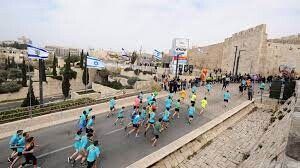
More than sports
Not only a sports event, the Jerusalem Marathon is considered a special social and community happening, in which dozens of associations take part in the community race (0.8 km), among them: Chaiyanu, Isha L’Isha (Woman to Woman), Shalva, Runners Without Borders, Bat Melech, Keren Gefen and Home Base.
Registration for the marathon is open and includes six races: Full marathon (42.2 km); Half marathon (21.1 km); 10 km race; 5 km race; Family race (1.7 km); and Communities race (0.8 km).
The International Jerusalem “Winner” Marathon is headed by the Municipality of Jerusalem, in cooperation with the Jerusalem Development Authority, with the support and assistance of the Minister of Jerusalem Affairs and Heritage, the Ministry of Culture and Sports and the Ministry of Tourism, primarily sponsored by Toto-Winner.
The runners registered for the marathon will receive a package including; an official SAUCONY Dri-FIT race shirt, a personal competition number, a disposable timing chip, as well as other benefits. Additional sponsors for the marathon: Mey Eden, Hapoel Sport Association, Eldan, Cinema City, Reidman International College and Bezeq Business. The marathon is produced by Electra Target.
(12/27/2022) Views: 770 ⚡AMPJerusalem Marathon
First held in 2011, the Jerusalem International Winner Marathon has become a major event with 30,000 participants, of which hundreds are elite competitors and runners from abroad. The course was especially selected to recount Jerusalem's 3,000-year historical narrative since the beginning of its existence. The race challenges runners while exposing them to magnificent views, exquisite landscapes and fascinating historical sites...
more...Adidas joins Dubai Marathon 2023 as key partner
Adidas launches three community training programs for participants to run their best marathon: adidas Runners Marathon, Women’s First 10K Program and Speed Squad.
The Dubai Marathon is back on February 12, 2023, with adidas chosen as a key partner and lead sponsor for the much-awaited sporting event in the region.
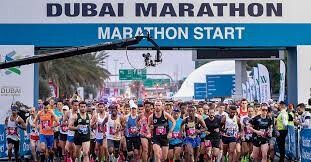
The 22nd edition of the Dubai Marathon is expected to attract more than 30,000 resident and international participants who will be descending on the Emirate to run across three races - the full marathon, the popular 10km road race and the 4km Fun Run. Named one of the world’s fastest marathons, the route will take runners through the popular Umm Suqeim, Jumeirah Beach and Al Sufouh roads, with iconic landmarks of Burj Al Arab, Madinat Jumeirah and The Westin Dubai Seyahi in the backdrop.
As part of this year’s marathon, adidas has launched three programs to give runners a leg up and achieve their personal bests. The initiative also aims to strengthen the running culture in the UAE with a focus on race prep, panels and discussions, nutrition and recovery, and exclusive experiences.
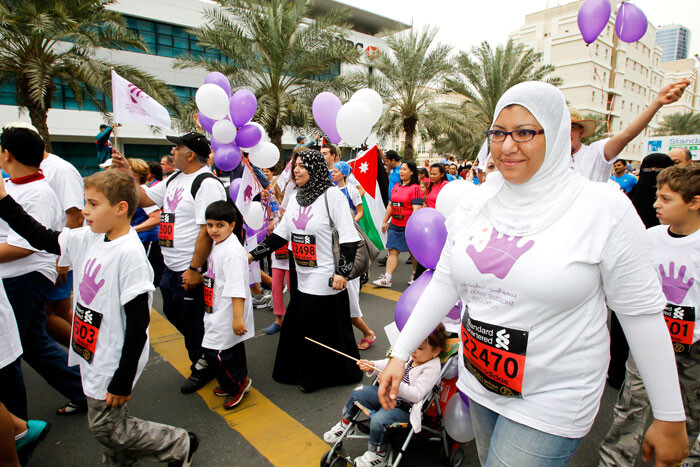
The adidas Runners community 12-week Marathon Training Program, led by the adidas coach teams, has three sessions a week to help enhance runners’ foundational sport and running performance. The program focuses on the full holistic approach that includes Mobility, Strength, Mindset, Nutrition, recovery and running. The program will be complimented by panel talks, discussions focusing on race prep, running gear and many other topics covered by the adidas Runners coaching team to support all runner to be ready for the big day.
The Women’s First 10K Program is aimed at female runners in the MENA region who want to conquer their first 10KM race. The program aims to give 100 first time female runners an inclusive, judgment free and supportive safe space within the adidas Runners Womens Squad to help them achieve their goals.
The Speed squad has been designed for Dubai runners who are chasing the ultimate marathon goal (sub3:15 for Women and sub3 for men – completing the marathon under 3 hours) giving a group of amateur runners an elite bespoke training experience. 12 candidates (6 men and 6 women) were selected from over 60 applications to this unique program. adidas will highlight the journey of these athletes on social media with a range of informational content as they work towards their goal.
(12/27/2022) Views: 898 ⚡AMPDubai Marathon
In its relatively brief history (the race was first held in 2000), the Dubai Marathon has become one of the fastest, most respected and the most lucrative marathon in the world in terms of prize money. Each year thousands of runners take to the roads in this beautiful city in the United Arab Emirates (UAE) for this extraordinary race starting...
more...

